Colorado was first explored and settled entirely for the purpose of mining. Starting in 1858 with the Colorado Gold Rush, numerous discoveries of gold and silver resulted in the establishment of mining camps throughout the state.
Some of those camps were quickly abandoned, some became small towns that lasted a few years or even a few decades before becoming ghost towns, while others became great cities that still endure today.
The following tour of Colorado mining towns is organized by county, and represents the current contents of the Colorado Mining Towns database at Western Mining History. There are more towns that need to be added to the database, and this list will be updated periodically as updates are made.
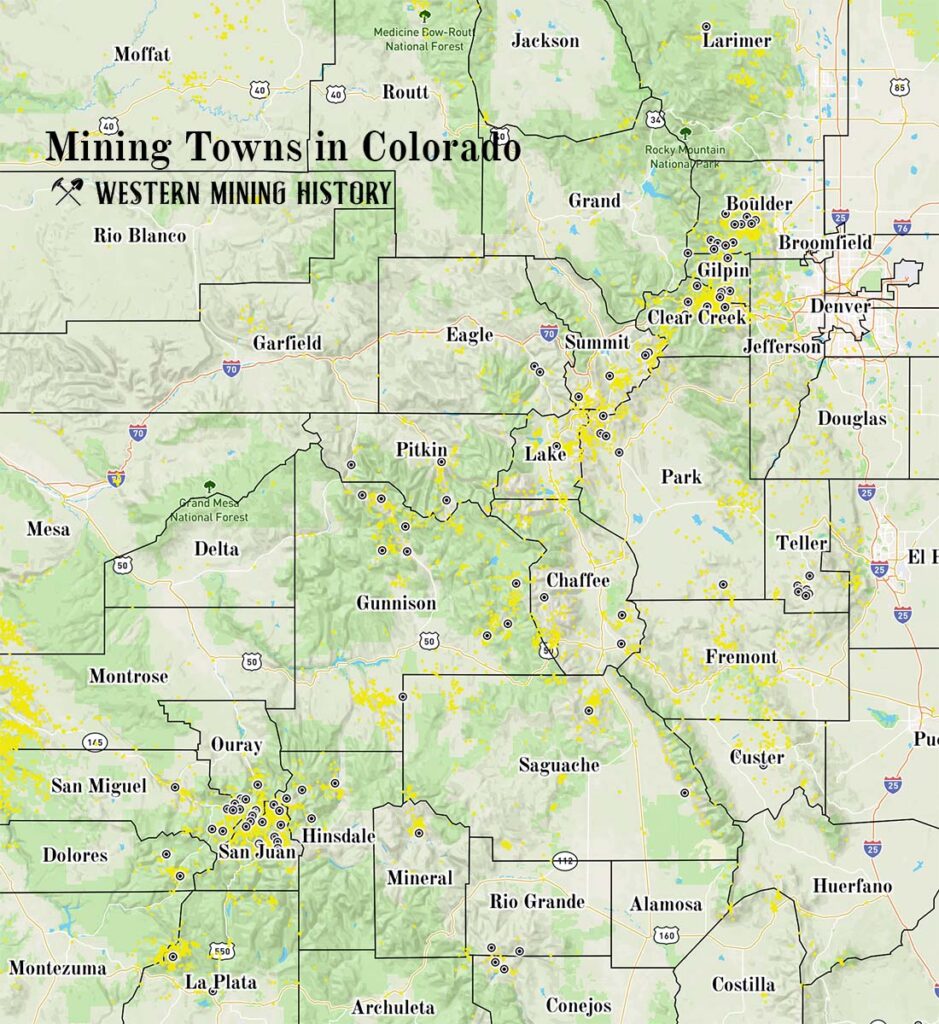
To understand how WMH classifies ghost towns, see the following article: What is a Ghost Town? WMH Town Classifications Explained
Boulder County
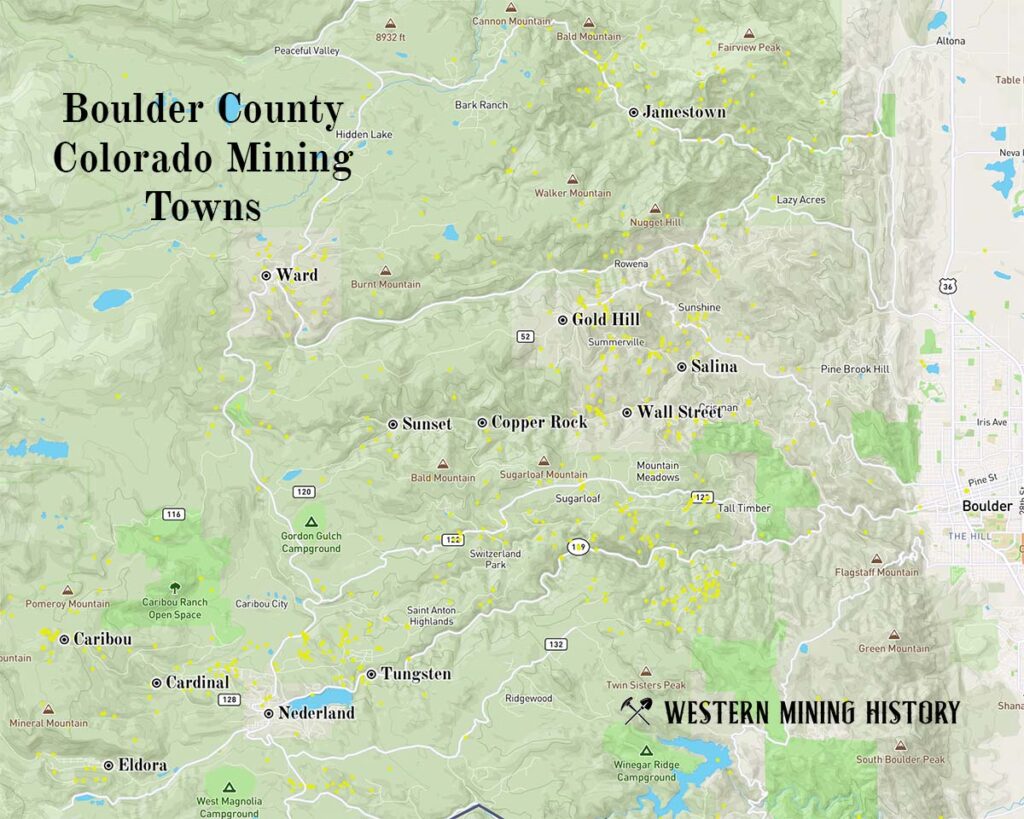
Cardinal
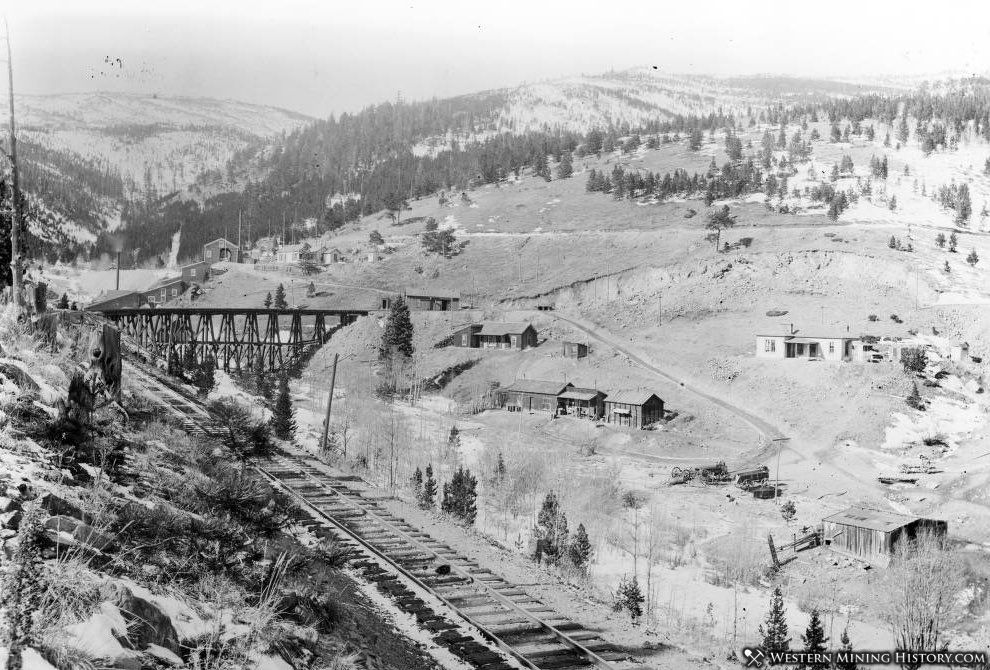
Date Settled: 1872
Status: Ghost Town
Cardinal may have started as a simple mining camp, but it gained notoriety as a center for saloons, gambling, and brothels for the Caribou district. The founding fathers of Caribou were opposed to these activities in their town, so enterprising saloon owners and madams opened their businesses a couple miles away at Cardinal.
Caribou
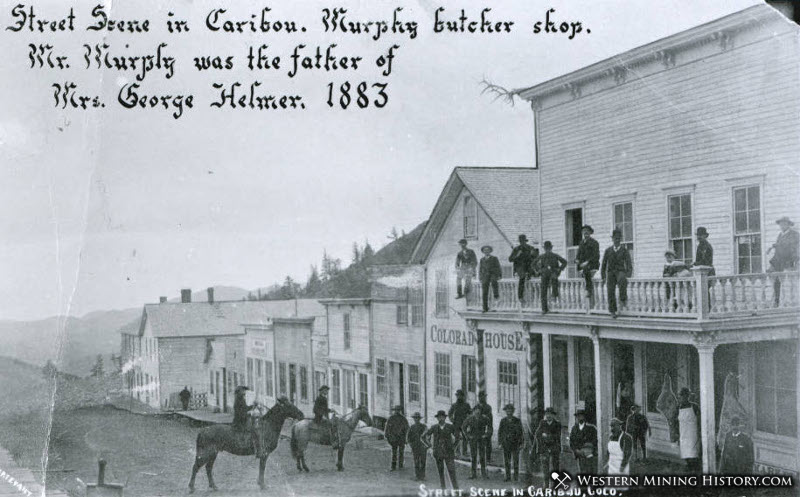
Date Settled: 1870
Status: Ghost Town
Settled in 1870, Caribou was the state’s first great silver camp. At its peak in 1875, the town’s population was estimated to be about 3,000 people. This important early mining city was located at an elevation of almost 10,000 feet above sea level.
Copper Rock
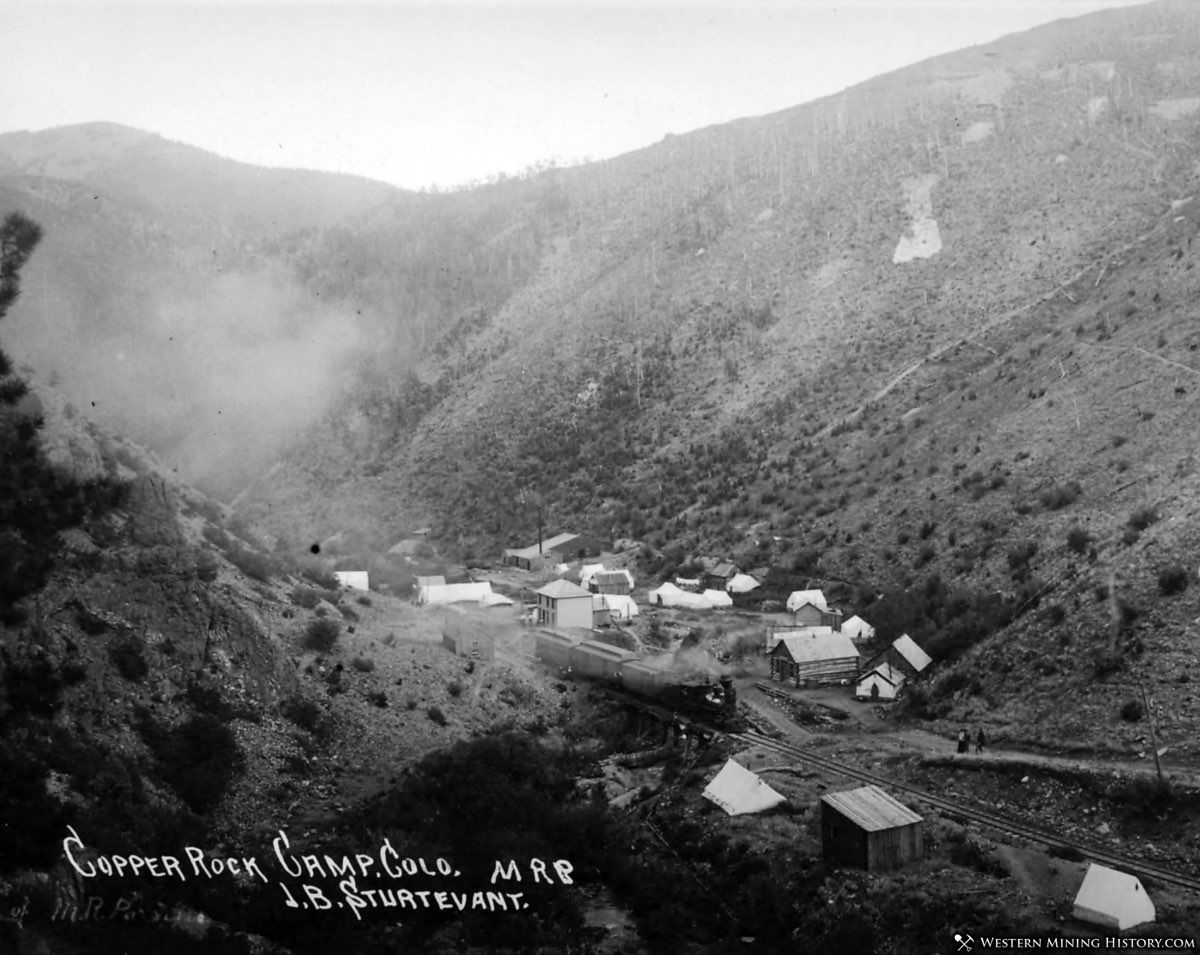
Date Settled: 1892
Status: Ghost Town
Located in Four Mile Canyon west of Boulder, Copper Rock was the location of a small mining excitement in 1892. In 1894 the town experienced a devastating fire in Februrary, was completely destroyed by a flood in June, and destroyed again by wildfire in November.
Eldora
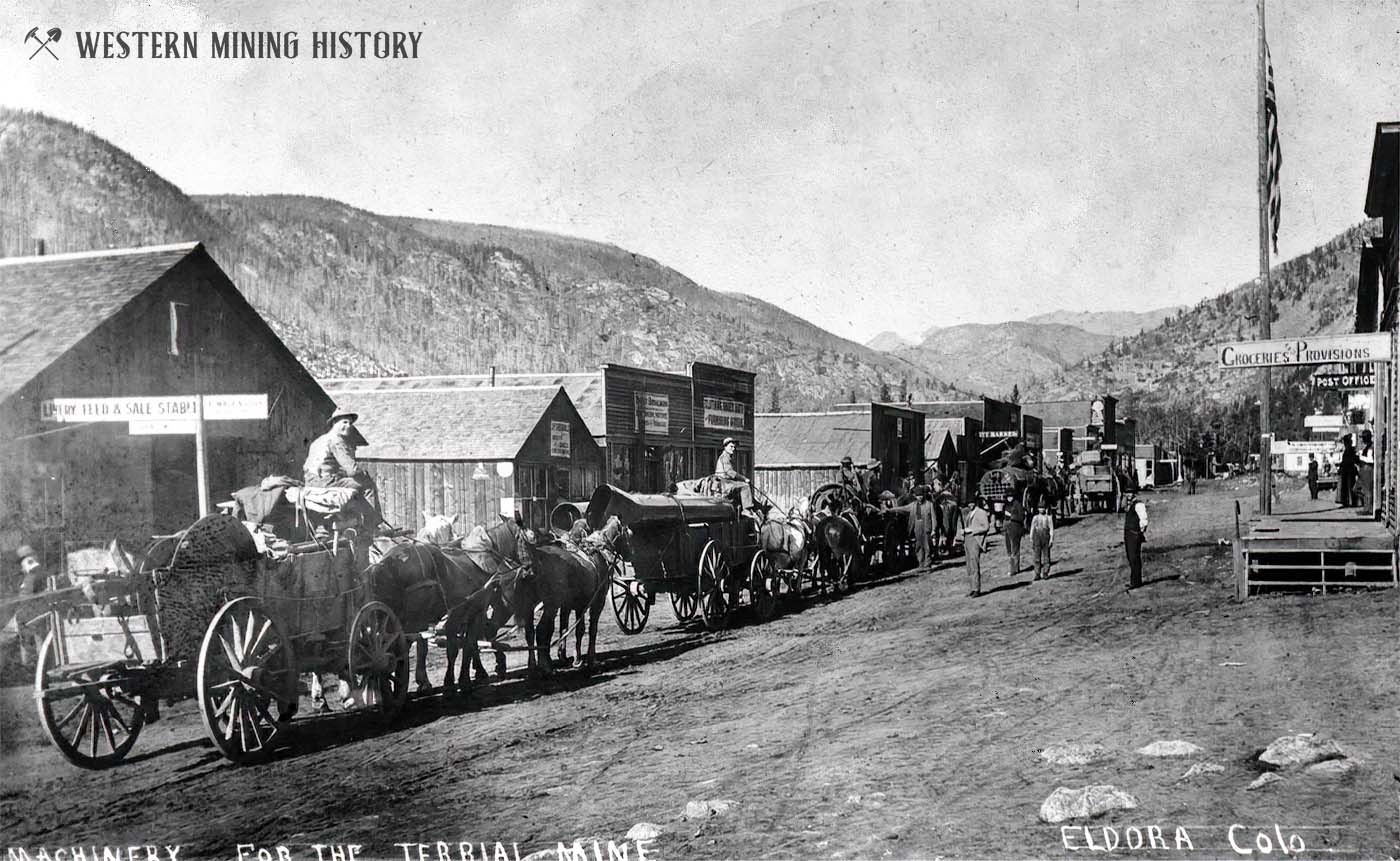
Date Settled: 1859
Status: The Eldora ski resort and summer cabins support a small number of residents.
The area around Eldora was prospected intermittently since the 1860s. Small placers were sometimes worked but the district never took off until 1891 when the Happy Valley placer mine was located. This new gold discovery kicked off a new excitement and the town of Eldora was established. Growth was slow at first but by 1897 the town had a post office and an estimated population of around 1,000.
Gold Hill
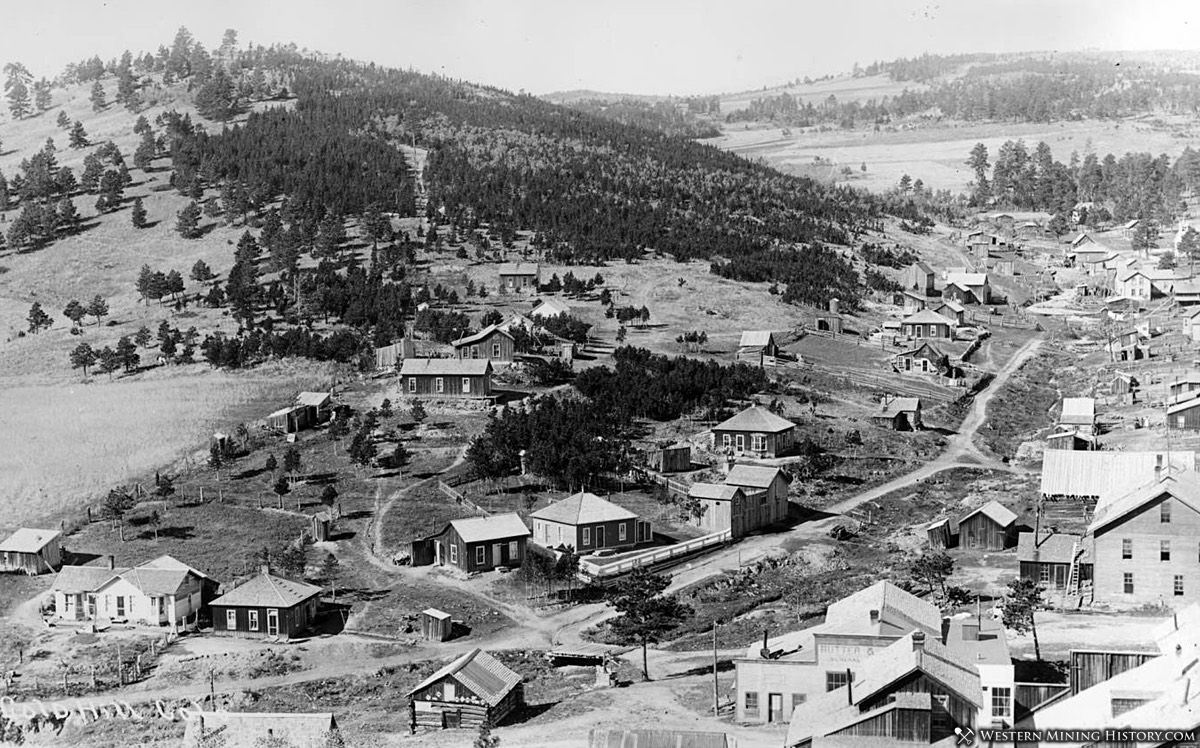
Date Settled: 1859
Status: Active Town
Gold Hill was settled near the first discovery of lode gold in the territory in early 1859. Some sources claim that this was the first permanent settlement in the state. Gold Hill remains an active community today.
Jamestown
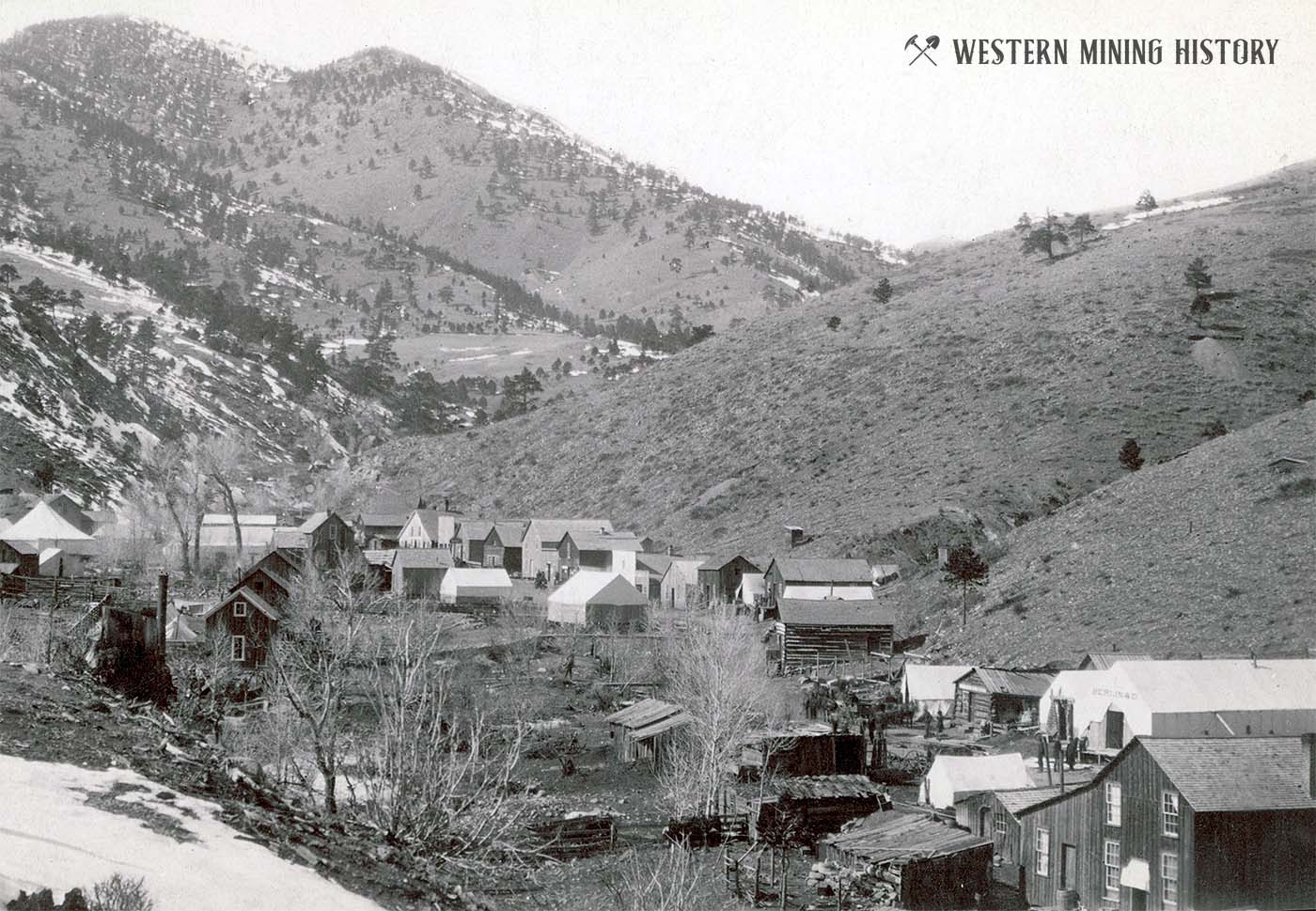
Date Settled: Around 1876
Status: Near Ghost Town
Gold ore was discovered in 1865, and sometime between 1876 and 1881 the settlement of Jamestown was founded. During Jamestown’s boom years, the town was said to have several miles of tents consisting of saloons, dance halls, gambling parlors, and cribs.
Due to its location in the lower part of a narrow canyon, Jamestown has been prone to severe flooding. Notable floods in 1894 and 1969 destroyed much of the town. Severe flooding again damaged the town in the Fall of 2013, and as a result 90 percent of the town was relocated.
Nederland
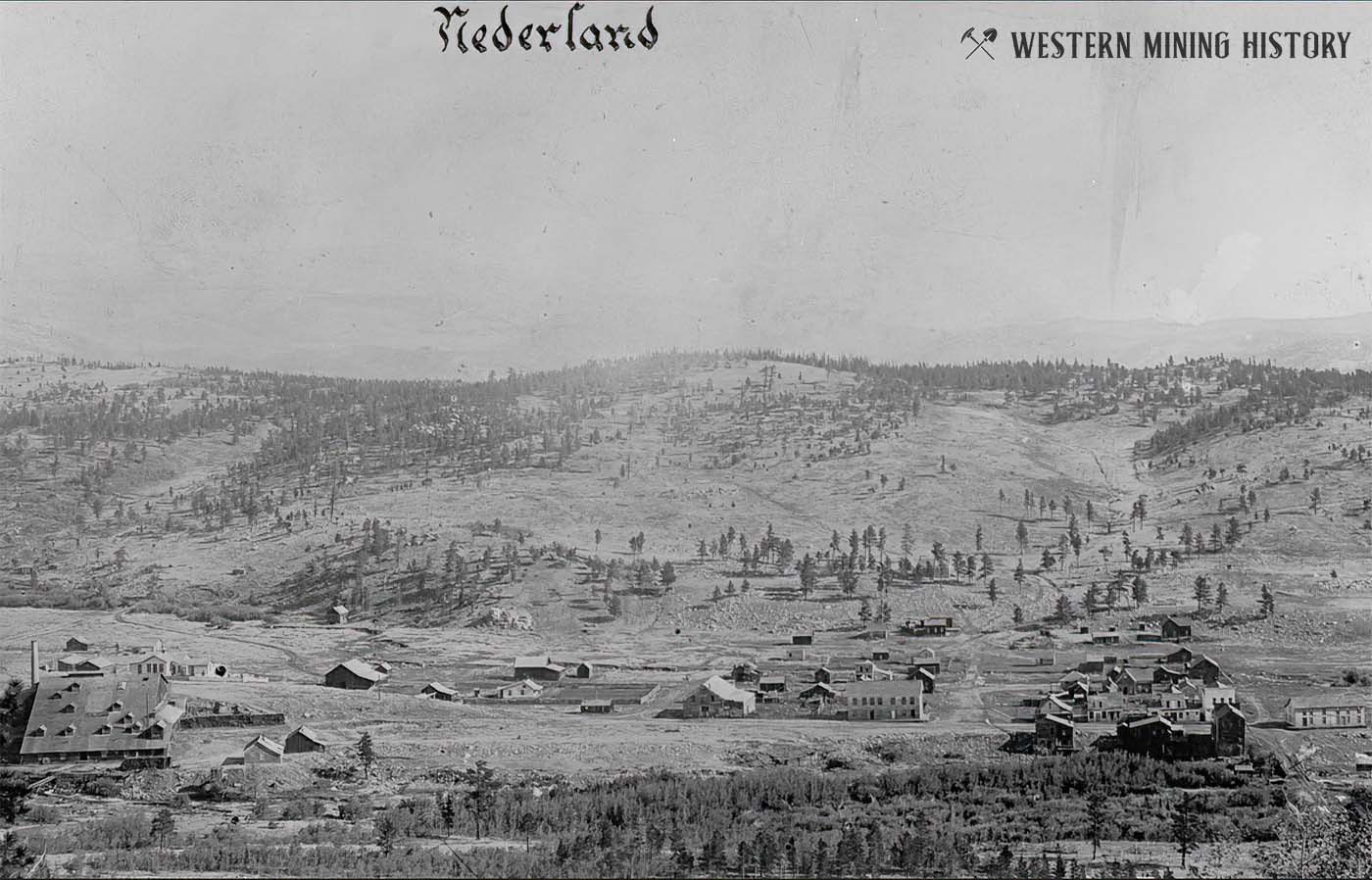
Date Settled: 1860s
Status: Active Town
The area around Nederland was occupied by homesteaders in the 1860s. Early communities were known as Dayton and Brownsville, but by 1869 the name Middle Boulder was being used. The first post office was established in 1871 under the Middle Boulder name.
The settlement changed its name to Nederland, after the Dutch-owned Mining Company Nederland, which built a stamp mill at the site in 1873 to process rich silver ore from the Caribou district. The town was nearly abandoned by the early 1900s when the Tungsten boom of 1916 put it at the center of the “World’s greatest tungsten district”.
Salina
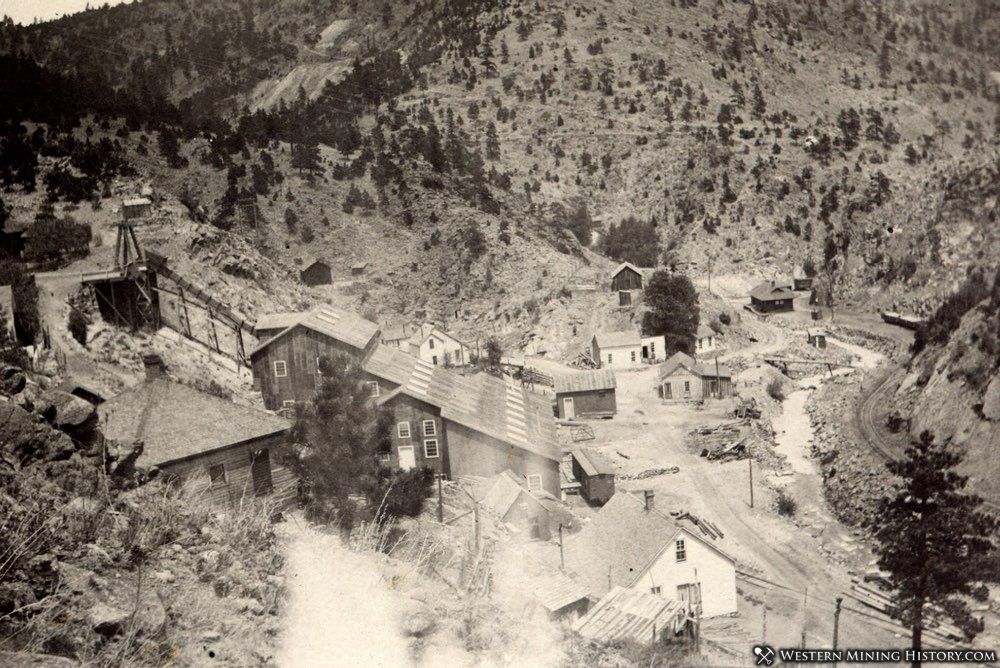
Date Settled: Around 1876
Status: Near Ghost Town
Salina peaked at around 350 residents, however the mines of Gold Run Gulch kept the town active for many decades. At least three stamp mills were built here. Located approximately 10 miles west of Boulder, the town still has a small population and intact historical structures.
Sunset
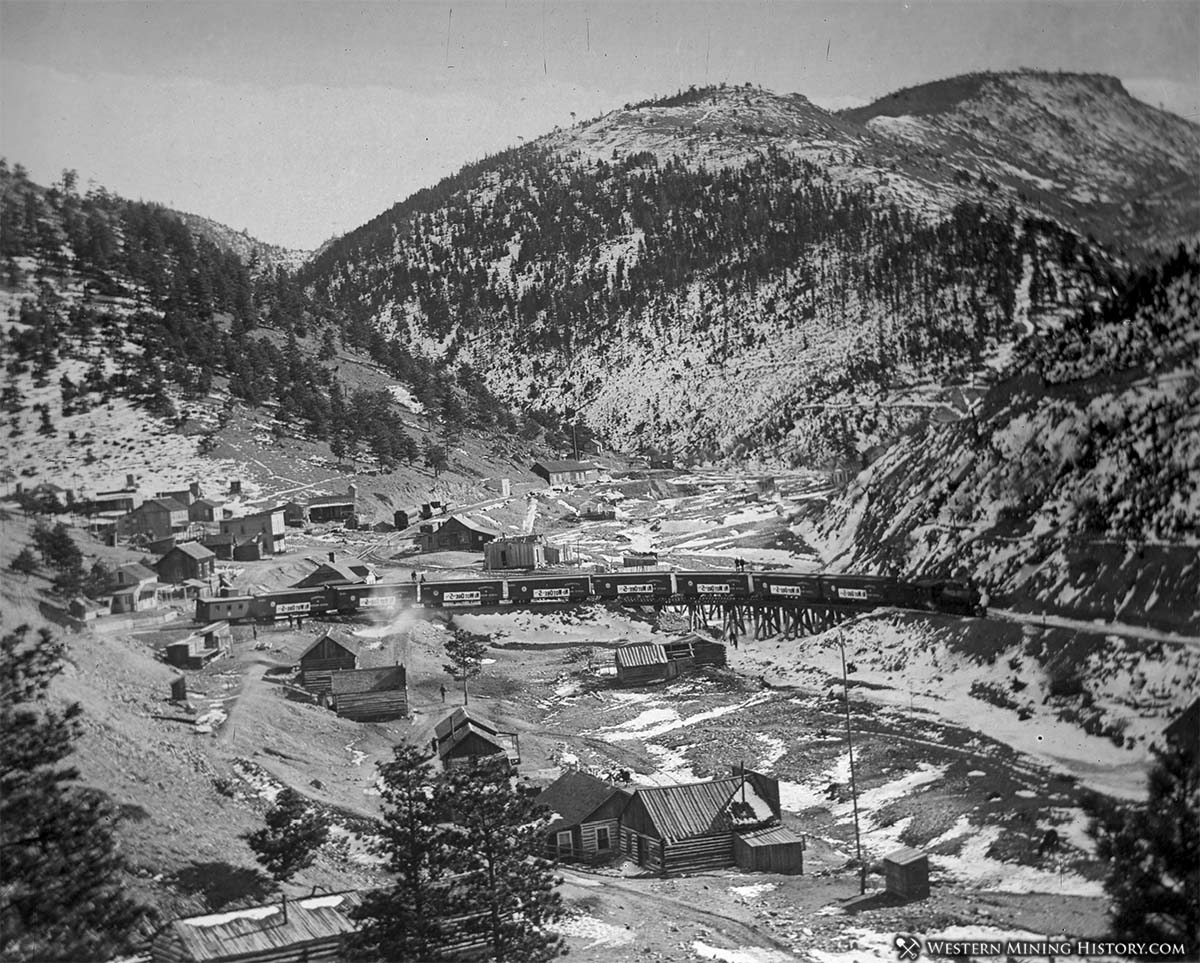
Date Settled: 1883
Status: Ghost Town
Sunset was an important junction on the railroad that serviced Boulder County mining towns. It was also a minor mining town with several gold mines nearby. Sunset had a post office from 1883 to 1921.
Tungsten
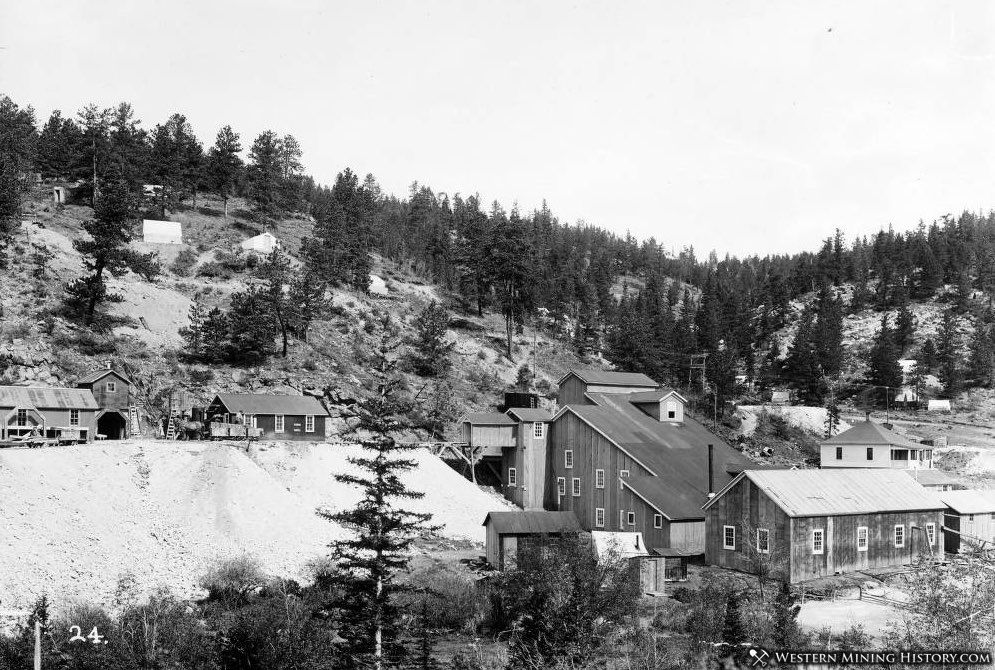
Date Settled: Around 1916
Status: Ghost Town
Tungsten was one of the many towns that came to prominence during the World War I tungsten boom in Boulder County. Details of the town of Tungsten are difficult to find. What is known is that the town was known originally as Stevens Camp, and according to newspaper articles from 1916 it had a population of 600 at that time.
Wall Street
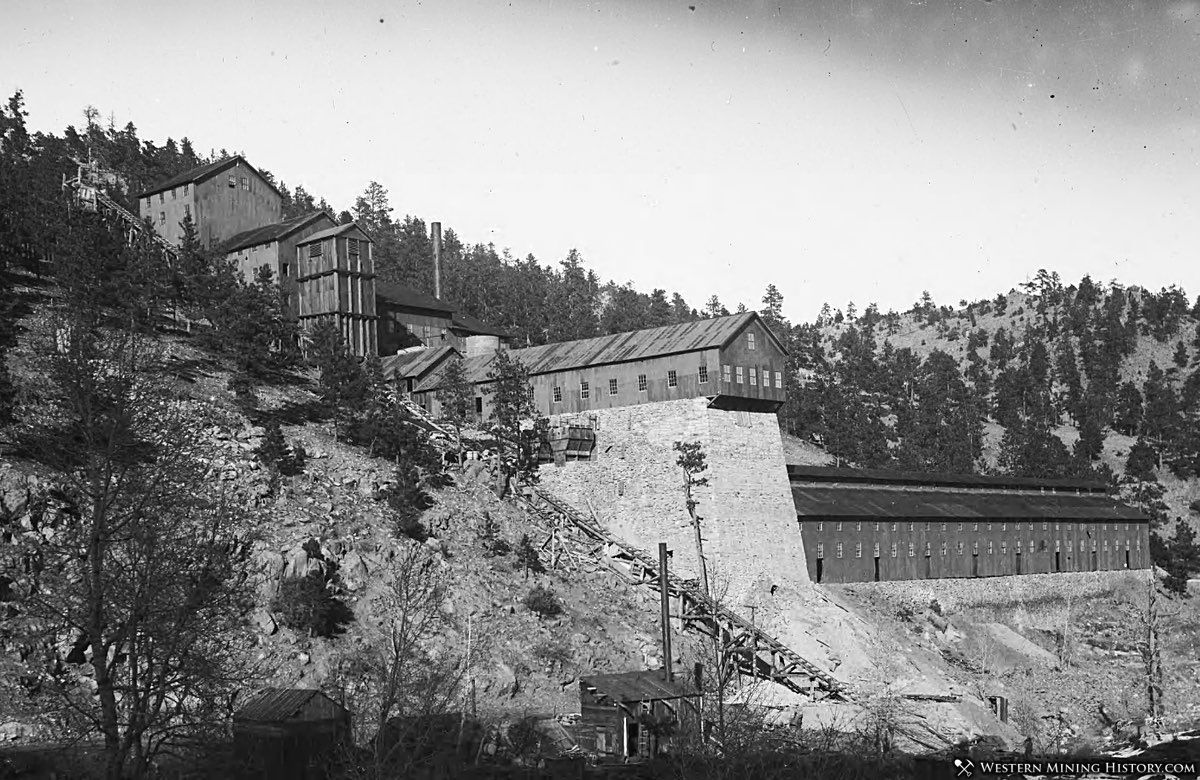
Date Settled: Around 1876
Status: Ghost Town
Wall Street was the site of one of the state’s first chlorination mills for the treatment of gold ores. The mill was built at enormous expense but ultimately was a financial failure. The enormous stone foundation seen in the photo still stands at the Wall Street town site.
Ward
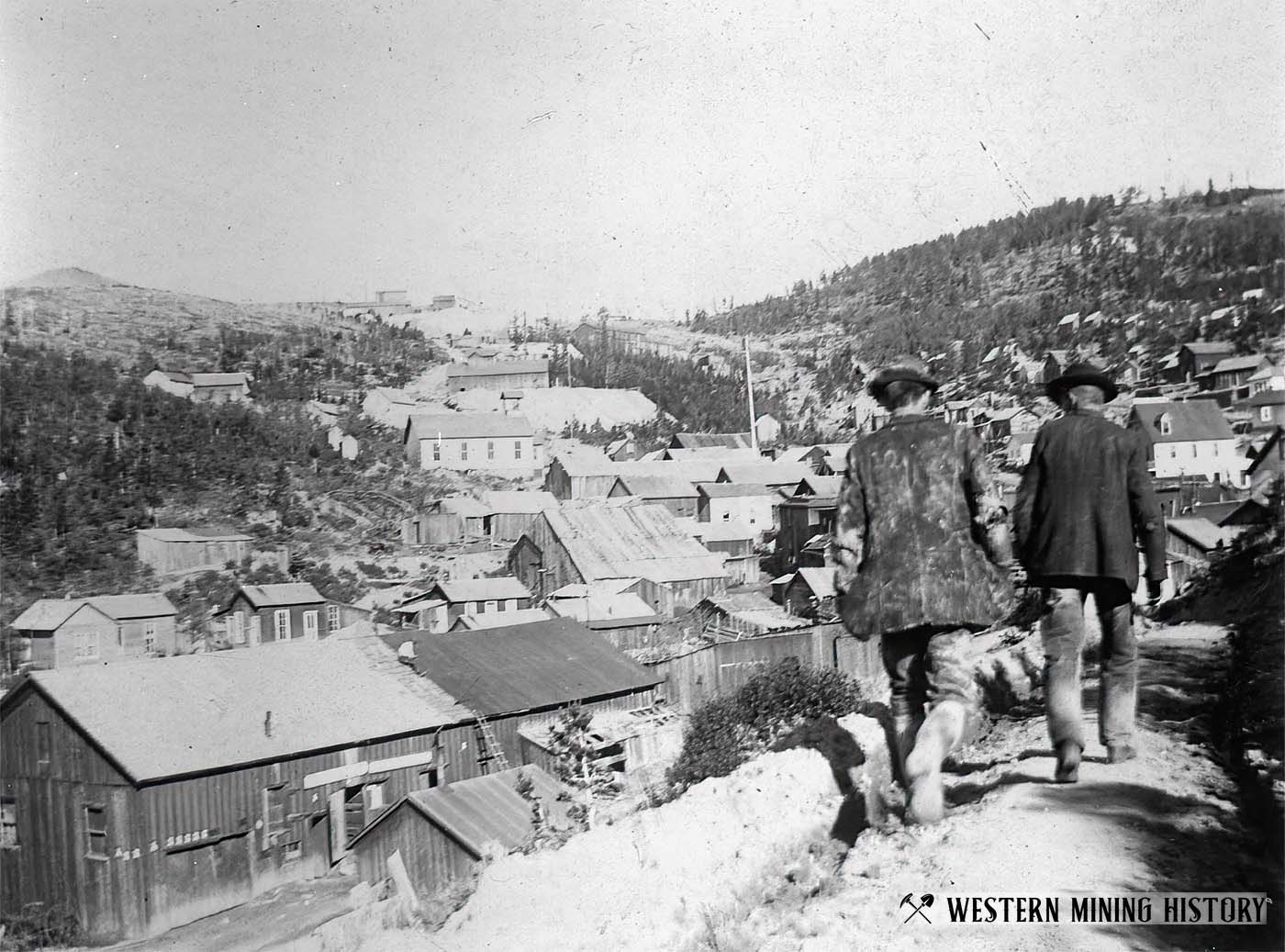
Date Settled: 1860
Status: Active Town
Settled in 1860, Ward is one of Colorado’s oldest towns. Ward is still an active town today and with a history spanning over 150 years, the town is one of the state’s oldest mining settlements.
Chaffee County
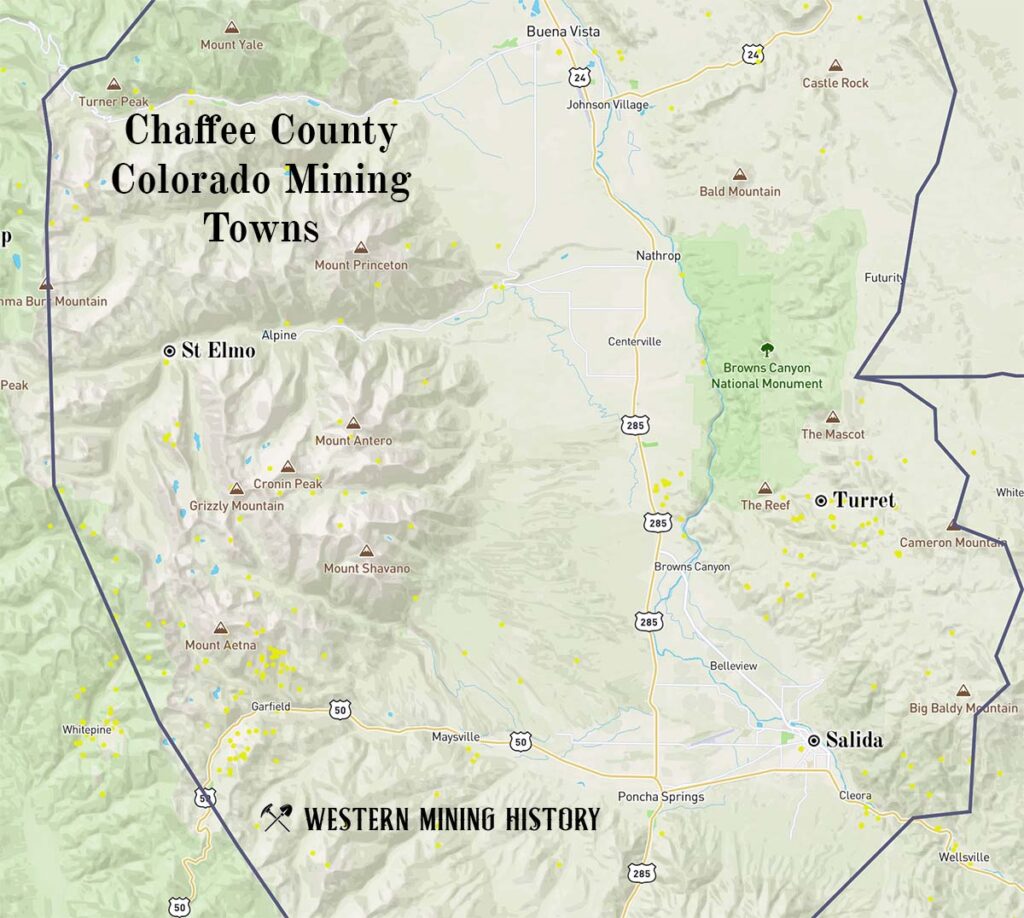
Salida
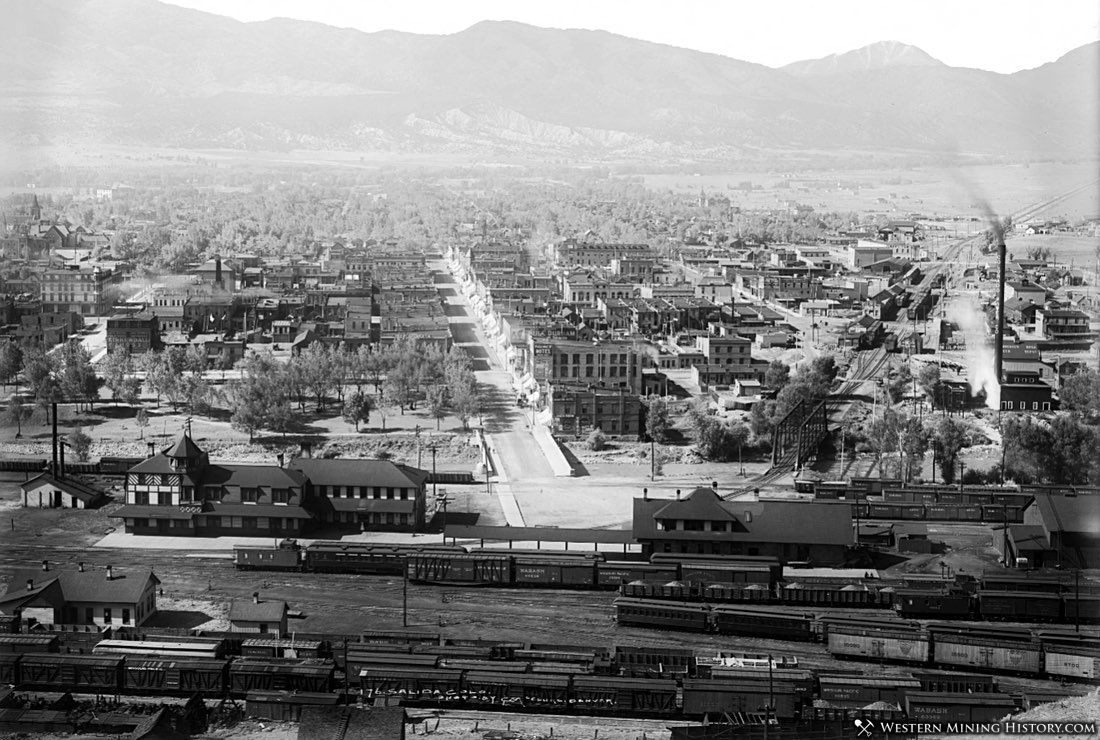
Date Settled: 1880
Status: Active Town
Salida was less of a mining camp, and more of a supply point for the agricultural and mining operations in Chaffee County. A railroad roundhouse was built to service the trains, and a 65 foot turntable was added and later replaced by an 80 foot turntable. This became the largest railroad repair facility between Denver and Salt Lake City, employing hundreds of men.
St Elmo
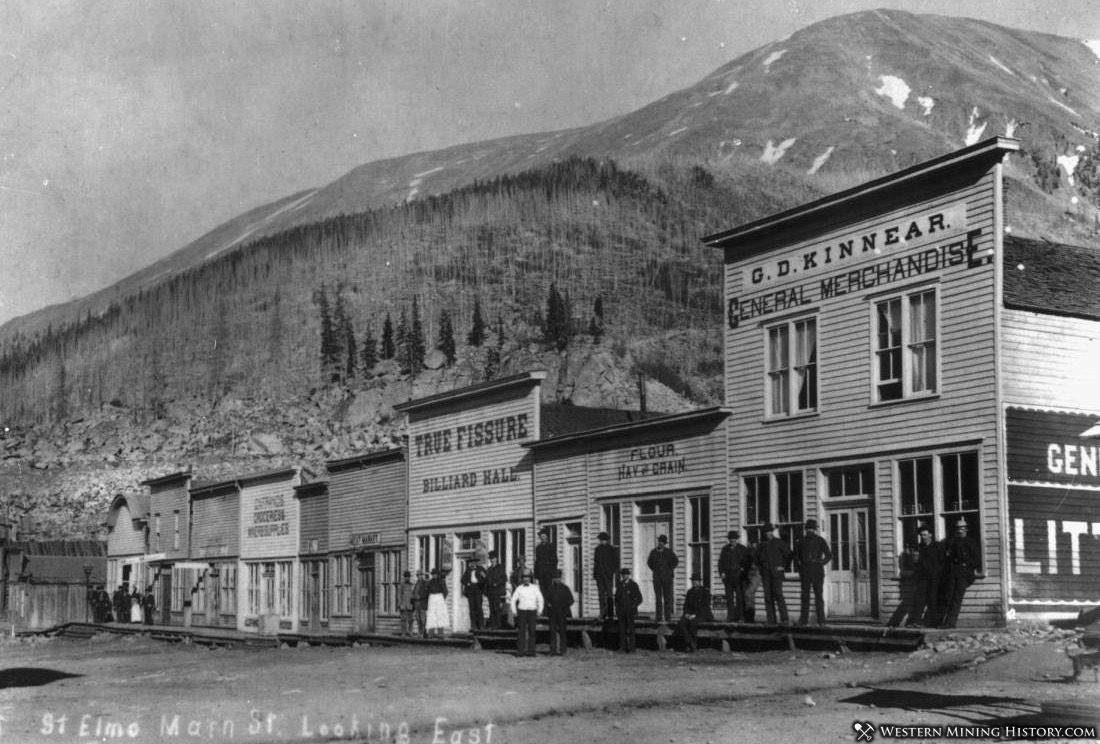
Date Settled: Late 1870s
Status: Near Ghost Town
St. Elmo was settled in the 1870’s and grew to be a town of over 2,000 residents. The town sits in one of the most scenic spots in Colorado, and was a popular tourist destination even in the 1800s. Today St. Elmo has many historic buildings remaining and is well worth a visit.
Turret
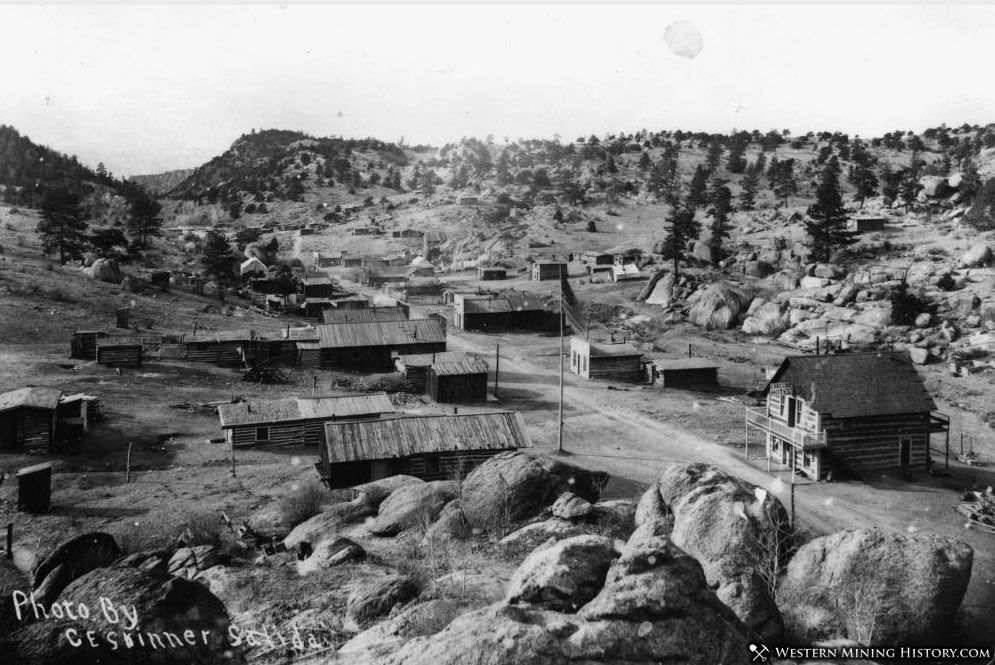
Date Settled: 1897
Status: Ghost Town
Turret was settled in 1897 following ore discoveries in the area. By 1898, camp had grown into a town of several hundred people. The mines of the area were active for several decades, but by the late 1930s most had shut down. The Turret post office closed in 1939.
Clear Creek County
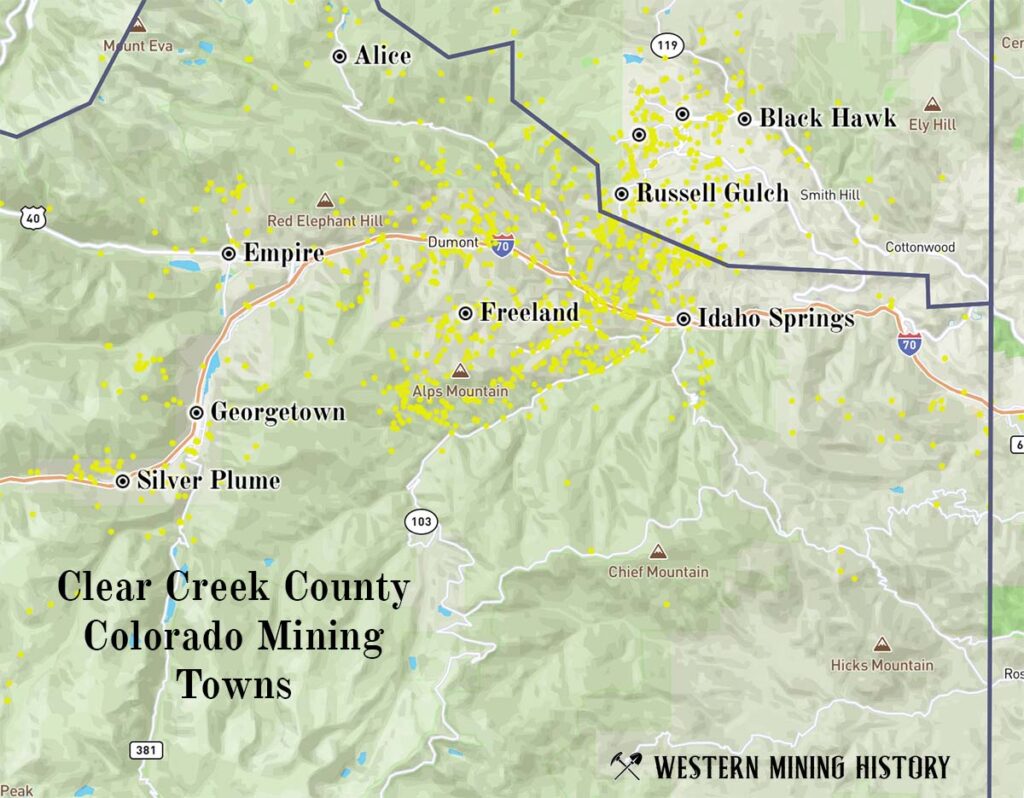
Alice
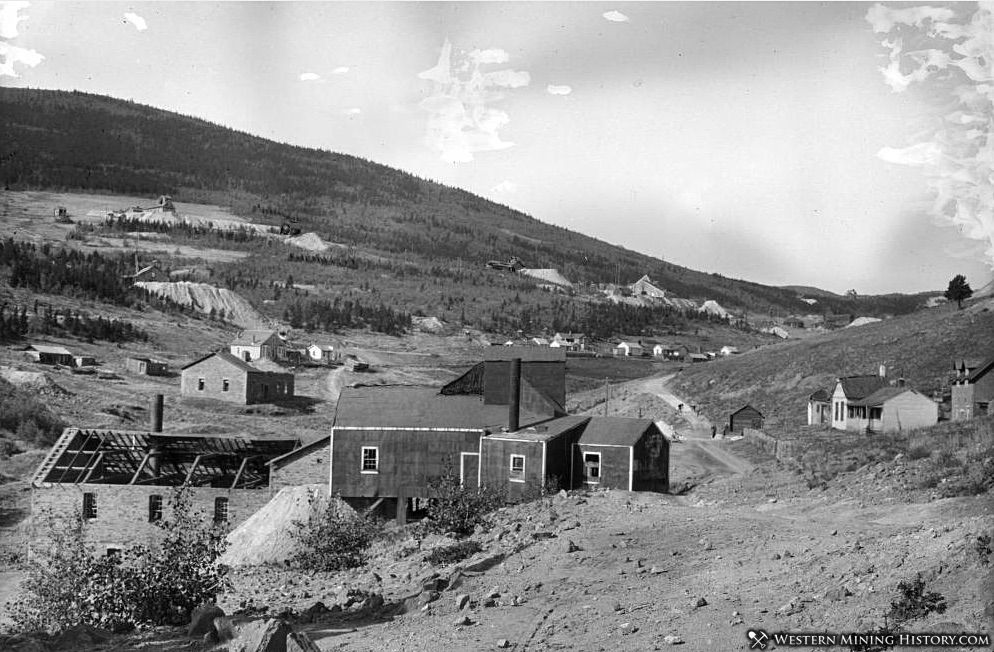
Date Settled: 1860s
Status: Ghost Town
Alice started as a placer mining camp in the 1860s, later transitioning to a lode mining center. The Alice Mine was the chief producer of the area. As the mines declined, so did the town, and Alice became another western ghost town.
Freeland
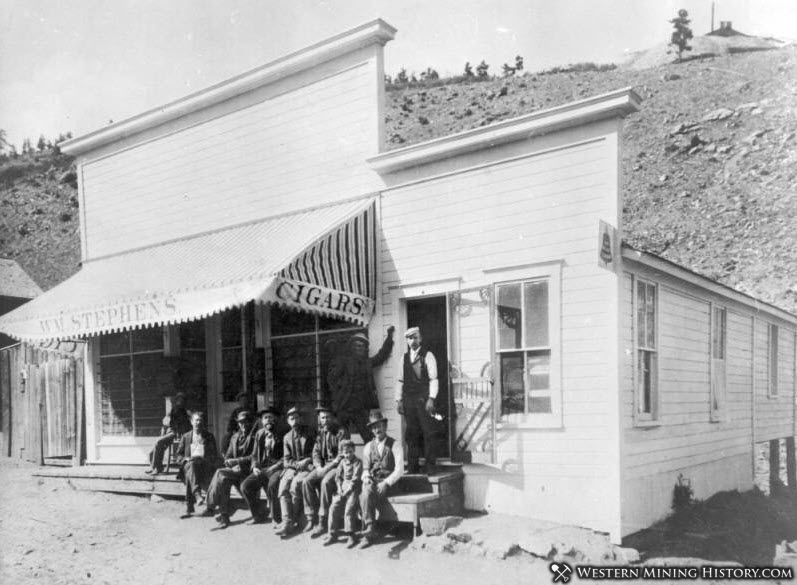
Date Settled: 1878
Status: Ghost Town
The settlement of Freeland took its name from the Freeland Mine, one of Clear Creek County’s richest producers. The town peaked in the 1880s with around 400 people, but by 1900 the population was down to about one hundred. As with most mining camps that exist entirely to work the local mines, Freeland died out as the mines played out.
Empire
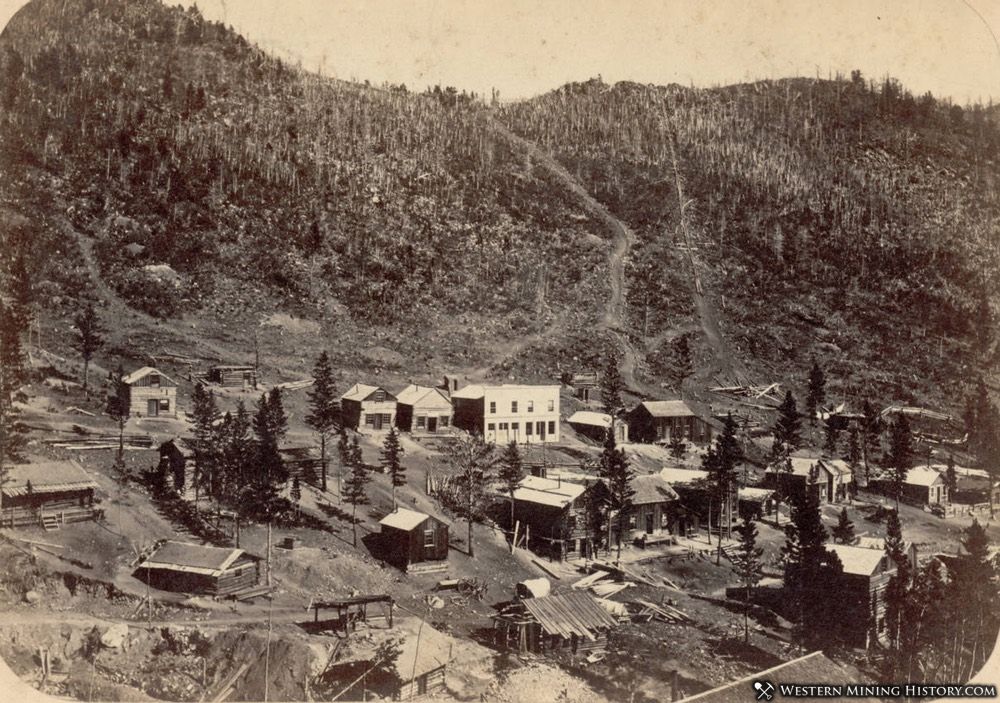
Date Settled: 1860
Status: Active Town
Empire has been an active mining community for over 150 years. The town was founded in 1860 after gold discoveries in the area. Originally known as Valley City, the town’s name was changed to Empire City in 1861, and then just Empire later on. The massive Henderson molybdenum mine, west of Empire, is still in production today.
Georgetown
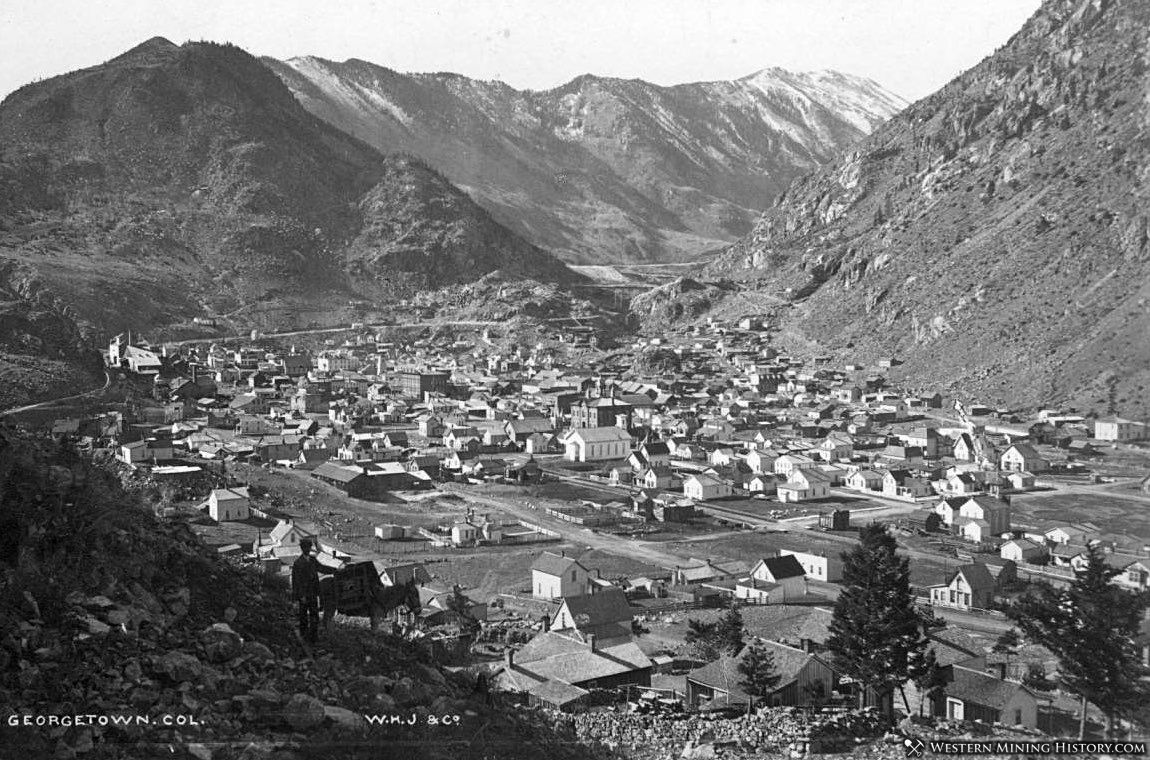
Date Settled: 1859
Status: Active Town
Georgetown was settled after the discovery of gold in 1859 and would ultimately become the center of a major silver district. Georgetown competed with Central City as Colorado’s most important mining center in the 1870s. Today, Georgetown is one of the best preserved Victorian-era mining towns in the West.
Idaho Springs
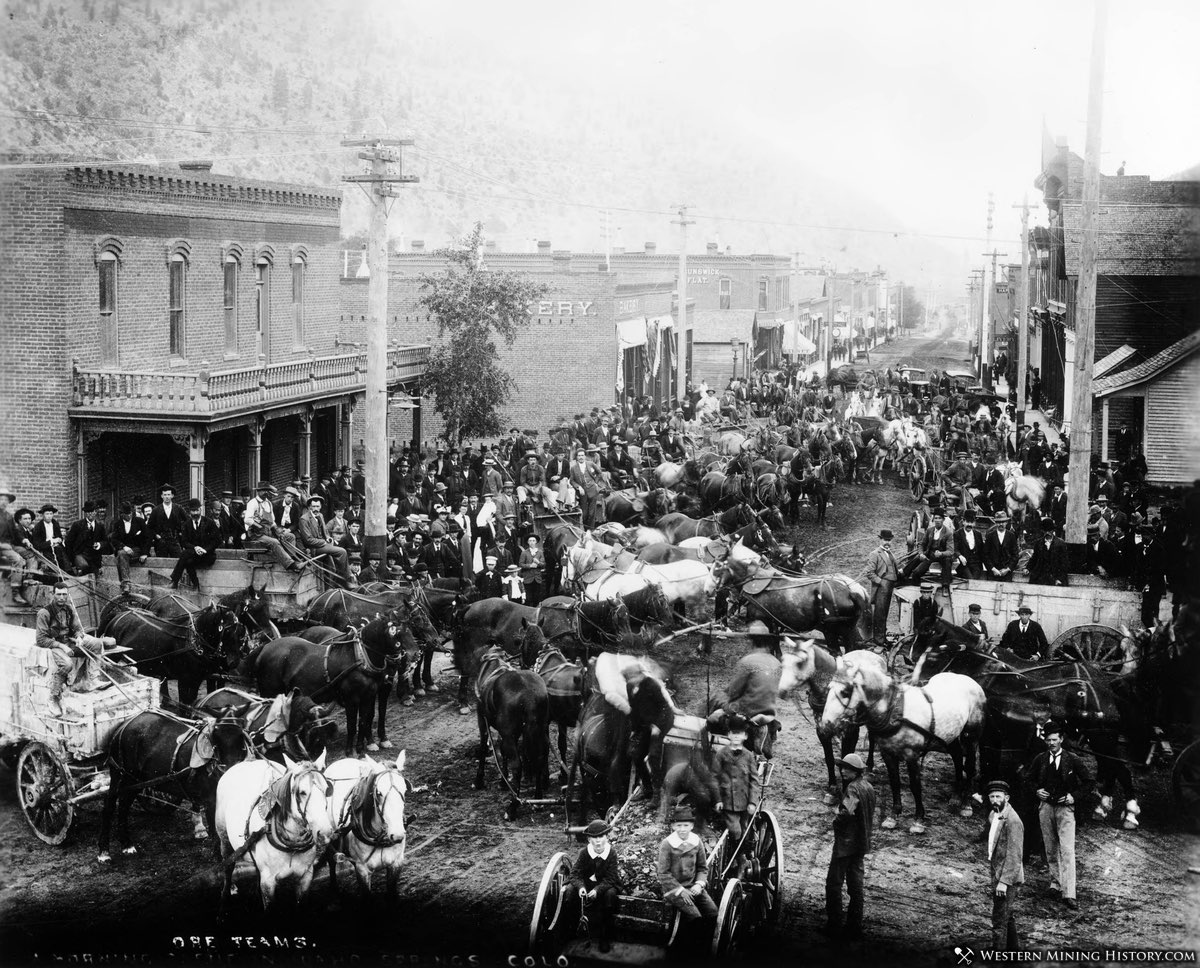
Date Settled: 1859
Status: Active Town
Idaho Springs is the site of the first significant gold discovery during the Colorado Gold Rush. George Jackson found gold at the confluence of Chicago and Vasquez creeks on January 7, 1859. The town went on to be a major transportation center and mining hub for the mines of Clear Creek County. Today Idaho Springs is one of the West’s best preserved mining-era towns.
Silver Plume
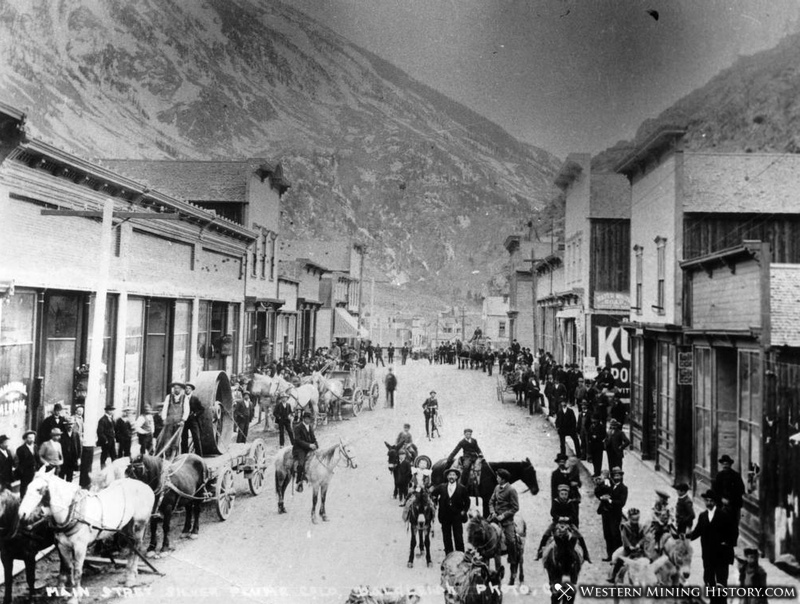
Date Settled: 1869
Status: Active Town
Silver Plume was built among some of the Clear Creek silver district’s largest mines. By 1893, the town had over 2,000 residents and a booming commercial district. Today Silver Plume is still an active community with many historic buildings.
Conejos County
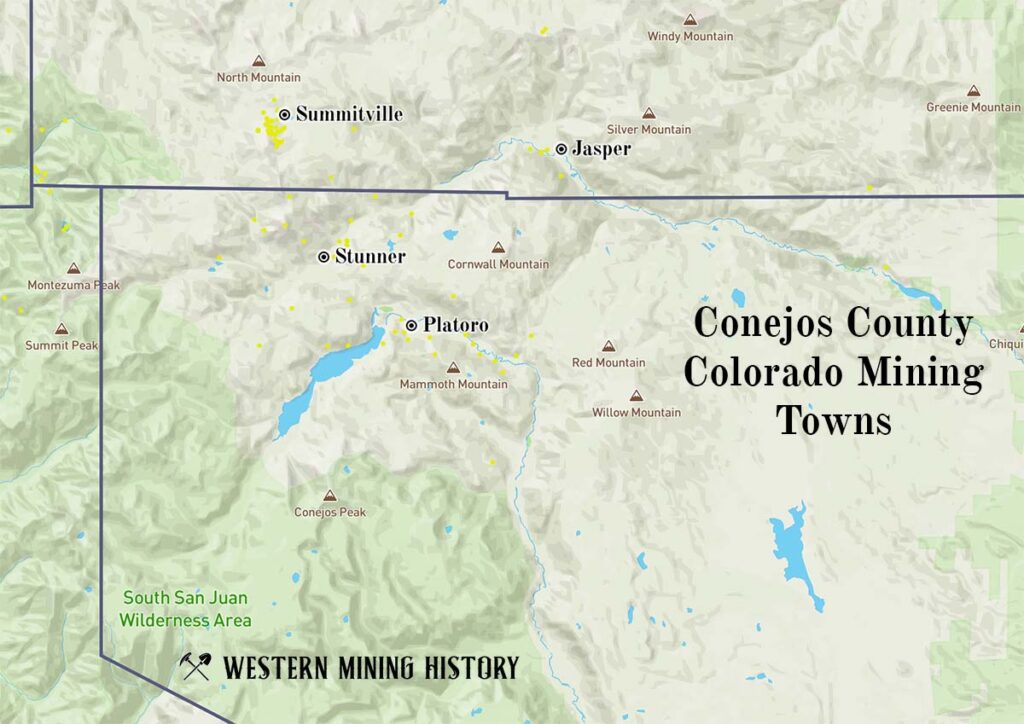
Platoro
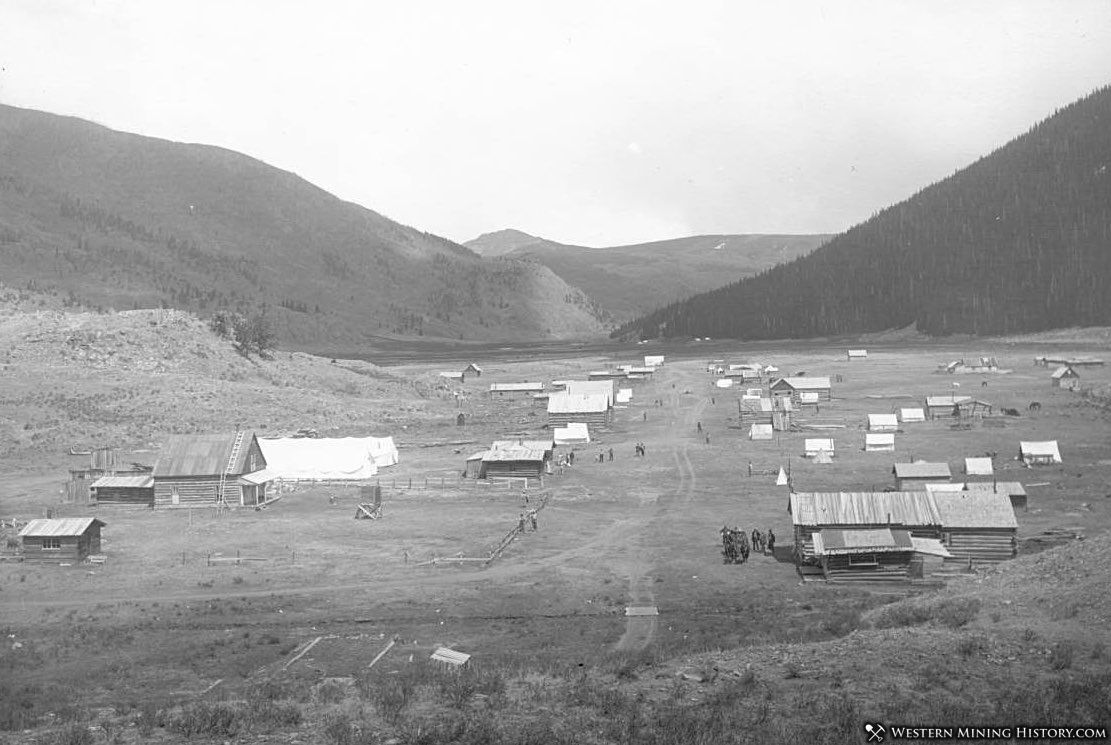
Date Settled: 1888
Status: Ghost Town
Platoro had an initial boom starting in 1888 which only lasted a few years and resulted in a town of around 300 people. A second excitement in 1913 brought Platoro back to life, but was short-lived and the town was abandoned by the end of the decade.
Stunner
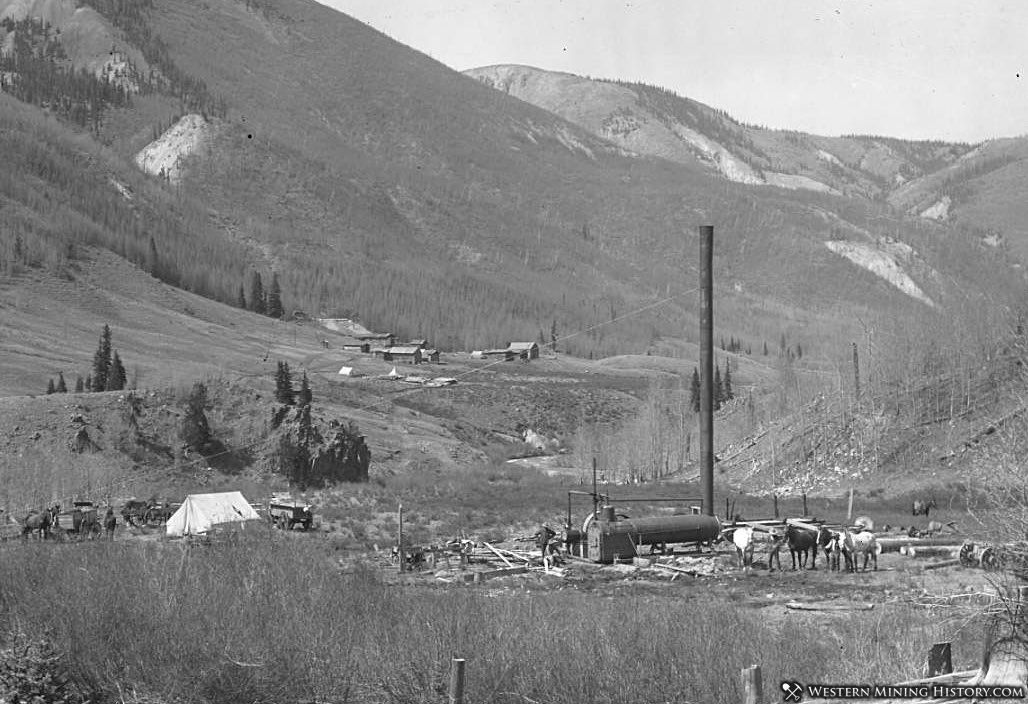
Date Settled: 1886
Status: Ghost Town
Stunner was settled in the 1880s as a gold camp. Although it did have a post office, it was always a minor town and district, not quite living up to its name.
Custer County
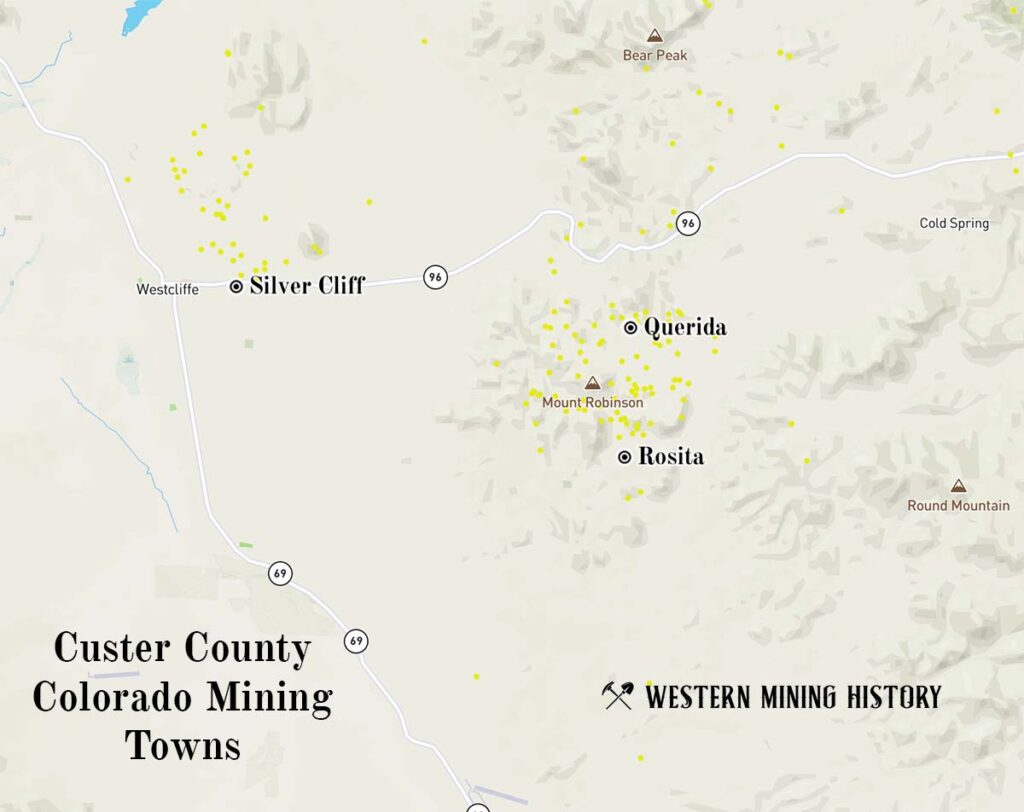
Querida
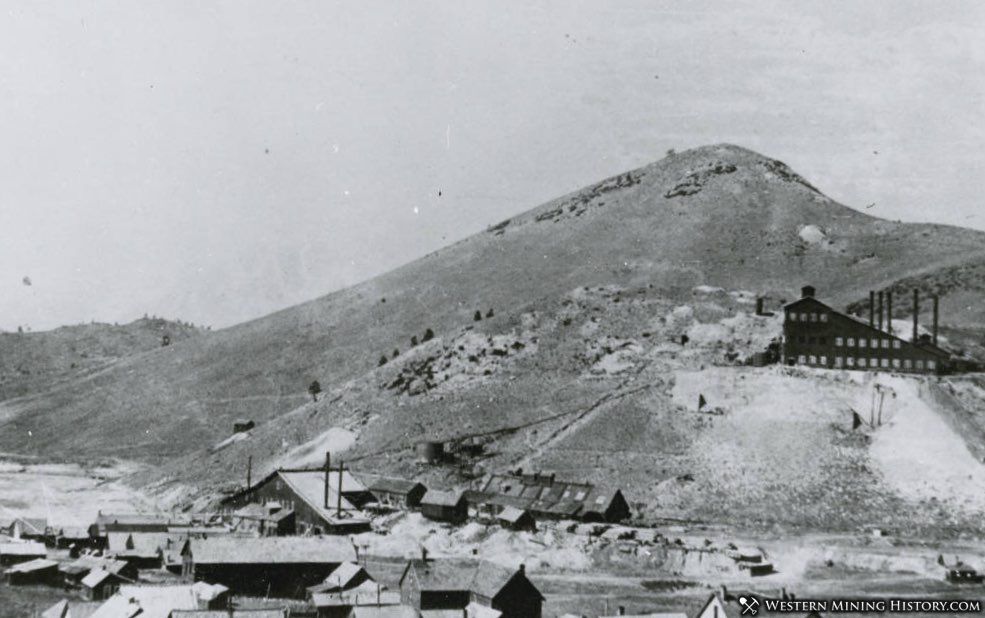
Date Settled: Late 1870s
Status: Ghost Town
Querida was founded by Edmund C. Bassick , discoverer of the rich Bassick silver mine. The town was prosperous in the 1880s. A post office operated here from 1880 to 1906. Today Querida is a ghost town.
Rosita
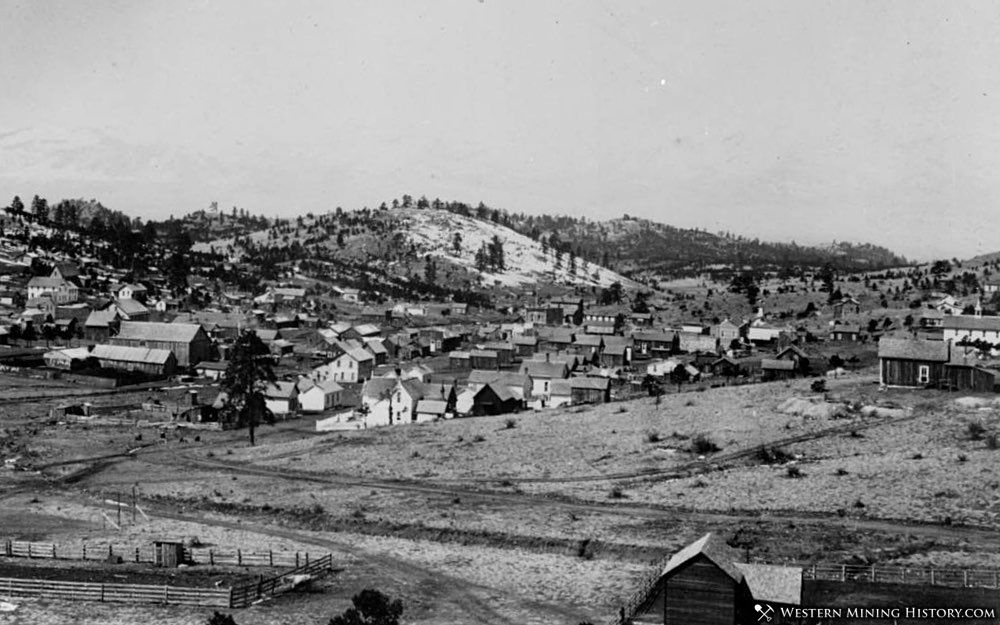
Date Settled: 1872
Status: Ghost Town
Rosita was founded in 1872 after silver discoveries in the area. By 1874 the town had more than a thousand residents and 400 buildings. A post office was established in 1874 and in 1878 Rosita became the county seat of government. In 1886 Silver Cliff took the county seat from Rosita after a bitter political struggle.
Although Rosita declined almost as fast as it rose to prominence, it nonetheless remained a viable town for many decades. In 1966 the post office closed and Rosita soon became a ghost town.
Silver Cliff
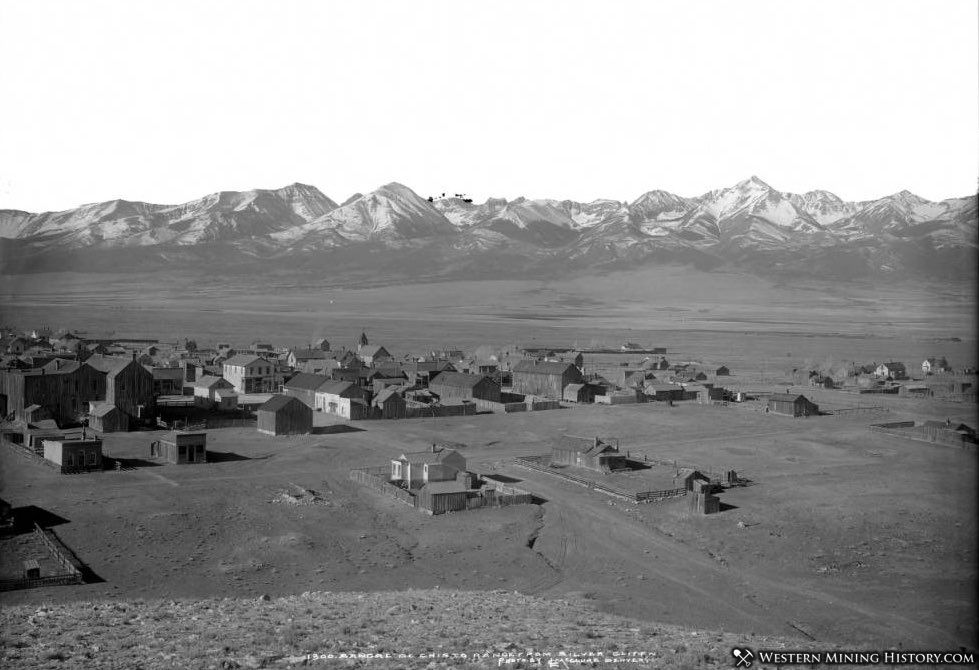
Date Settled: Late 1870s
Status: Active Town
Silver Cliff was settled in the late 1870s after discovery of the Geyser mine. The town was incorporated in 1879 and by 1880 was Colorado’s third largest city with over 5,000 residents (behind Denver and Leadville).
In the 1890s, the Geyser mine was the deepest mine in Colorado. The mines in the area were rich producers for many years. As the mines declined, the county seat was moved to nearby Westcliffe. Silver Cliff remains an active town with over 600 residents.
Dolores County
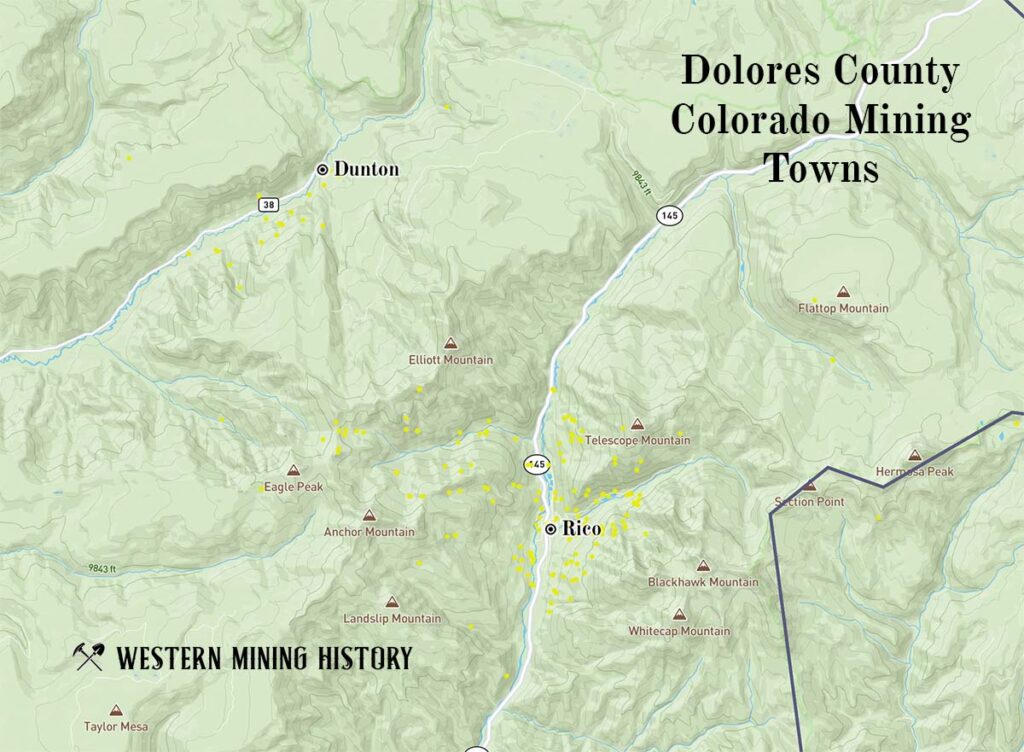
Dunton
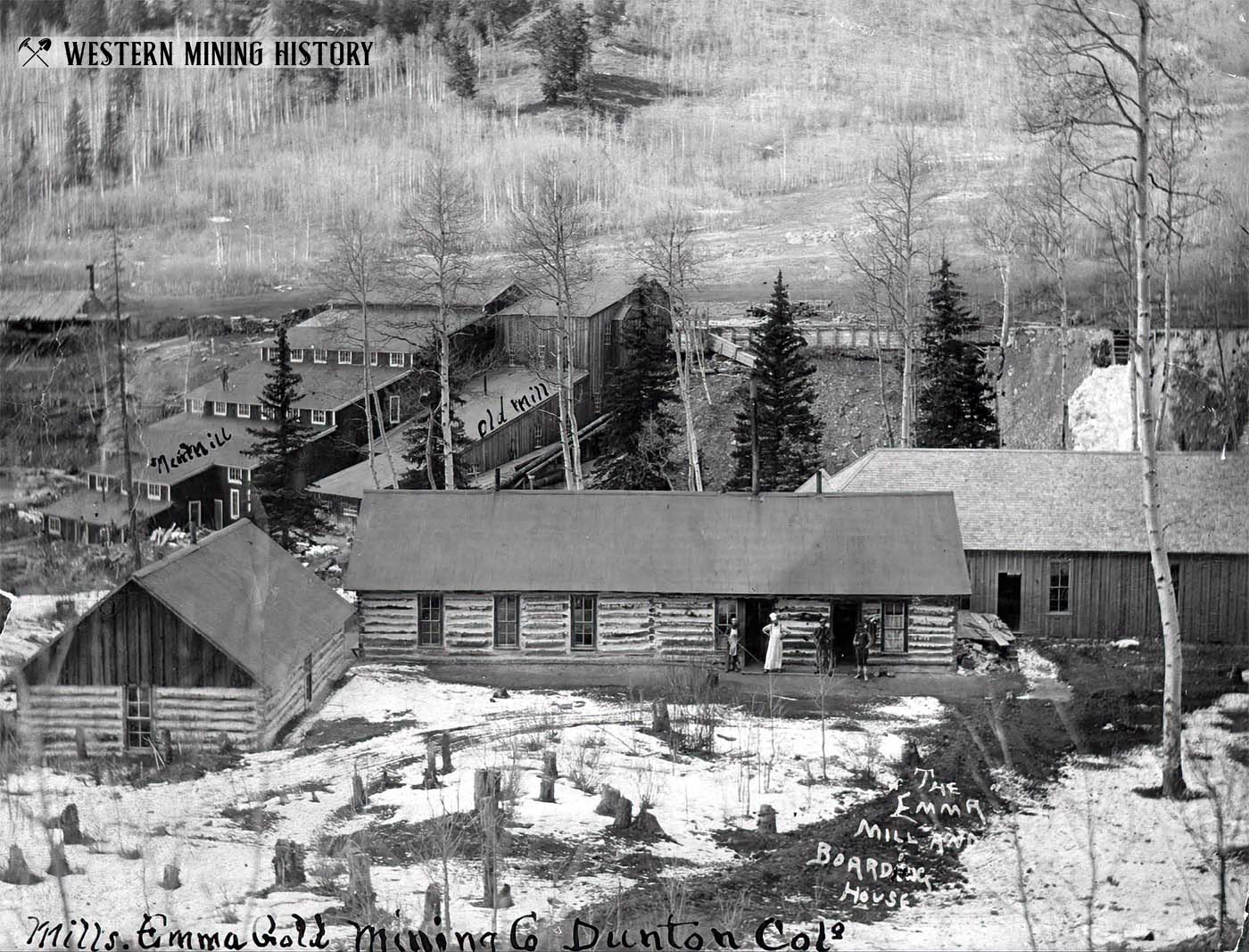
Date Settled: 1885
Status: Ghost Town (a private resort operates here)
Dunton was a remote mining camp that never had a rail connection closer than 9 miles away. Development of the nearby mines was slow until Eastern investors bought the Emma Mine in 1897, and proceeded with rapid development of the mine. The mines and town peaked around 1905 but by 1910 both were in decline. By 1918 the town was deserted.
The ghost town of Dunton became part of a large cattle ranch which was likely the main reason that the buildings in town were spared from vandalism and salvage over the years. In 1994 the entire town was purchased and renovated, becoming a private resort.
Rico
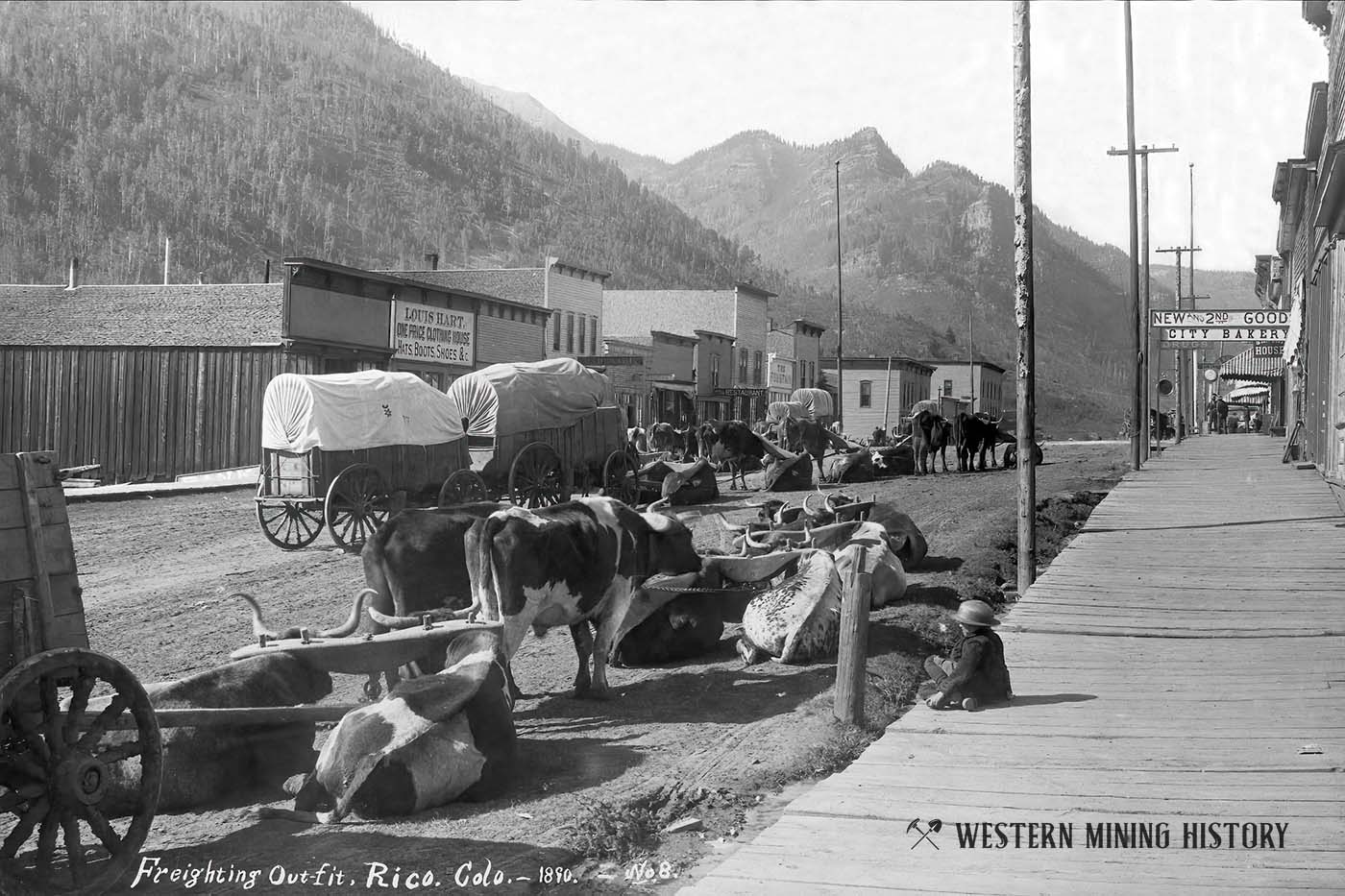
Date Settled: 1878
Status: Active Town
The development of Rico was hampered in the 1870s and 1880s due to its remote location and poor transportation infrastructure. By the 1890s a railroad solved the transportation problem and Rico became a thriving mining town. Today the railroad and the mines are no longer operating, and Rico once again finds itself an isolated and sleepy small town.
Eagle County
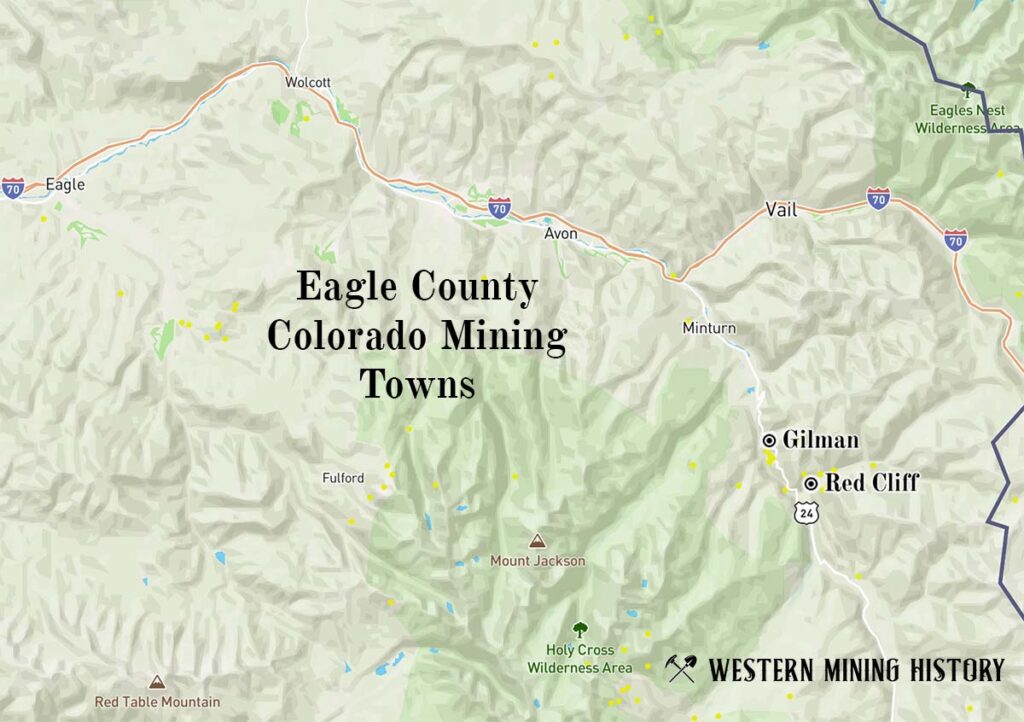
Gilman
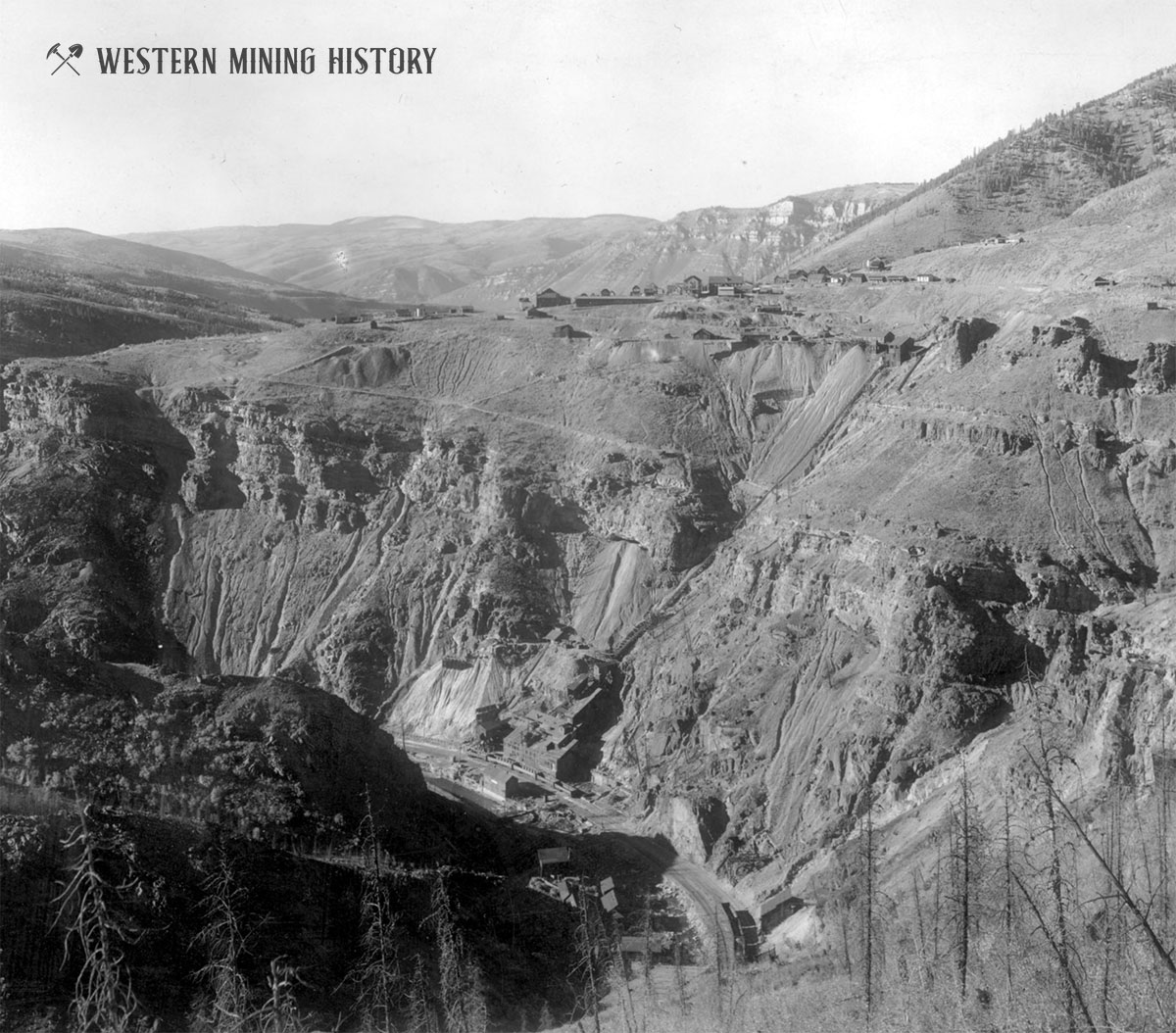
Date Settled: Early 1880s
Status: Ghost Town
Gilman was initially settled at the site of rich gold and silver mines, but by the early 1900s had become a major zinc producer. Mining continued here until the 1980s, but the town was abandoned and has become and EPA Superfund site.
Red Cliff
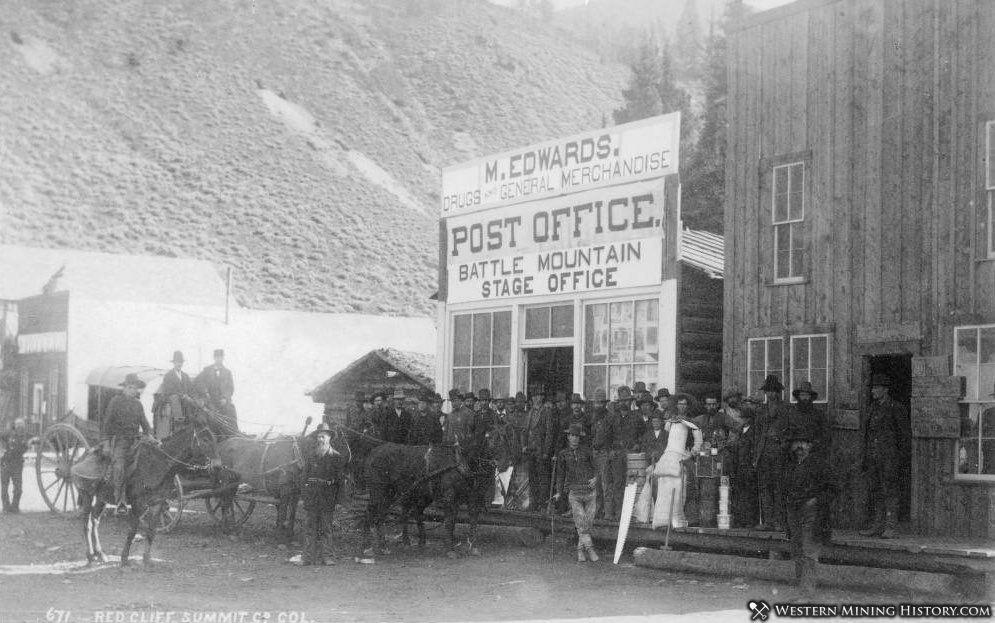
Date Settled: 1879
Status: Active Town
Red Cliff was settled in 1879 by prospectors that were venturing out from Leadville in search of new strikes. By 1880 a post office was established and the Battle Mountain Smelter was constructed near town. In 1881 the Denver and Rio Grande Railroad reached Red Cliff.
Red Cliff never became an enormous city like other Colorado mining towns, but the diversity of its mines kept the town active for well over a century. Today, Red Cliff still has around 270 residents, about the same number that was counted during census reports in the late 1800s.
Gilpin County
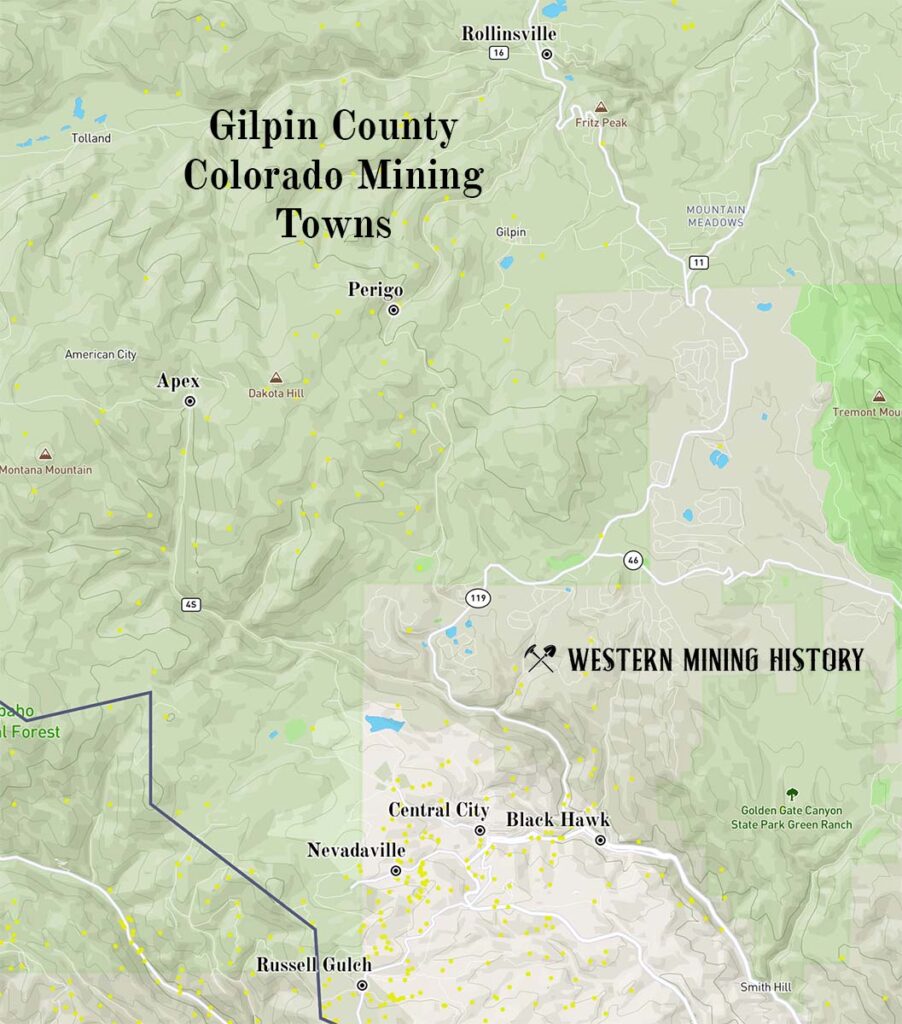
Apex
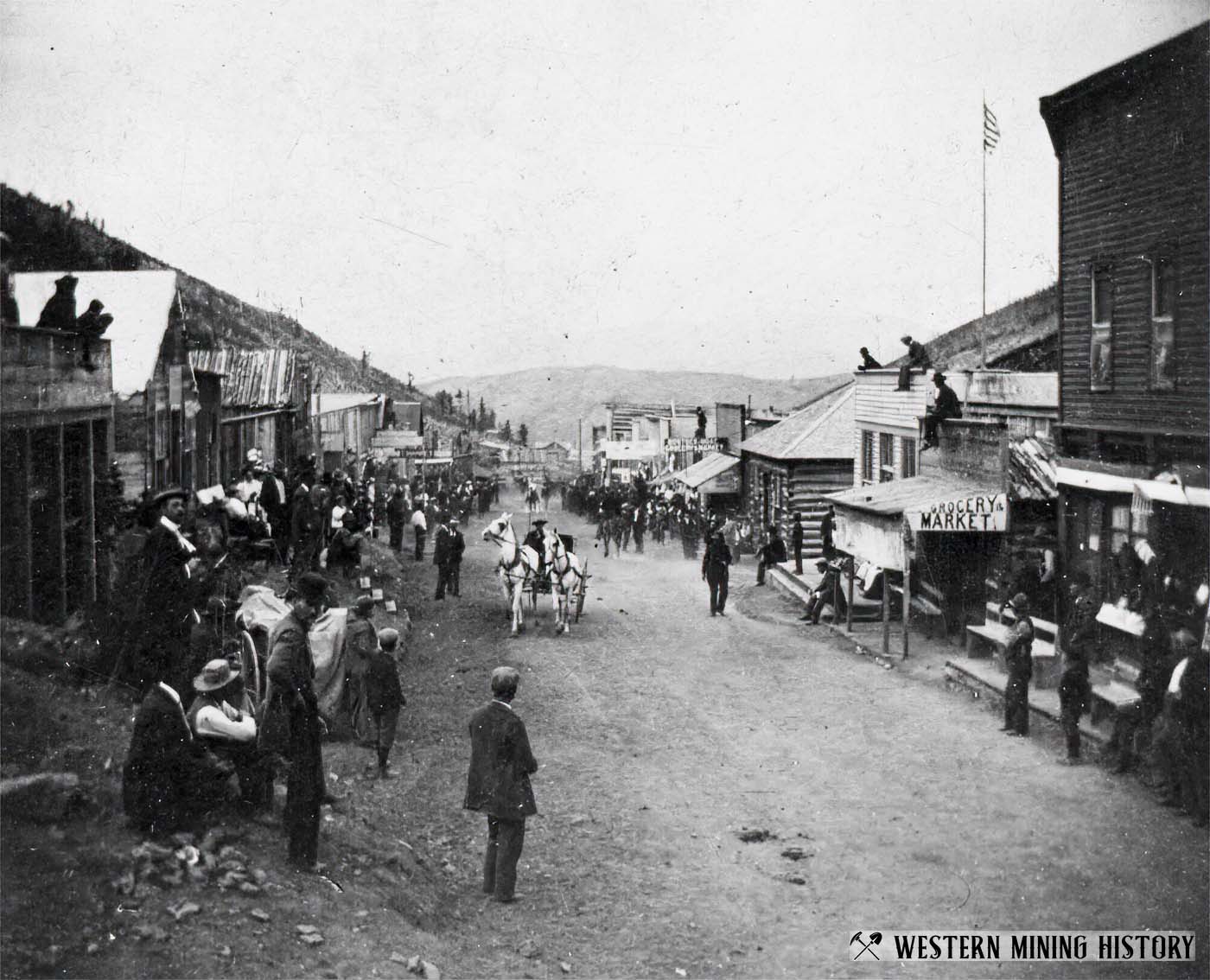
Date Settled: 1891
Status: Ghost Town
Apex was established in 1891 after discovery of rich gold ore in what was known as the Pine Mining District. The mines were rich enough to support a town of around 1,000 people by the turn of the century. The Apex post office operated intermittently from 1894 to 1932.
Black Hawk
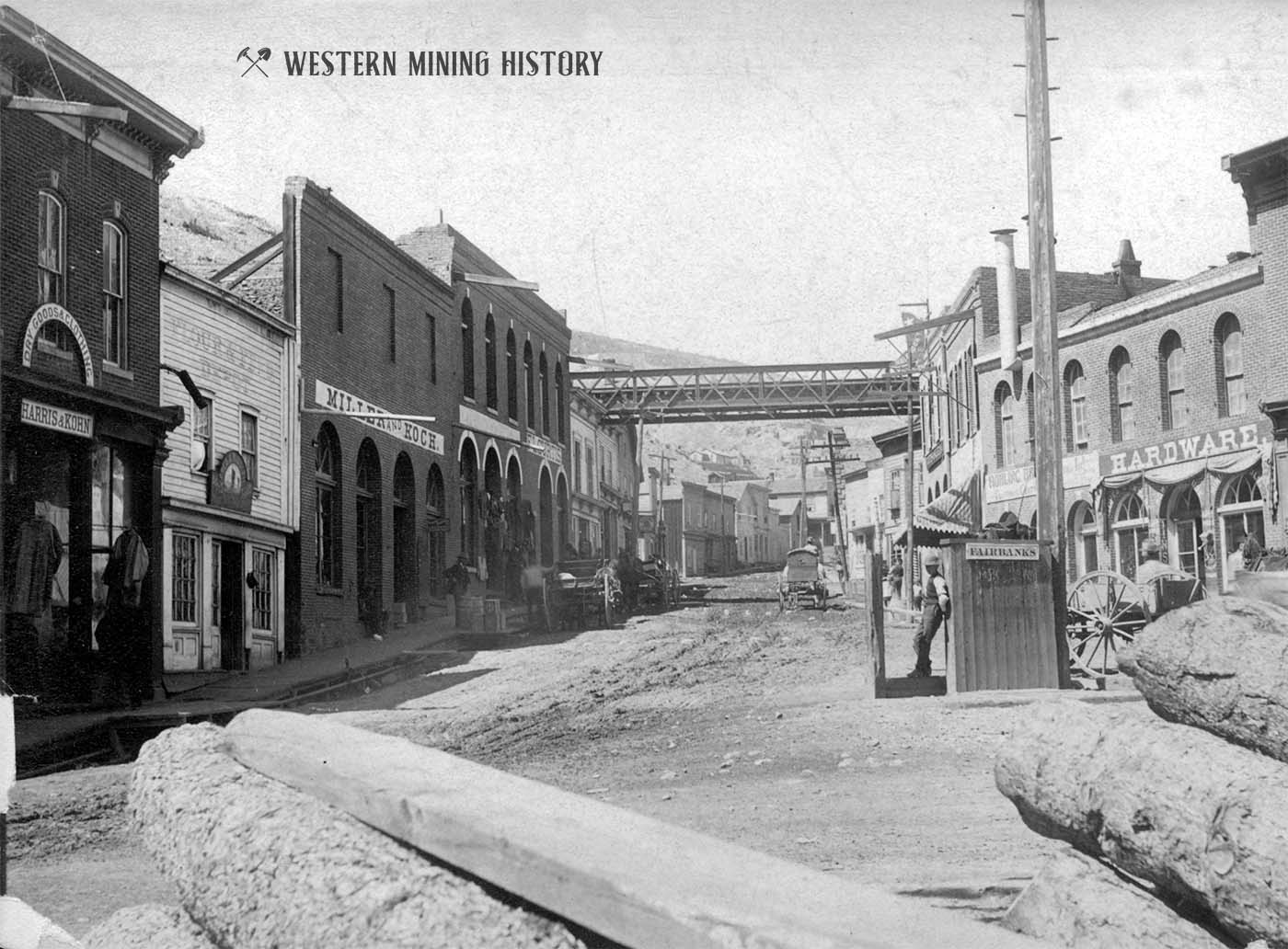
Date Settled: 1859
Status: Active Town
Black Hawk was one of the original settlements in Gregory Gulch, location of Colorado’s most important early gold strike. While Central City was the most important town in the district, Black Hawk was the industrial center, having many mills, smelters, and mine supply businesses. The early smelters built at Black Hawk were instrumental in transitioning Colorado mines from placer to successful lode operations.
Today the town has been almost completely transformed by the gambling industry, and while it has become a popular tourist area, many lament the loss of authentic mining town that was Black Hawk.
Central City
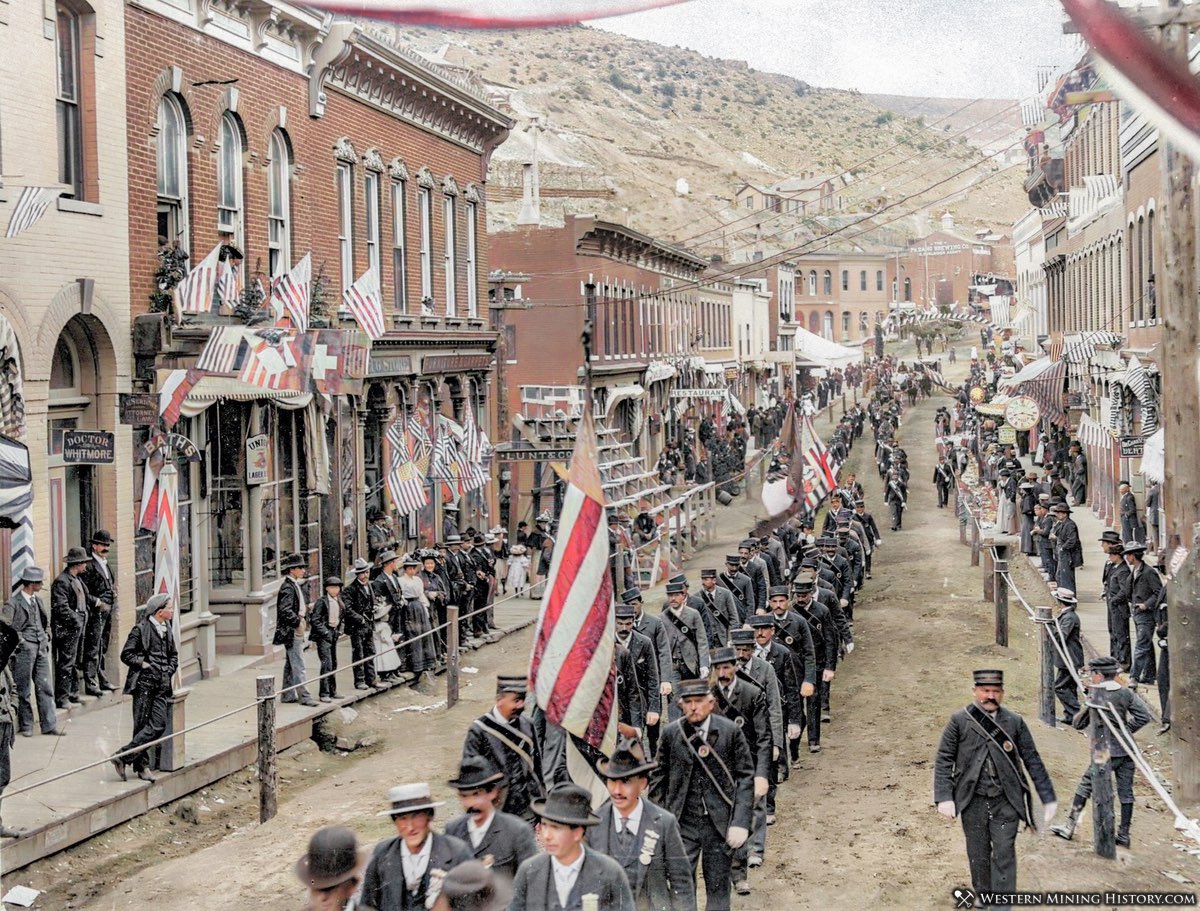
Date Settled: 1859
Status: Active Town
Central City was Settled in 1859 after gold discoveries by John Gregory. This is one of the West’s most historically significant mining towns.
Central City was Colorado’s largest city for a number of years. Even after Denver surpassed it in population, Central City remained Colorado’s economic center into the 1870s. This mining metropolis was visited by many of the world’s most important people, including President Grant, Grand Duke Alexis of Russia, and numerous important government figures and celebrities from around the world.
In recent decades Central City has transitioned to a gambling destination, but many historic buildings have been preserved from the 1800s.
Nevadaville
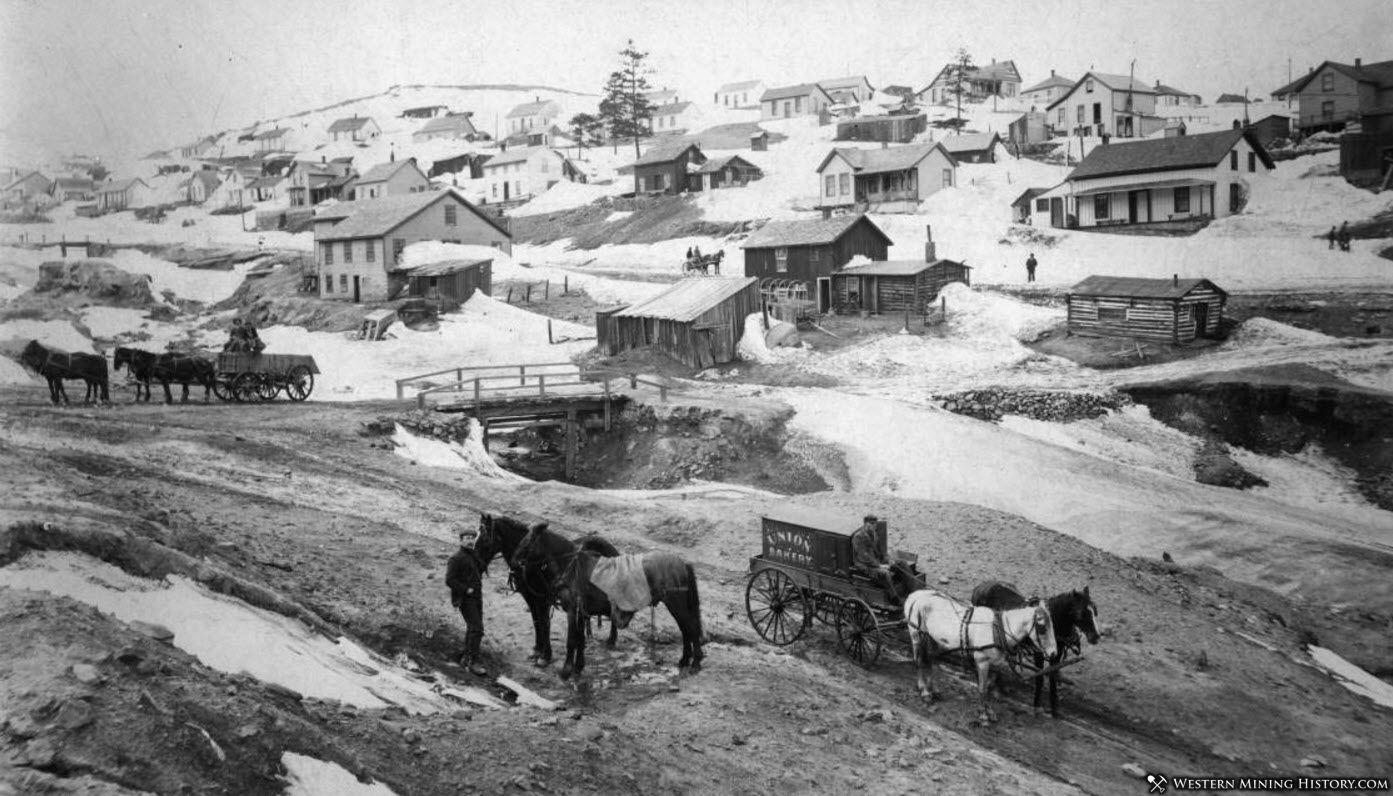
Date Settled: 1859
Status: Ghost Town
The early history of Nevadaville is much the same as Black Hawk and Central City. This was another town in the crowded Gregory Gulch, formed after the 1859 gold discovery by John Gregory. Nevadaville was the working class town in the Central District.
Nevadaville did not grow to the size of either Central City or Blackhawk, and it was mostly a ghost town long before gambling rejuvinated its neighboring towns down the gulch. Today Nevadaville has a few remaining buildings surrounded by mine ruins, and just six full time residents.
Perigo
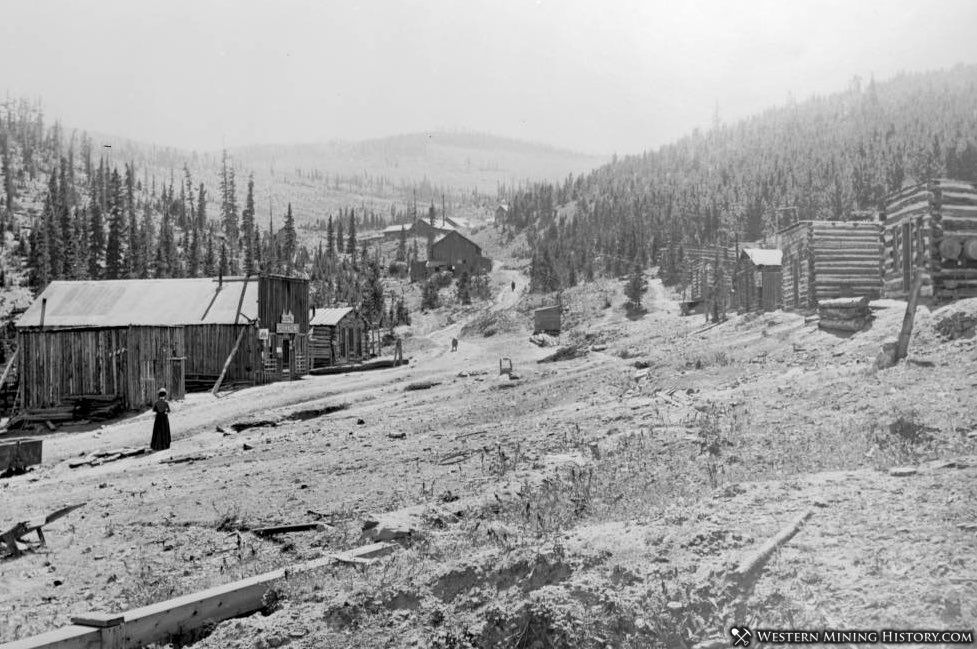
Date Settled: 1860
Status: Ghost Town
Perigo was initially known as Gold Dirt in the 1860s. Gold Dirt was at the site of one of Colorado’s earliest gold discoveries. By the late 1860s, the original town was abandoned. The community would be reborn in the 1880s as Perigo, named after the rich Perigo lode.
The Perigo mine was in decline in the early years of the new century, and by 1905 the town’s post office was discontinued. The mine would be worked intermittently until the Great Depression when it was permanently closed.
Rollinsville
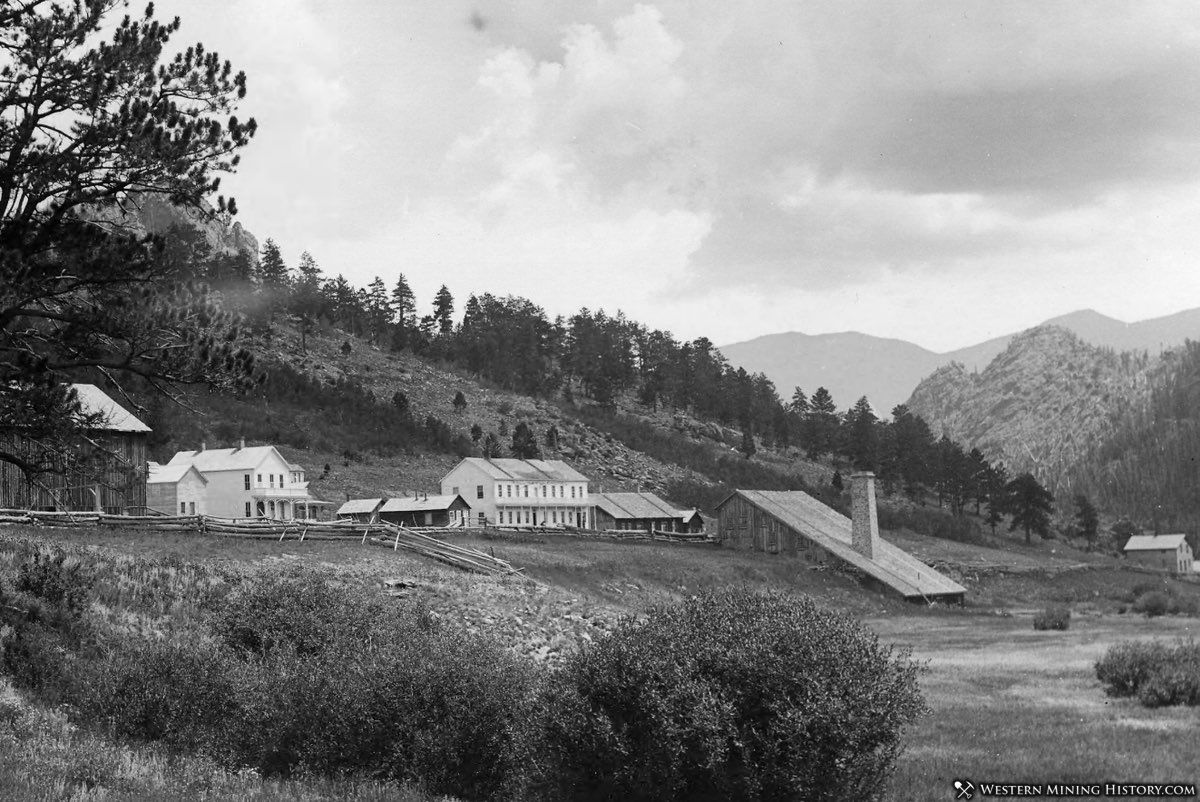
Date Settled: 1868
Status: Active Town
Rollinsville was founded as a mining and transportation center. It’s position at the base of Rollins Pass kept the town alive when many other camps faded away. Rollinsville has been an active community for over 150 years and is one of Colorado’s oldest towns.
Russell Gulch
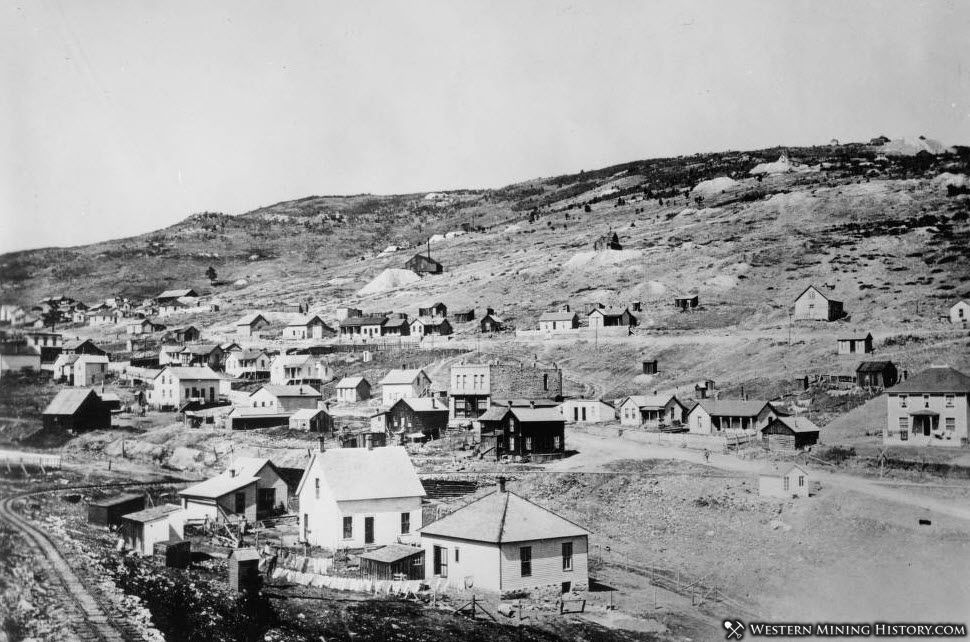
Date Settled: 1859
Status: Ghost Town
Russell Gulch was founded by Green Russell, a rival of prospector John Gregory, who beat Russell to the rich mines down the mountain at Gregory Gulch. Russell and his party made their own discovery though, and the town of Russell Gulch became another important mining community in Gilpin County.
Today Russell Gulch is still home to a handful of people and some historic buildings remain.
Grand County
Grand County didn’t have much historical mining activity, but it is included here for the purpose of adding the town of Corona to the list.
Corona
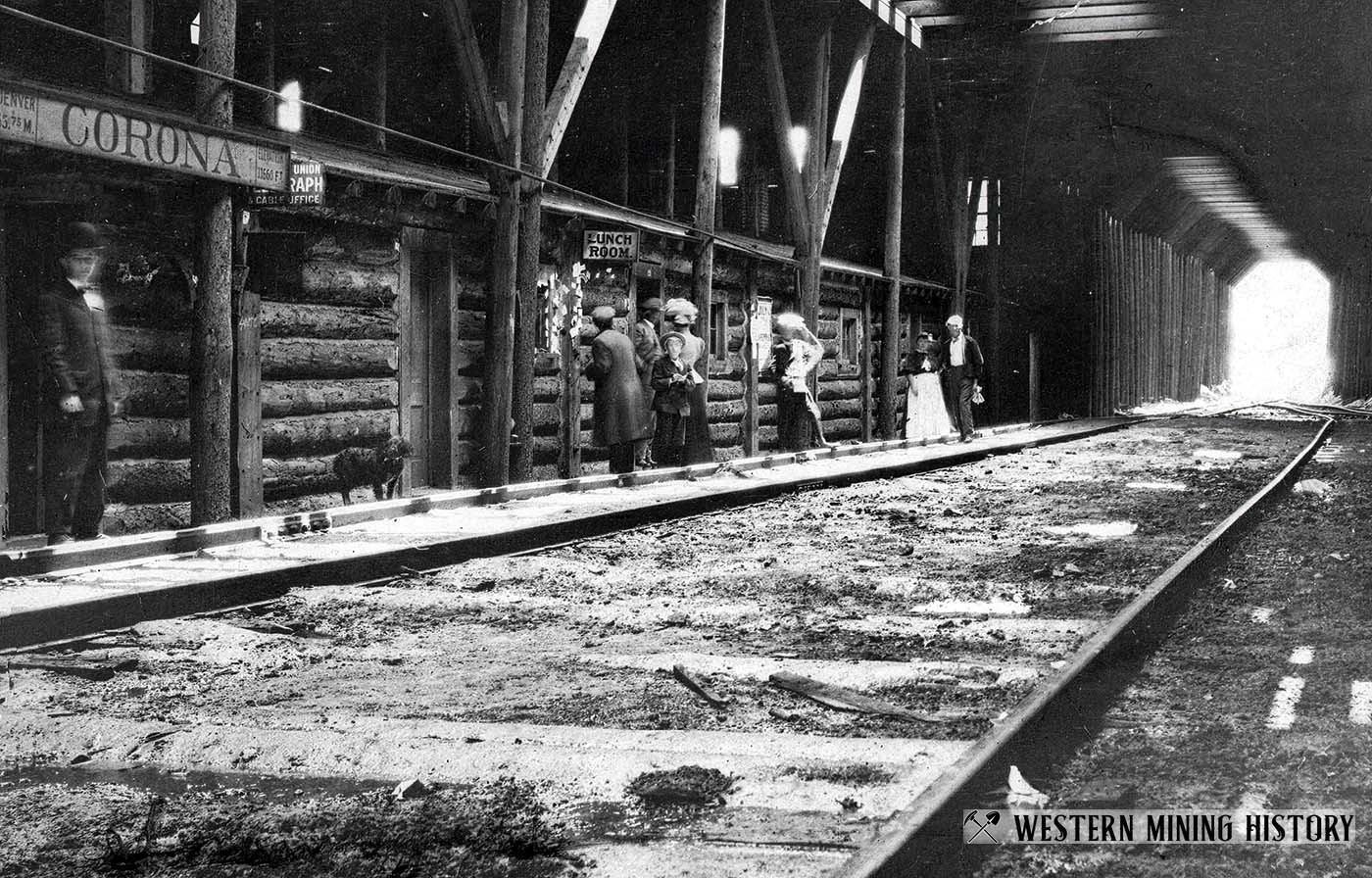
Date Settled: 1904
Status: Ghost Town
While not a mining town, Corona was a vital part of the network of railroads that allowed mining to flourish in Colorado. It is also one of the most unusual settlements in the West.
At 11,600 feet, Corona was the site of the highest elevation standard gauge rail station in North America. Corona’s primary function was to keep trains running in impossible winter conditions. The entire settlement of Corona existed in giant snowsheds, as the image above illustrates.
With the Moffat Tunnel finally being completed in 1928, Corona’s days as the nation’s most extreme rail station were numbered. The route over the pass was used sporadically over the next couple of years, but was abandoned. By 1935 the tracks were removed and Corona was no more.
Gunnison County
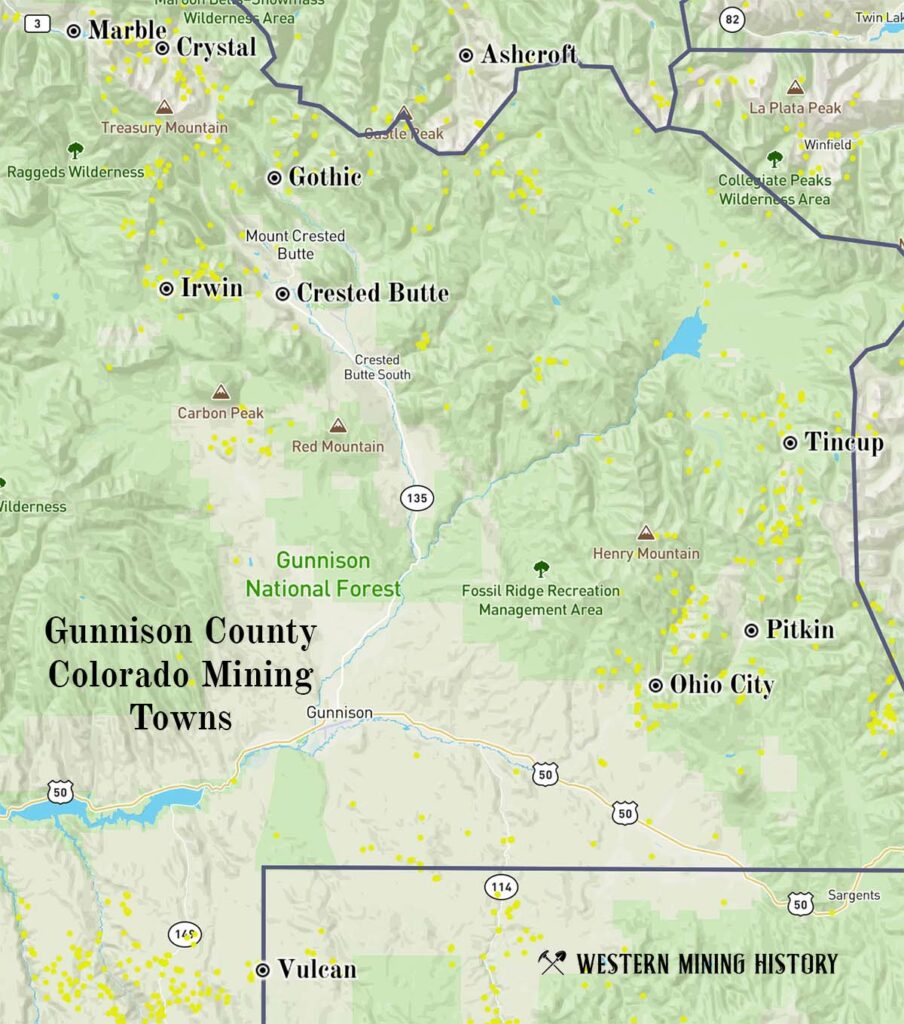
Crested Butte
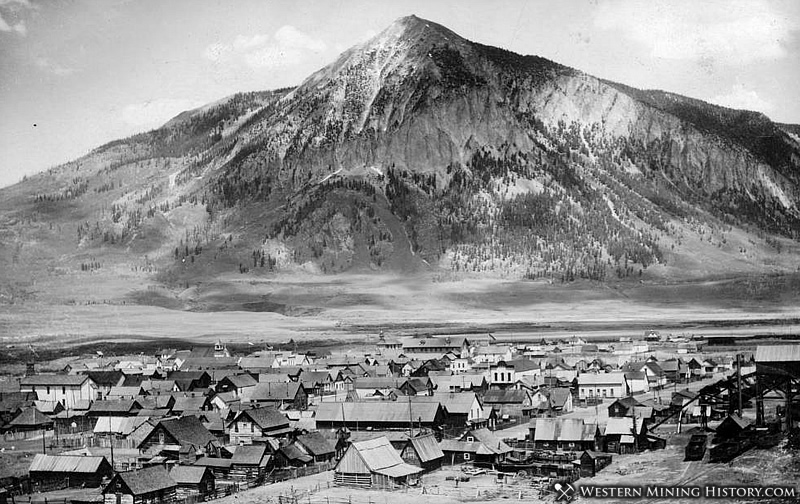
Date Settled: 1880
Status: Active Town
Crested Butte was laid out in 1878 by Howard Smith, and was incorporated in 1880. The town was aggressively promoted as the supply and commerce center of the Elk Mountain region’s numerous mines and camps. Ultimately it was coal mining that would become the area’s most important industry.
Crested Butte was an active coal mining town for over seven decades. The mines closed in the 1950s and the town has transitioned to a popular tourist destination.
Crystal
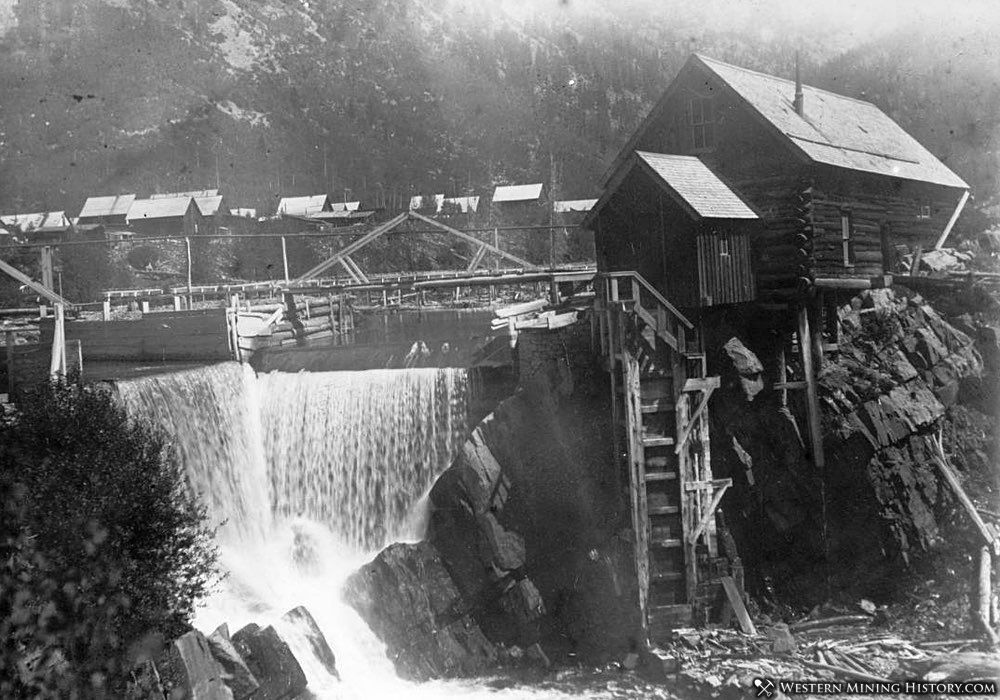
Date Settled: 1880
Status: Ghost Town
Crystal was established during a small boom in 1880 when word got out that silver, zinc, and copper had been located in the Elk Mountains by the Crystal River. At its peak, Crystal had two hotels, a barber shop, a general store, a saloon and a pool hall along with a population of around 500.
Today Crystal is a very remote ghost town that is popular with back country enthusiasts. The Crystal mill still stands and is one of the most photographed historic structures in the West.
Gothic
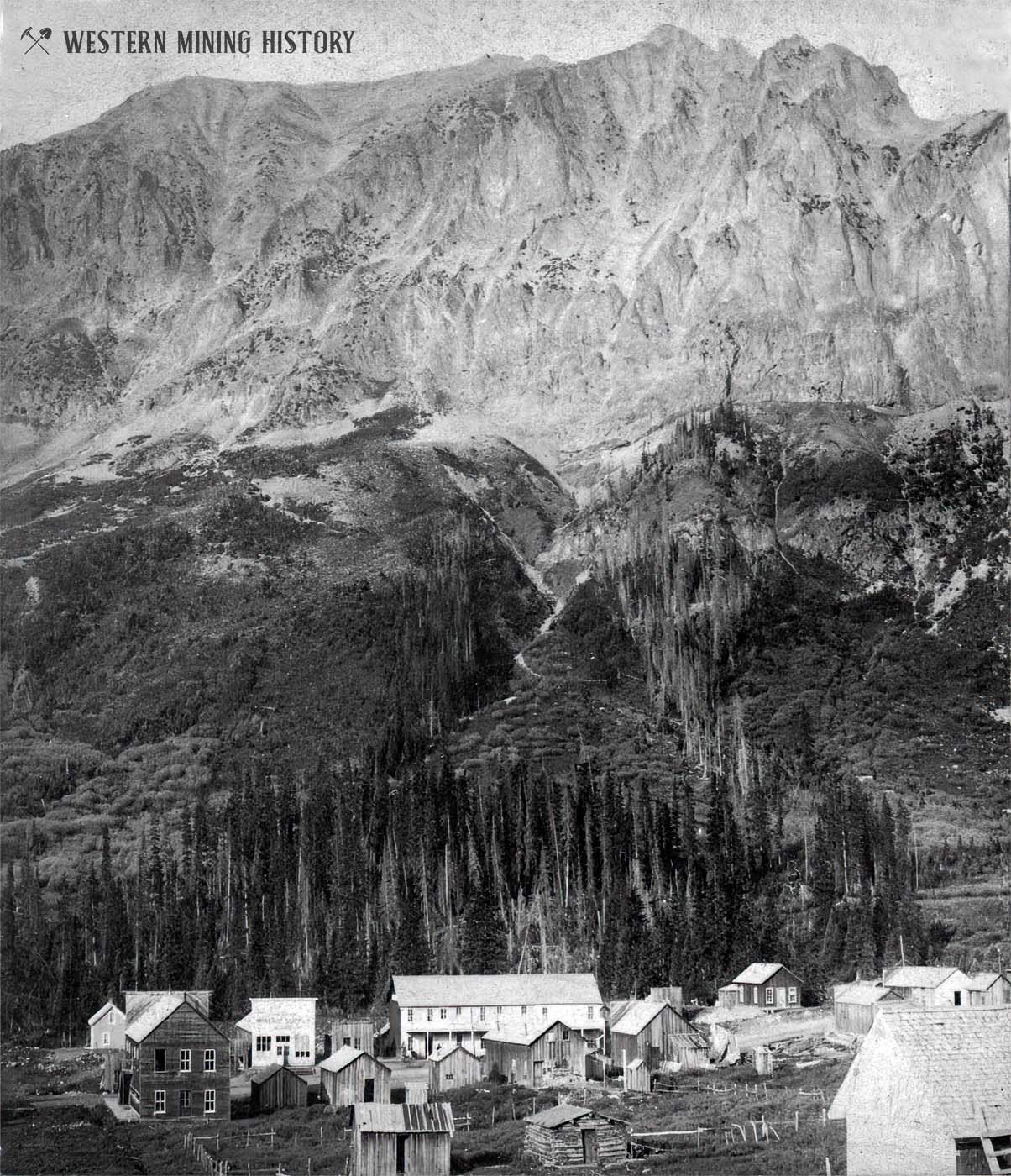
Date Settled: 1879
Status: Near Ghost Town (staff of a research station live here seasonally)
Following many exciting silver discoveries, Gothic became a bustling silver camp during the first few years of the 1880s. Gothic was one of the towns that General Grant visited during his 1880 tour of Colorado mining districts.
Gothic had a post office from 1879 to 1896 and from 1907 to 1914. In 1928 the town had just one resident left. That year, the entire town was purchased and converted to the Rocky Mountain Biological Laboratory which still operates today.
Irwin
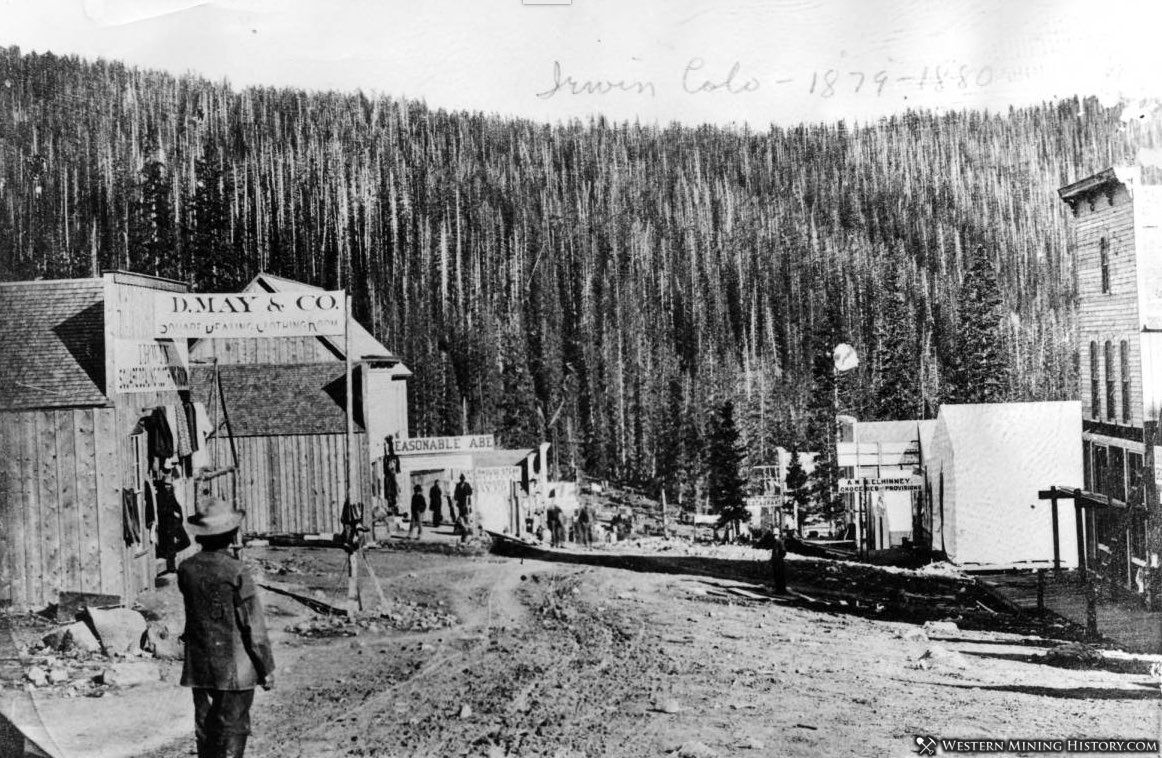
Date Settled: 1879
Status: Ghost Town
Irwin was settled after rich silver ore was discovered in the fall of 1879. The town was also commonly known as Ruby or Ruby Camp.
Irwin’s boom only lasted a couple years, and by 1884 the town had gone from one of Colorado’s largest and most famous camps to just another sleepy mountain mining camp. The mines produced intermittently and kept Irwin alive for many years, but the post office closed in 1900 and by the 1920s the town was deserted.
Marble
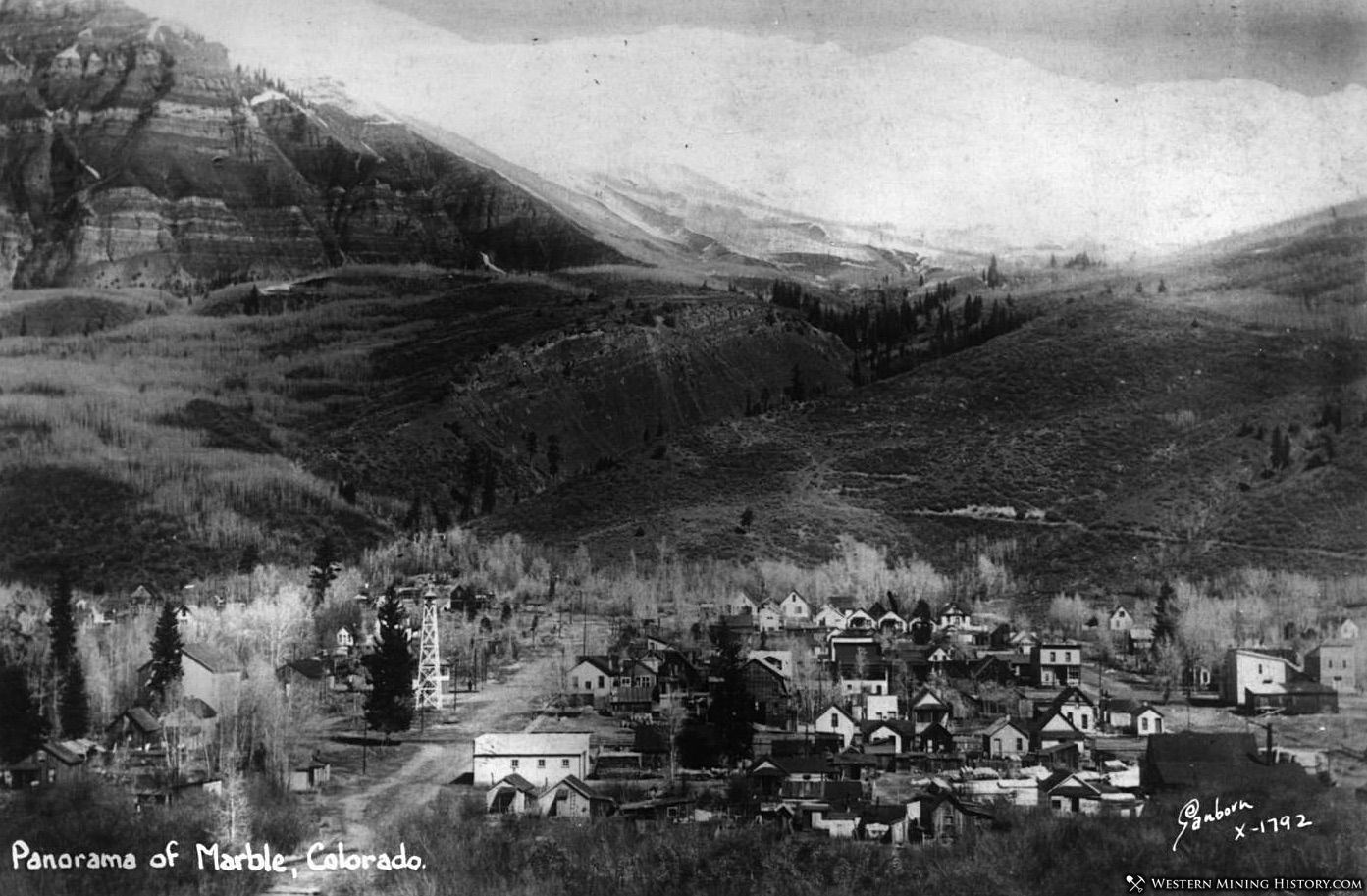
Date Settled: 1880s
Status: Active Town
Marble is the location of one of the world’s largest and highest quality marble deposits. A settlement was established here in the 1880s as a supply point for prospectors in the area but remained a small outpost until the late 1890s when sporadic shipments of marble started leaving the valley. It wasn’t until 1899 that the town of Marble was incorporated.
The marble for the Tomb of the Unknown Soldier was quarried from the Yule quarry at Marble. The largest block took a team of 75 men an entire year and three attempts to finally get the piece they needed.
Today the marble quarry is back in production, and the town of Marble has become a popular tourist destination.
Ohio City
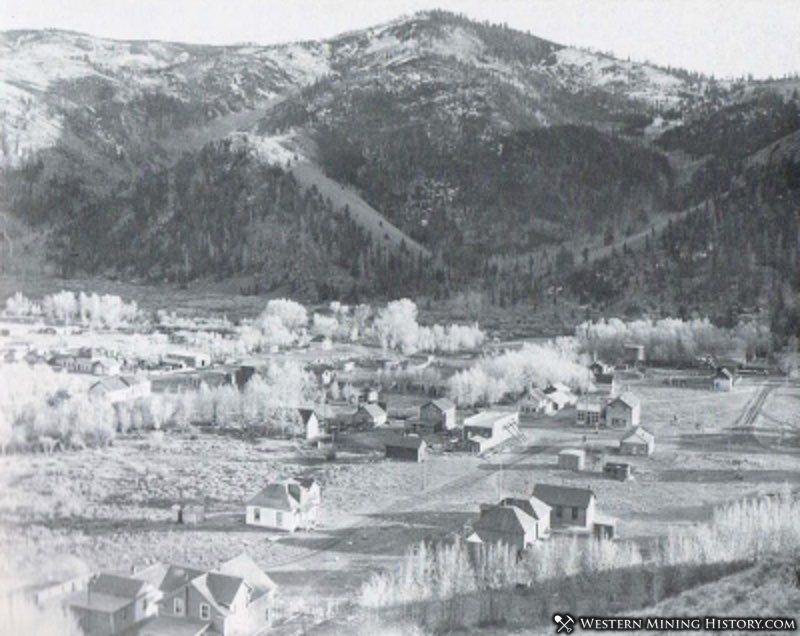
Date Settled: 1875
Status: Near Ghost Town
Ohio City was founded in 1879 at a site that was previously known as the placer mining camp of Eagle City. Ohio City was never the site of a major excitement or boom, but endured for many decades as a mining center.
Ohio City was served by a post office from 1880 to 1972. Today the town has around 50 residents.
Pitkin
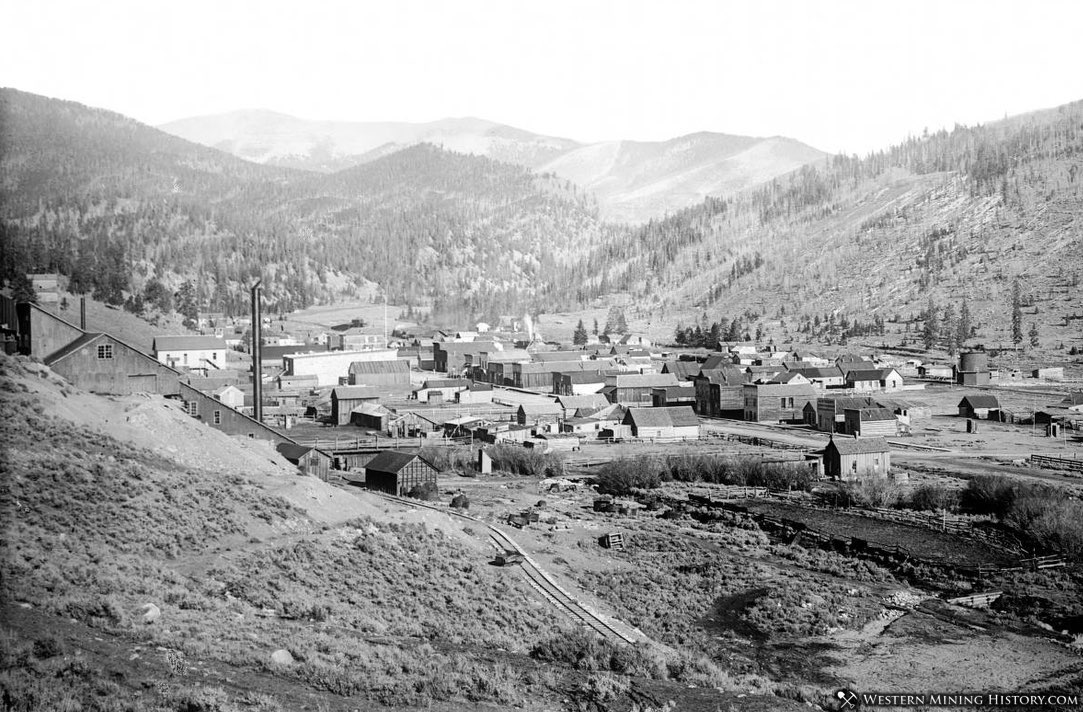
Date Settled: 1879
Status: Near Ghost Town
Pitkin, originally named Quartzville, was founded in 1879. By the early 1880s, it was a prosperous and growing town, owing it’s success to the many productive mines in the area. By 1882 the town had dozens of businesses, hundreds of homes, and a population of over 1,000.
Today Pitkin has a year-round population of around 70 people and is a popular summer tourist destination.
Tincup
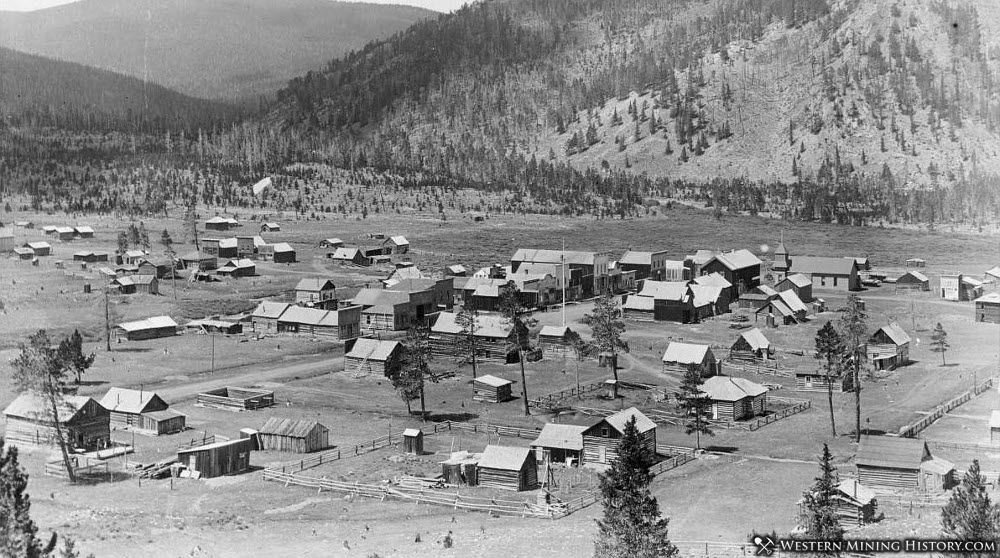
Date Settled: 1879
Status: Ghost Town
In 1878, lode deposits were discovered in the area, and the town of Virginia City was laid out in March 1879. By the 1880 census, the town had a population of 1,495. Virginia City was incorporated in August 1880, but confusion with Virginia City, Nevada, and Virginia City, Montana, caused the residents to change the name. The town was reincorporated in July 1882 as Tincup.
The town population declined when the mines were exhausted. The post office closed in 1918, and the last town election was held in 1918.
Vulcan
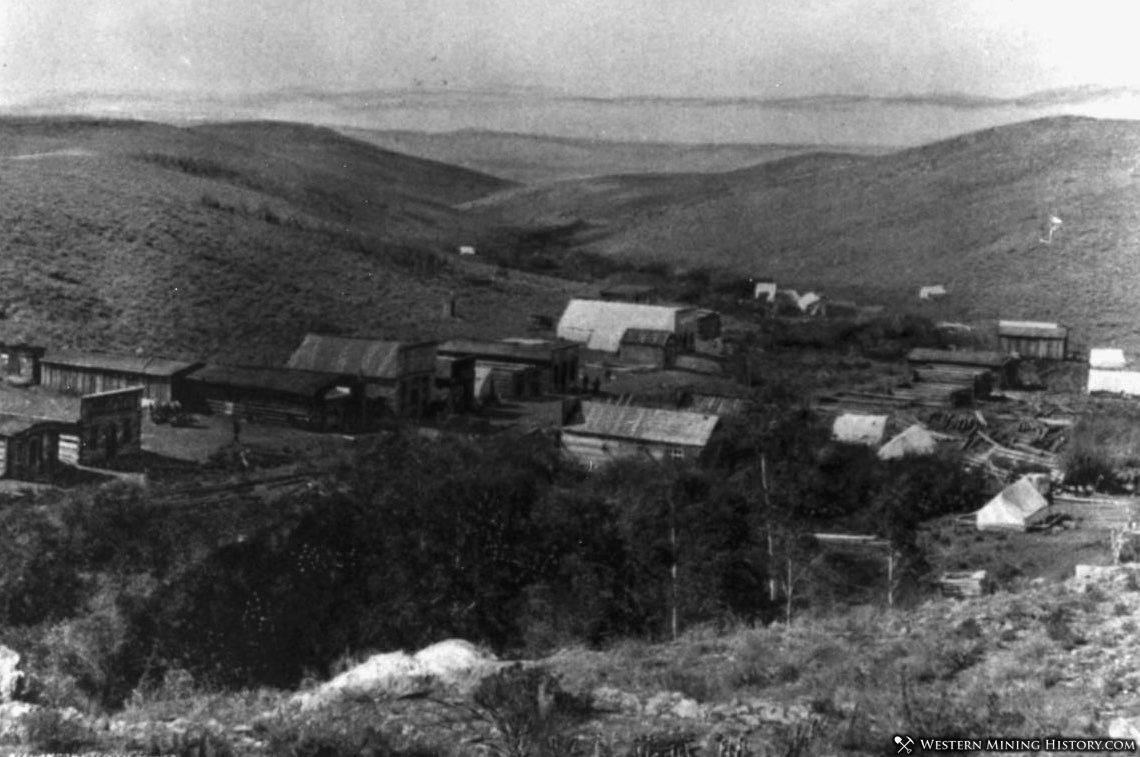
Date Settled: 1895
Status: Ghost Town
Gold deposits was discovered in 1894 on part of what became known as the Gunnison Gold Belt. The mines at Vulcan were the most productive in the belt, and Vulcan rapidly developed into a town of around 500 people.
The mines at Vulcan were unusual in that the gold ore was situated among sulfur beds. Along with the periodic fires that resulted, a miner from the time stated “The water of the mine is charged with sulphuric acid and eats of the machinery so that it has to be frequently replaced.”
Hinsdale County
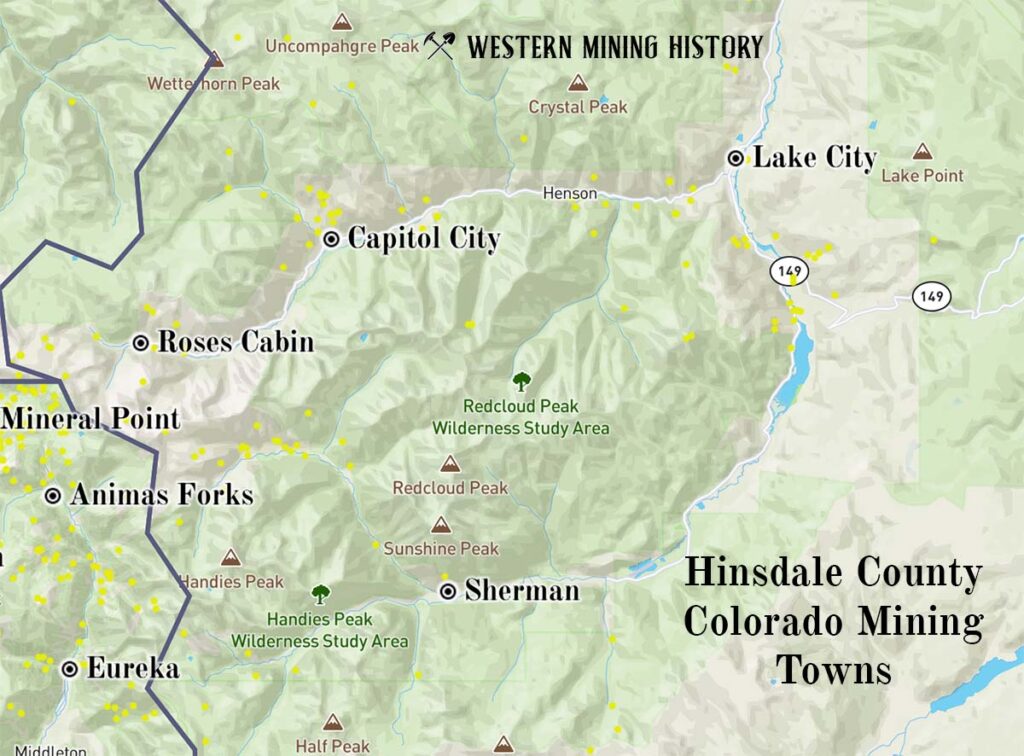
Capitol City
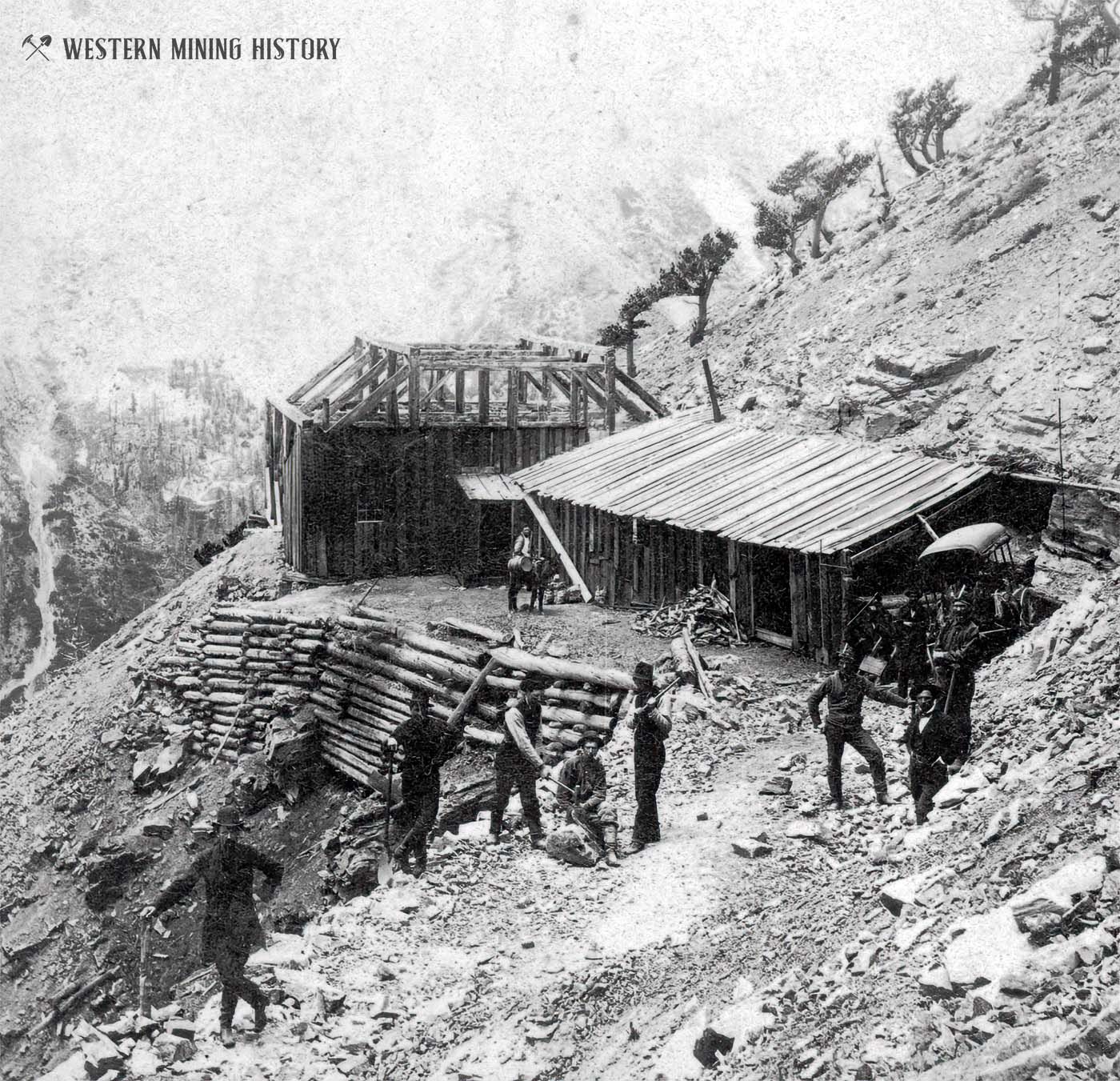
Date Settled: 1876
Status: Ghost Town
Capitol City was originally established with the name Galena in the fall of 1876. The name was changed to Capitol City in 1877 as part of George S. Lee’s grand scheme to transform the young camp into the state capitol. The state capitol scheme didn’t work out, but the town remained a viable mining center for several decades.
Lake City
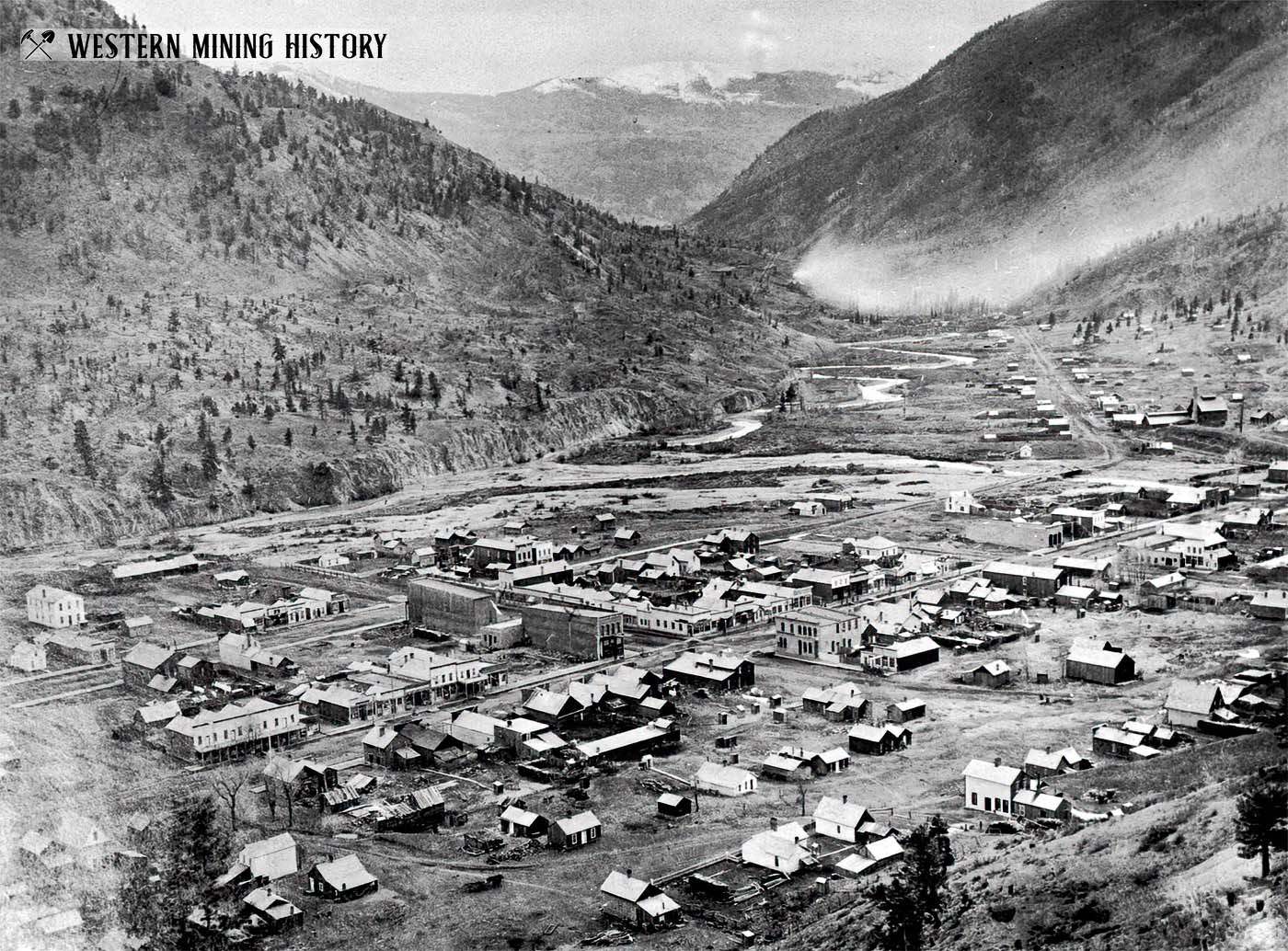
Date Settled: 1871
Status: Active Town
Lake City is the seat of Hinsdale County, the least populated county in Colorado. The town originated as one of the most isolated of the major 19th century Colorado silver camps and was named for the nearby Lake San Cristobal.
Lake City is a popular tourist town, and is one of the West’s most isolated and beautiful towns. Numerous historic buildings from the late 1800s have been preserved here.
Roses Cabin
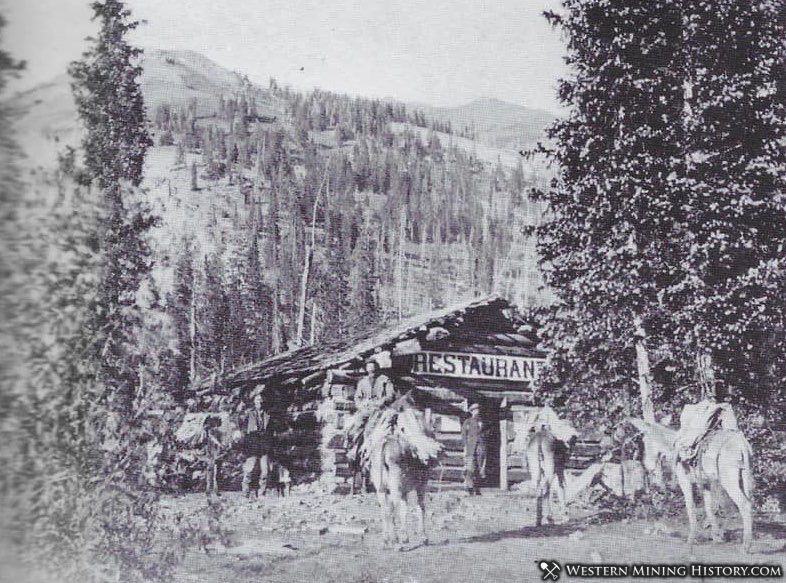
Date Settled: 1874
Status: Ghost Town
Roses Cabin started as a wayside deep in the San Juan mountains of Colorado, on the trail between Ouray and Lake City. A regular stop for travelers and miners during the 1870s and 1880s, Roses Cabin eventually served as ” bar, restaurant, hotel, store, and post office – all under one roof”. Miners built their own cabins at the site and a camp of around 50 people formed.
Sherman
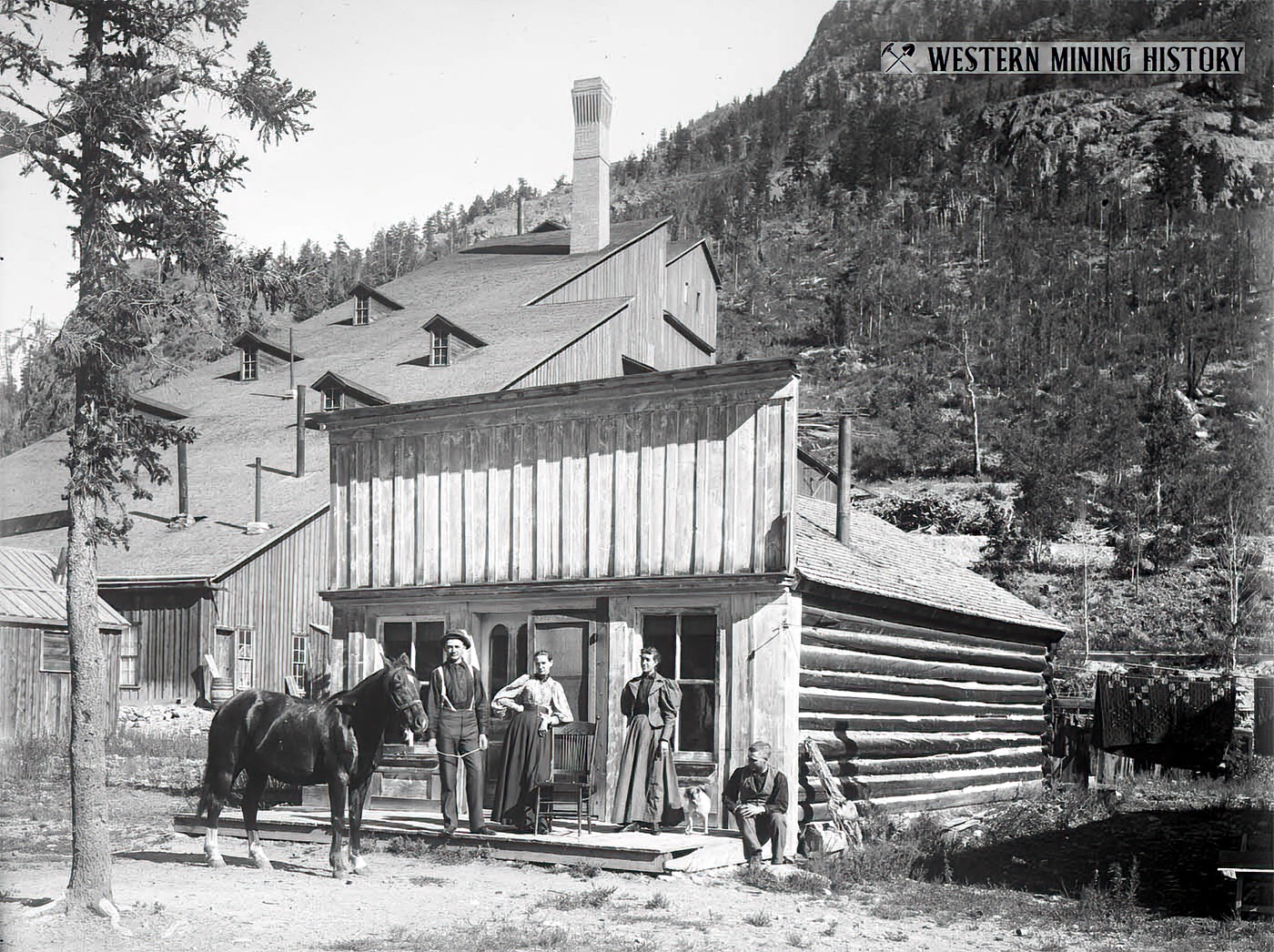
Date Settled: 1875
Status: Ghost Town
Settled after ore discoveries in the late 1870s, Sherman had its heyday in the 1880’s. Today, nothing is left of the town other than a historical marker.
La Plata County
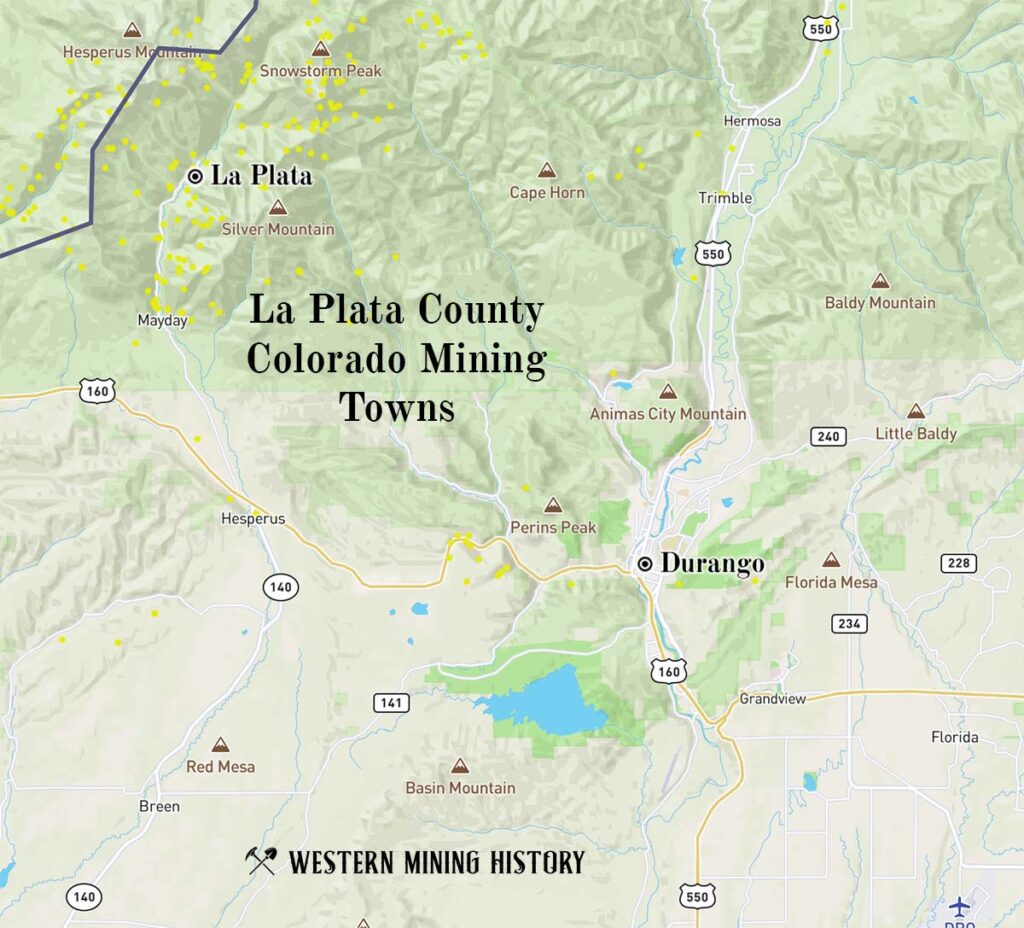
Durango
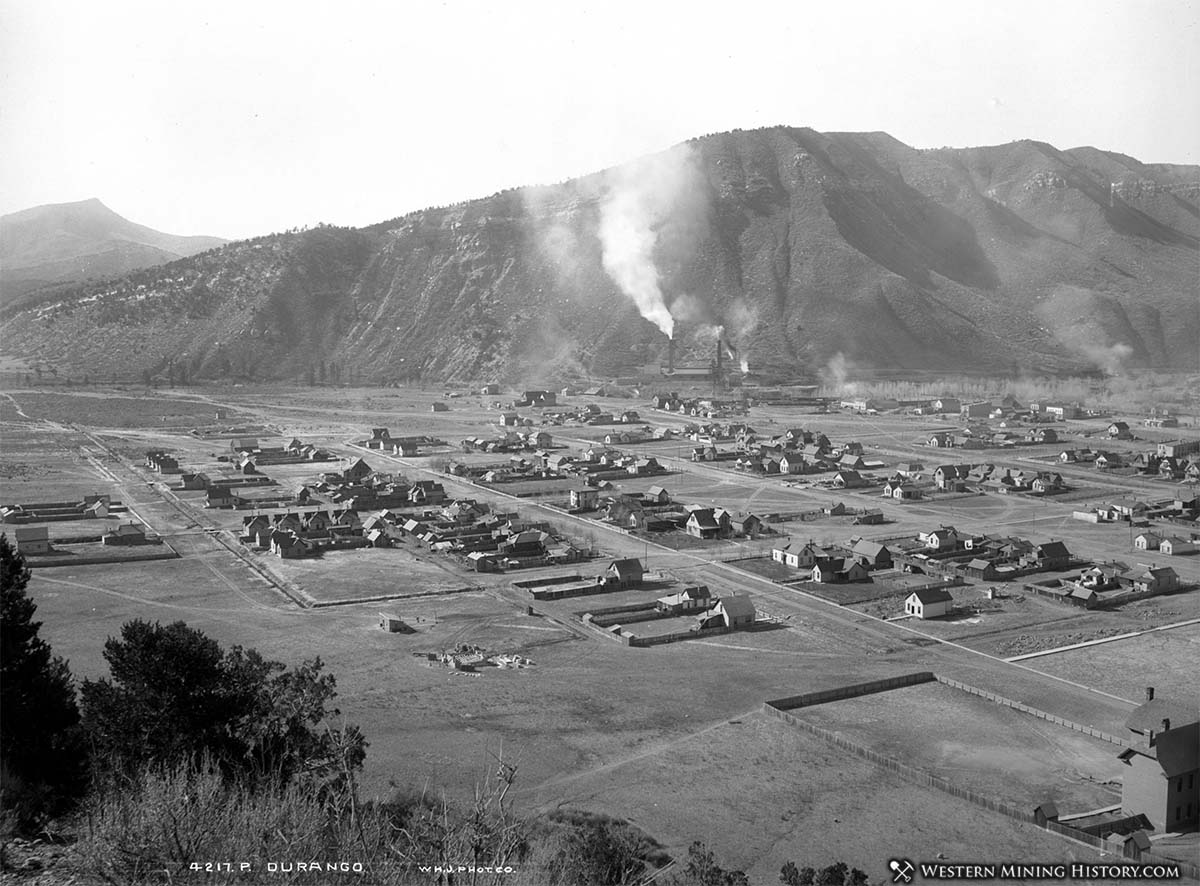
Date Settled: 1880
Status: Active Town
Durango was organized in September 1880 by the Denver and Rio Grande Railroad (D&RG) to serve the San Juan mining district. The town became an important supply and transportation center for the remote region. By the 1890’s Durango had also risen to prominence as the region’s smelting center. During the post World War 2 Uranium boom Durango was the site of a uranium mill that operated from 1942 until 1963.
Today, Durango is a bustling tourist town that has transitioned from a mining hub to the recreation gateway of the San Juan mountains. The Durango & Silverton Narrow Gauge Railroad has operated continuously for more than 125 years and now brings trainloads of tourists to the alpine mining town of Silverton.
La Plata
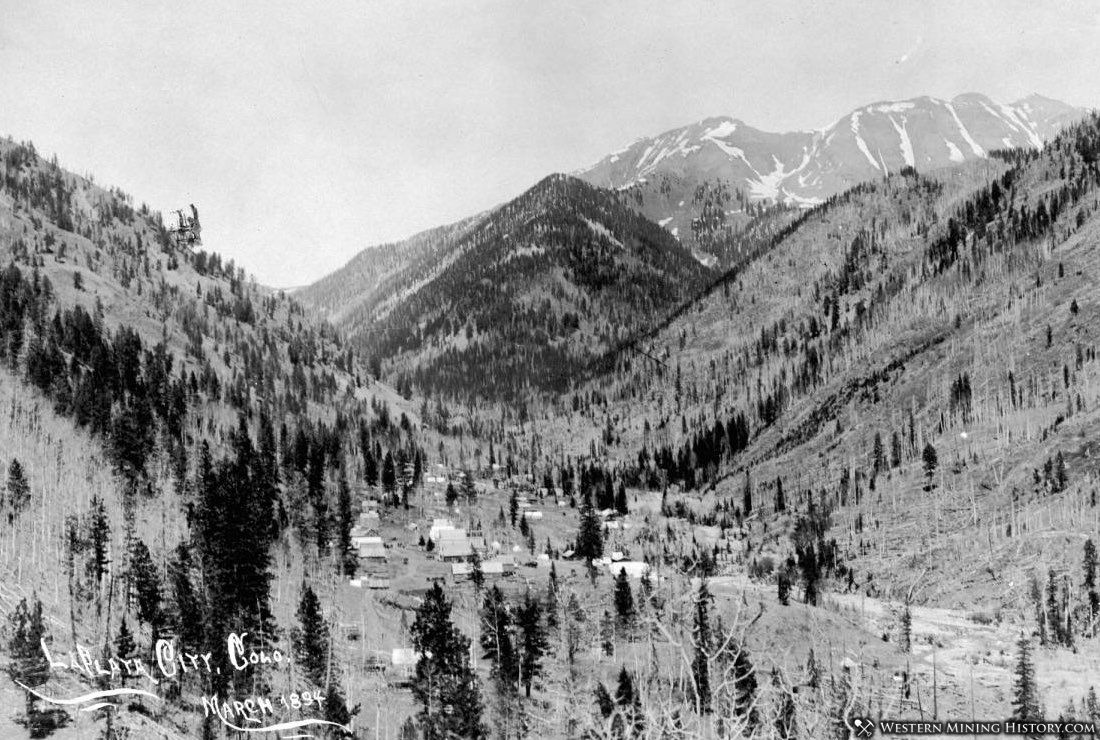
Date Settled: 1870s
Status: Ghost Town
La Plata, or La Plata City, had a brief period of prosperity in the 1880s, after which it seems the town held on for at least several decades but a complete history of the settlement is difficult to piece together. Today La Plata is a ghost town.
Lake County
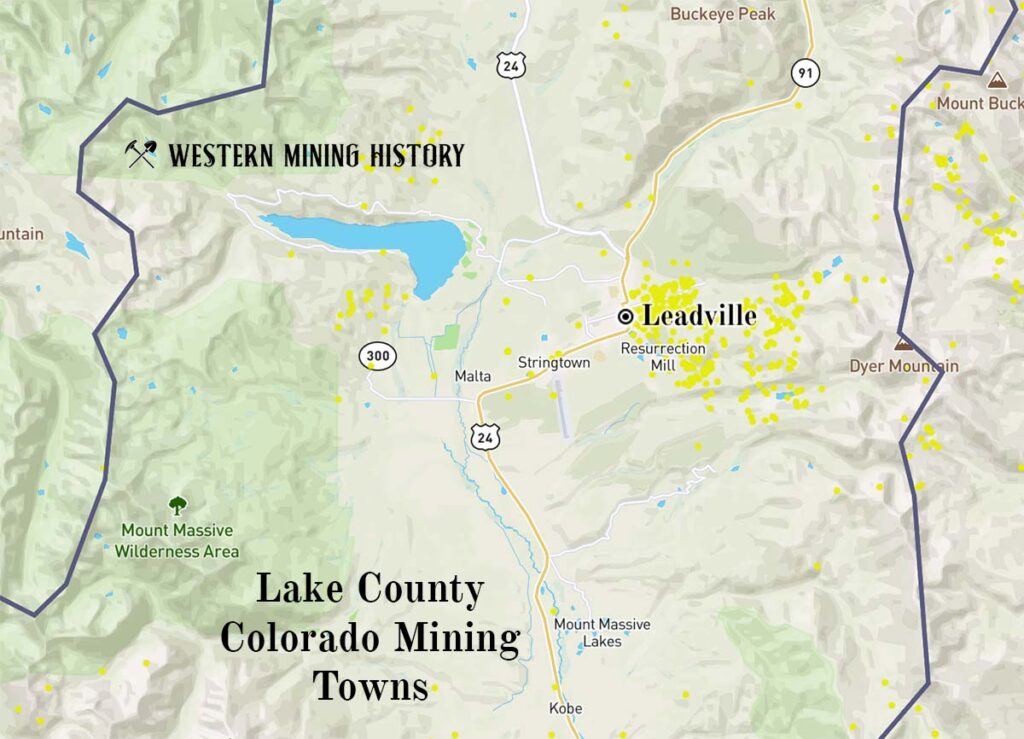
Leadville
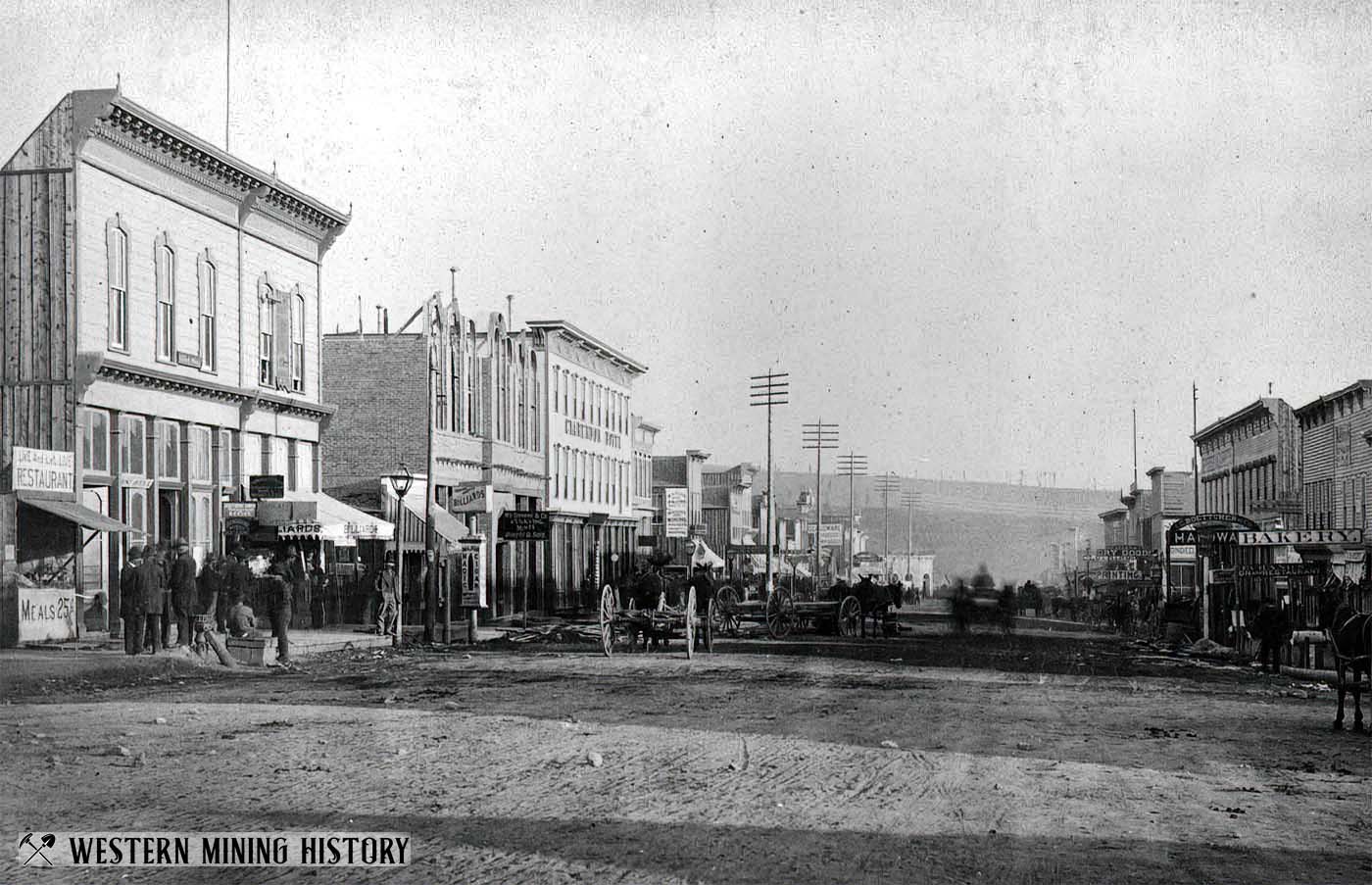
Date Settled: 1860s
Status: Active Town
The Leadville area was the location of placer mining in the 1860s. The communities during this period moved frequently as the placers were worked out and new mines were opened. Ultimately the placer mines declined and the area subsisted for years as a mining district of little importance.
Everything changed in the late 1870s as rich silver discoveries were made. The subsequent silver boom was one of the West’s most dramatic and important historical events. Almost overnight Leadville took the title of Colorado’s mining capital from Central City. The great riches that flowed from Leadville mines would establish the city as Colorado’s most important mining center for many years.
Eventually most of the mines closed, but Leadville persisted as a tourist center and a satellite town to the large ski resorts to the north. Many historic buildings remain, and Leadville is one of the West’s premier destinations to experience mining history first hand.
Larimer County
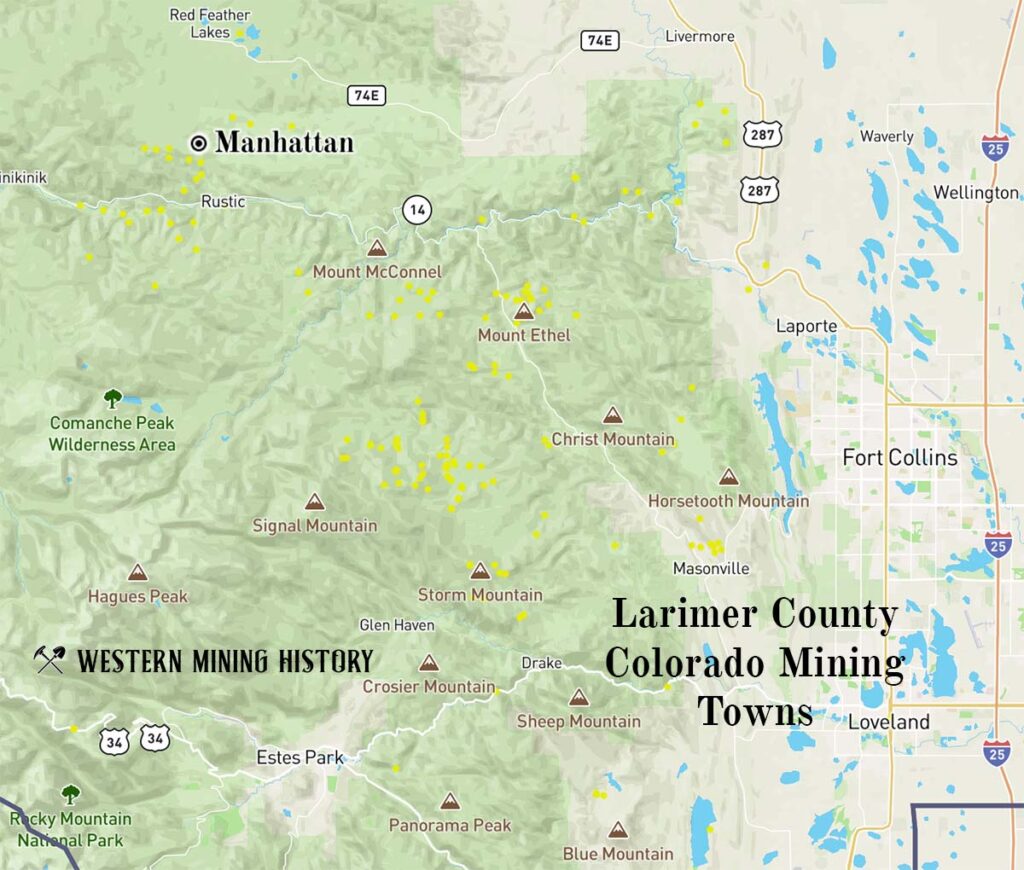
Manhattan
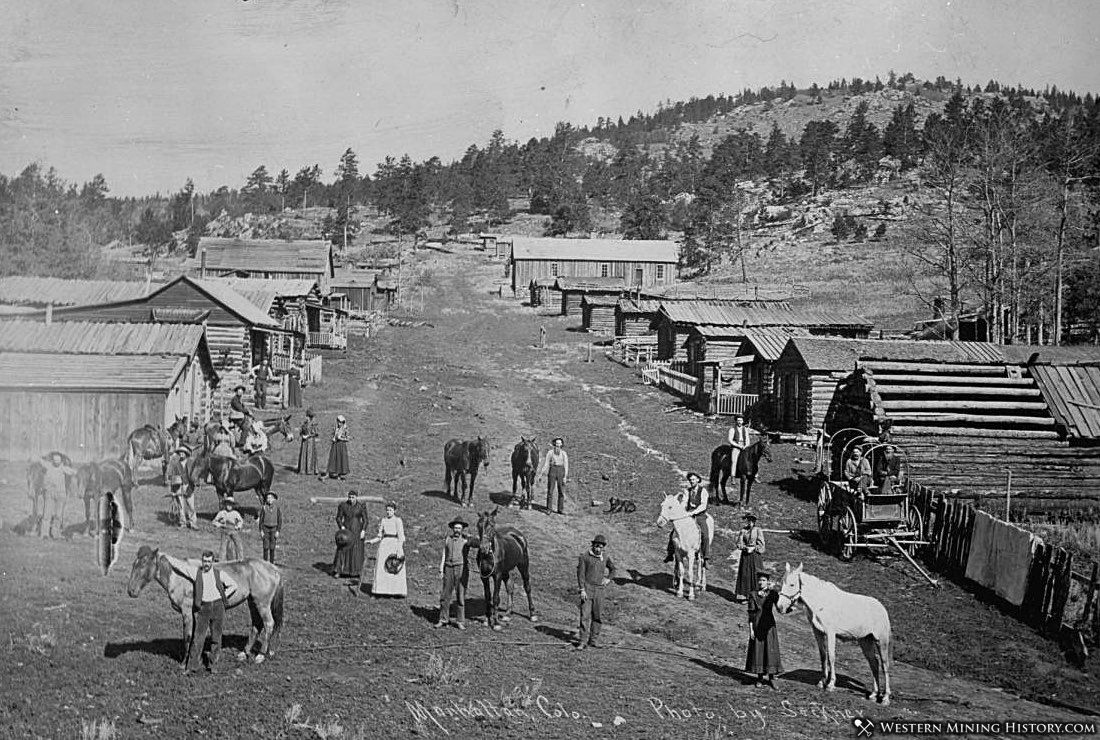
Date Settled: 1886
Status: Ghost Town
Manhattan was the site of a small gold excitement following discoveries in 1886. By 1887 the town was laid out and a post office was established.
Development of the Manhattan district was slow, impeded by the low-grade nature of the local ore and the remote location of the mines. The town peaked in the late 1890s but declined shortly after. The post office was closed in 1900 and the school in 1904.
Today Manhattan is a ghost town with few remains.
Las Animas County
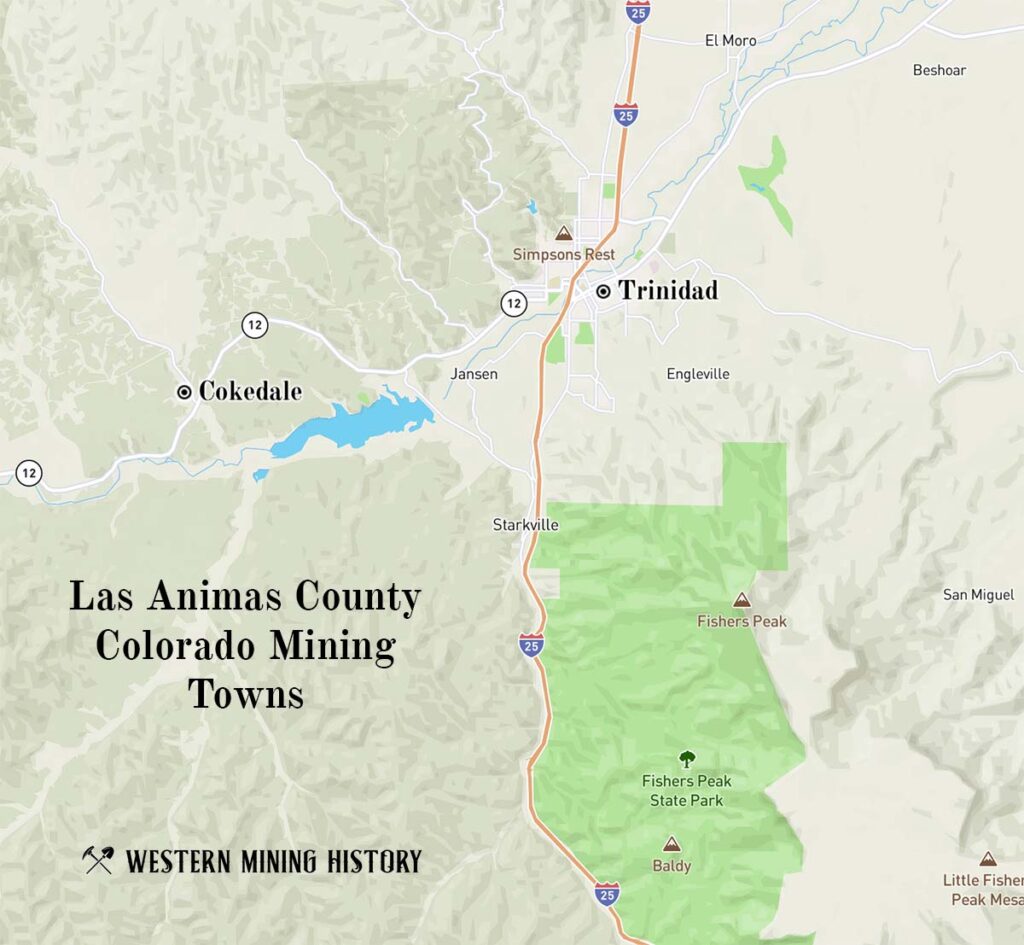
Las Animas County is the location of Colorado’s great coal fields. There are many historic mining towns in the area, and more will be added to this list in the future.
Cokedale
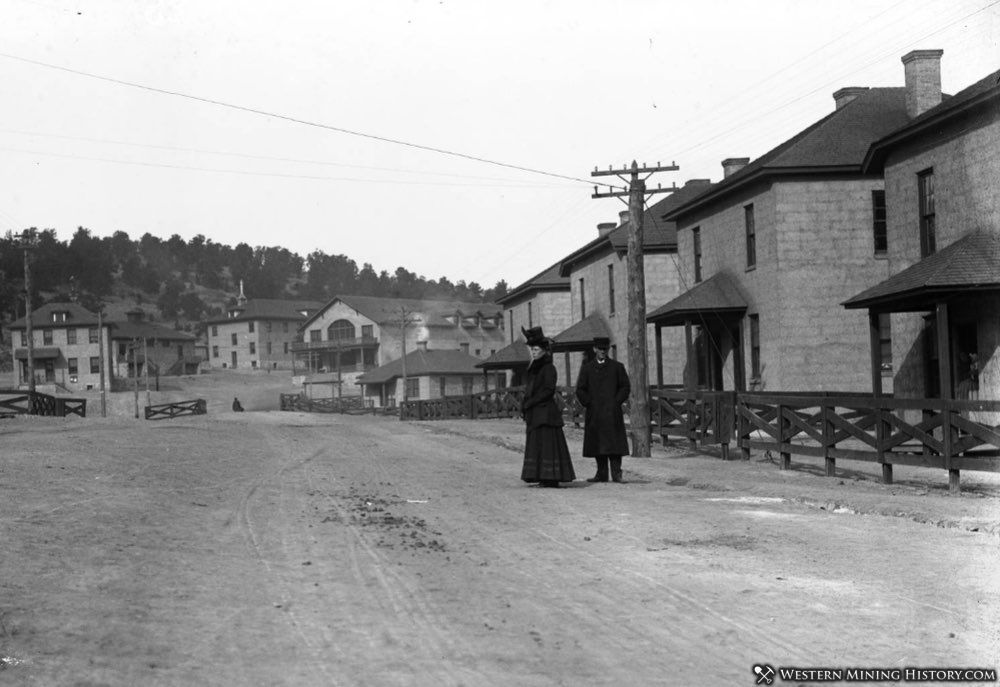
Date Settled: 1906
Status: Near Ghost Town
Cokedale was established as a company town in 1906 by the American Smelting And Refining Company (ASARCO). By 1909, Cokedale had a population of 1,500. In 1984 Cokedale was added to the National Register of Historic Places. The town still has around 100 residents.
Trinidad
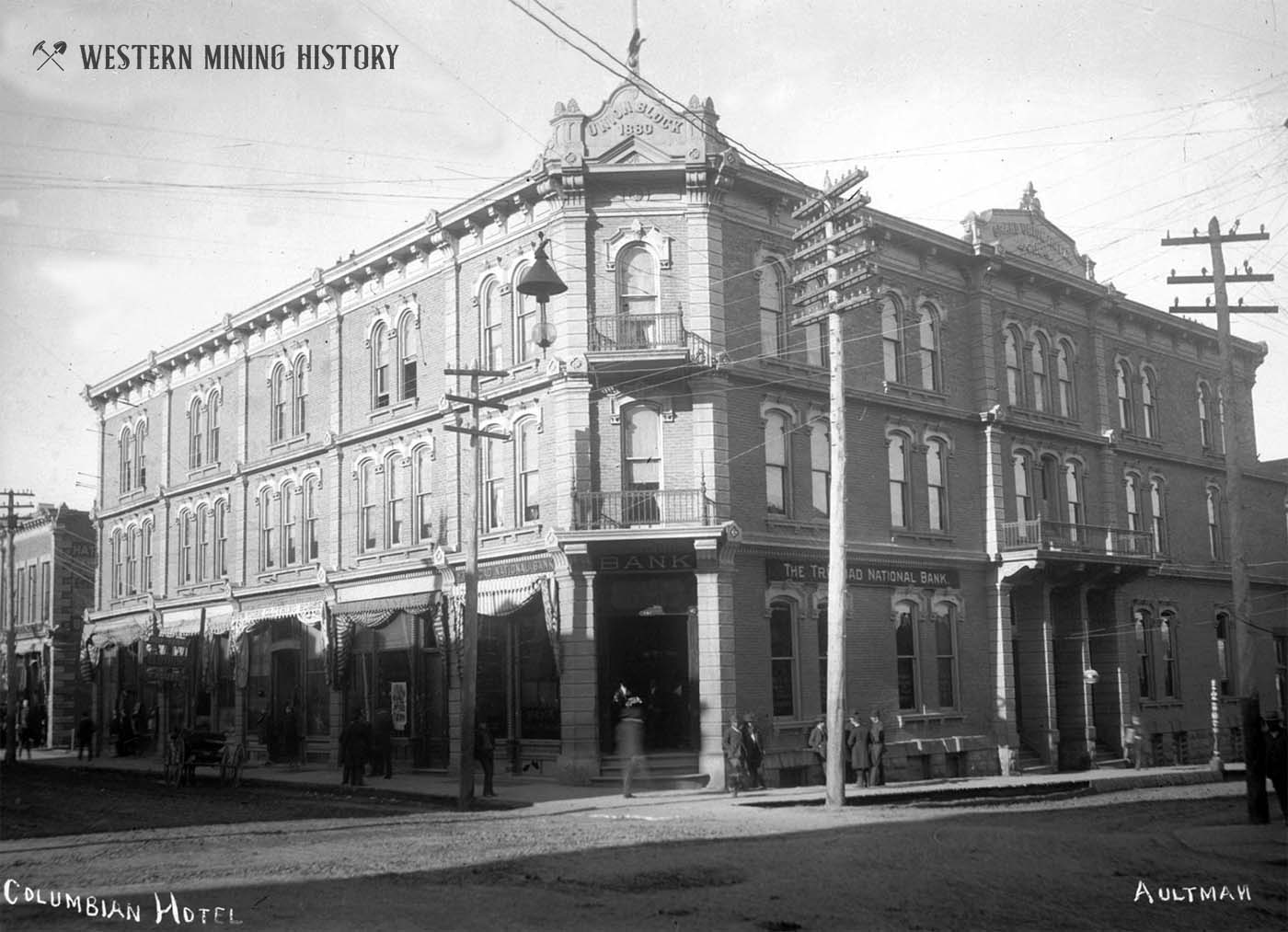
Date Settled: 1876
Status: Active Town
Trinidad was incorporated in 1876 and became the supply and transportation center for the region’s coal mines. The coal from these mines was highly prized for its quality in creating coking fuels for Colorado’s smelters. As the mines and smelters of Colorado grew into a major industry, Trinidad prospered and became a wealthy commercial center full of stunning Victorian homes and buildings.
There is little coal mining left in the region, but Trinidad remains as one of the best-preserved Victorian mining centers in the West.
Mineral County
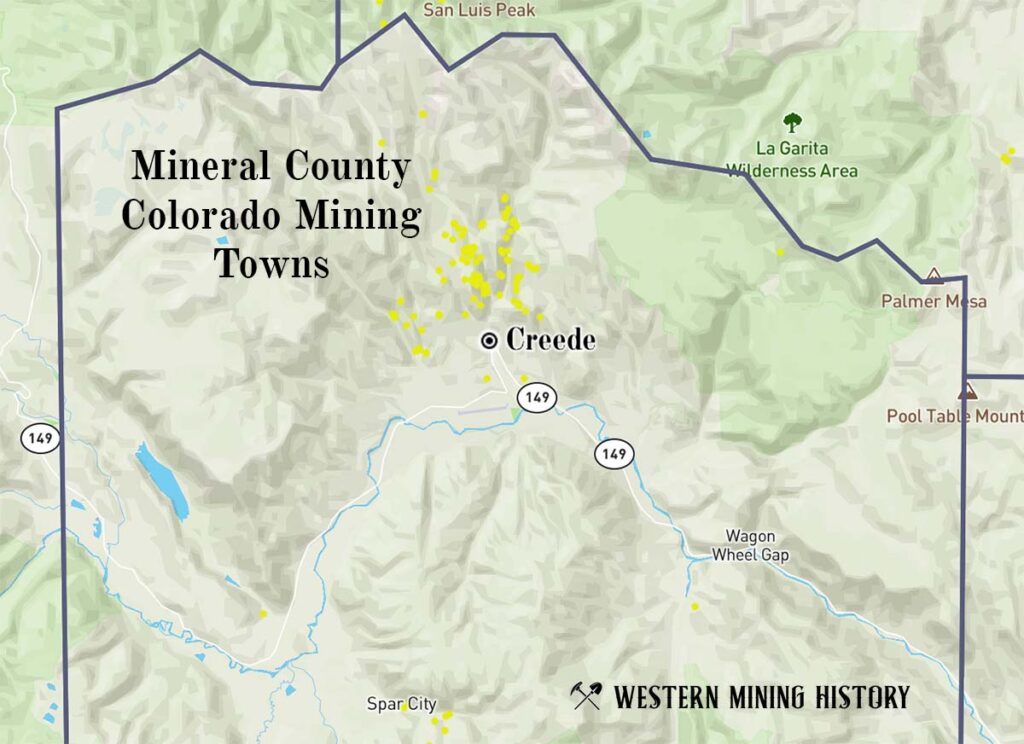
Creede
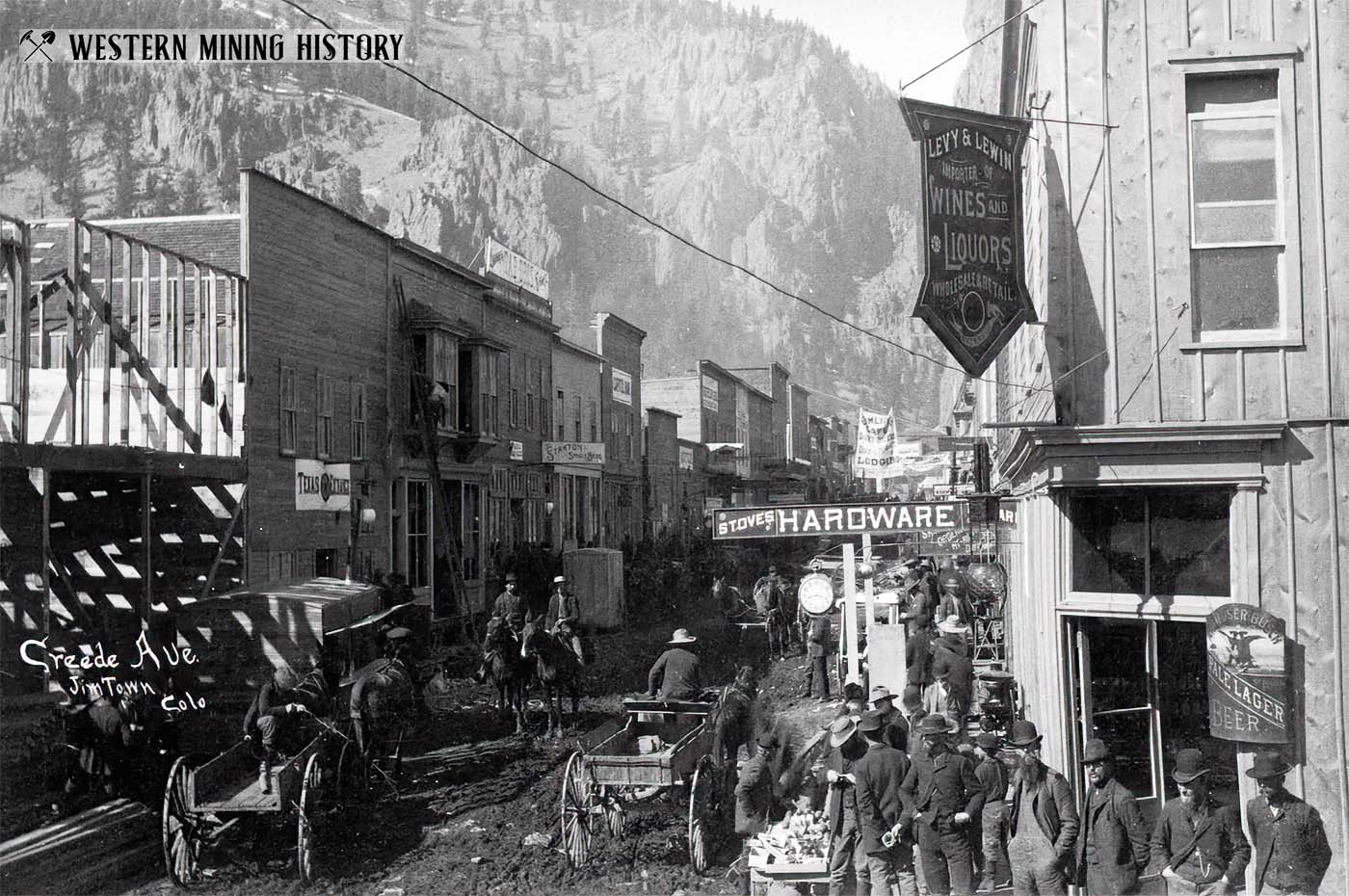
Date Settled: 1890
Status: Active Town
Creede was the location of a significant silver rush in the early 1890s. The town quickly evolved into a major mining center with around 10,000 residents during the peak of the excitement. Creede was, and is, notable for for it’s location against the sheer rock walls of a canyon.
Today, Creede is a tourist destination, including restaurants, hotels, and year round activities. It has around 250 year round residents.
Ouray County
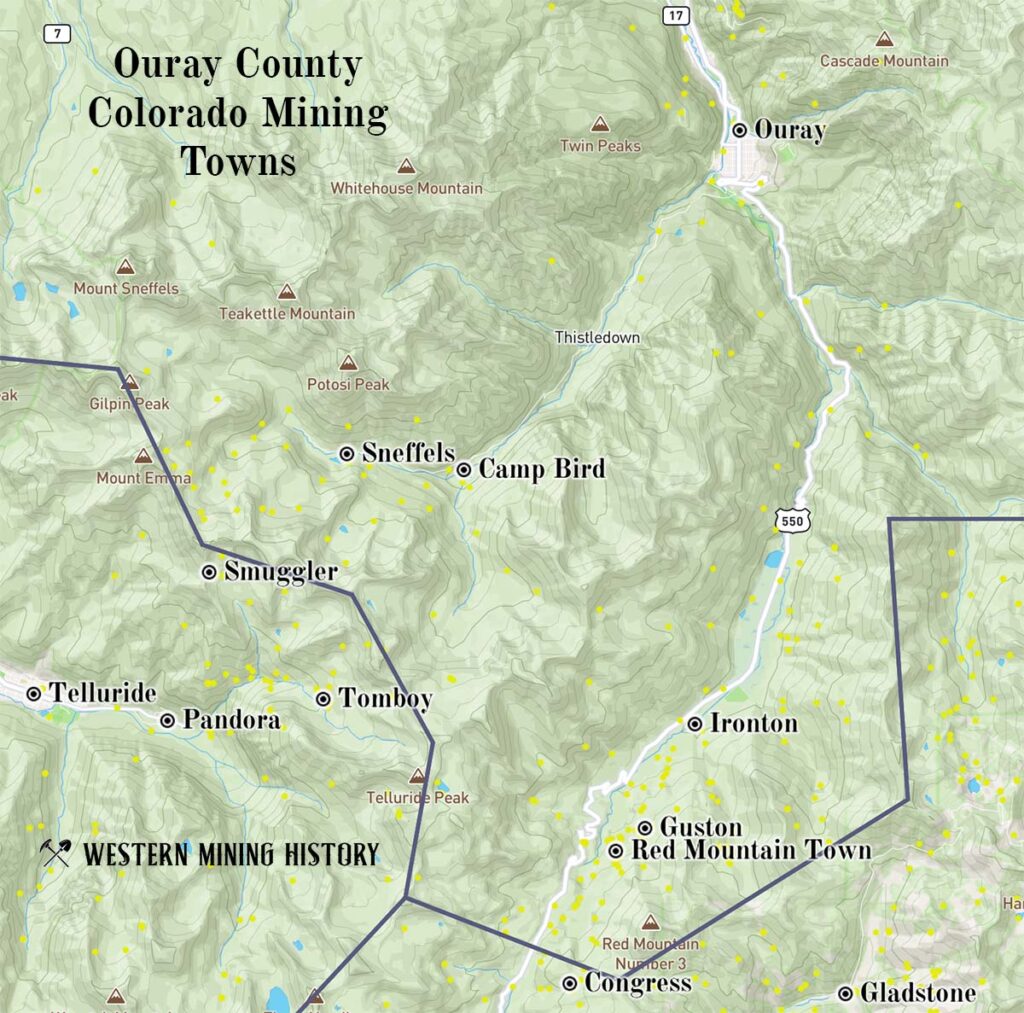
Camp Bird
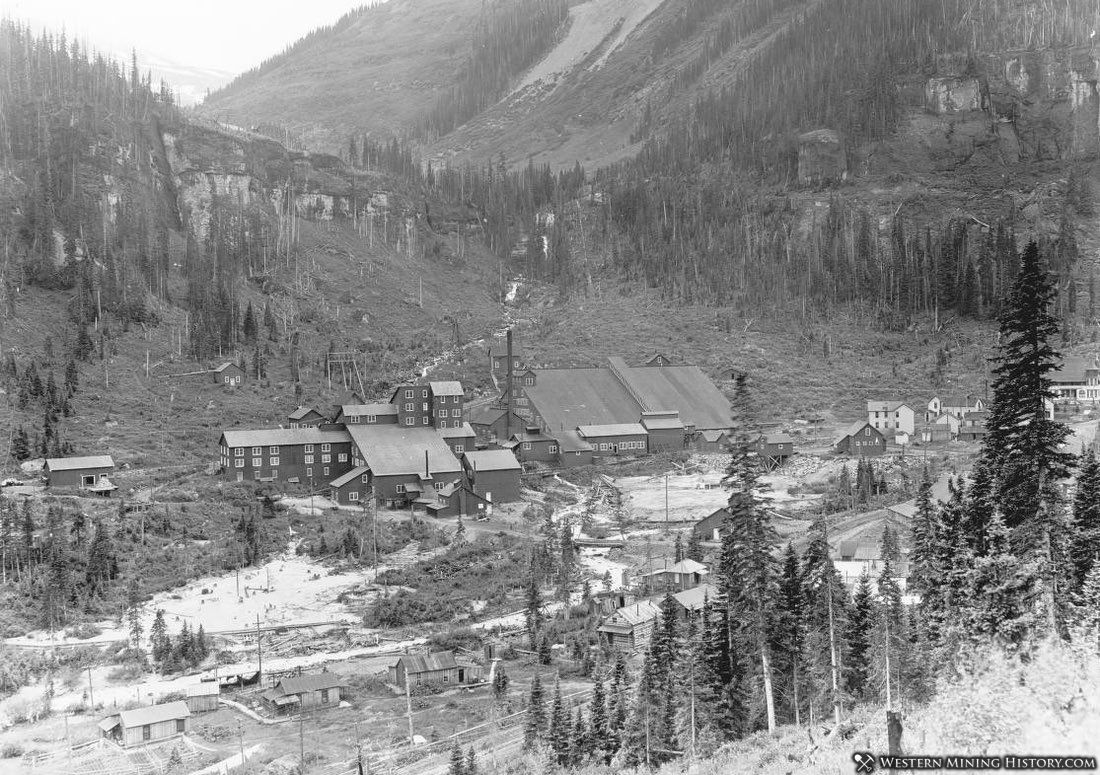
Date Settled: 1897
Status: Ghost Town
Camp Bird was the location of the spectacular mine of the same name, one of Colorado’s richest producers. In 1899 the Silverite-Plaindealer called Camp Bird “The Greatest Gold Mine in Colorado or the Whole Earth”. By the end of 1900 the mine consisted of 103 mining claims on 941 acres, and had twelve mills in operation.
The main “settlement” was the lavish boarding house built for the miners. The Camp Bird boarding house was a three-story structure built to accommodate 400 men. A post office operated here from 1898 to 1918.
Today most of the mine sites have been remediated and the equipment removed. The lower mill site still has some remaining houses, including the superintendent’s office and company housing.
Guston
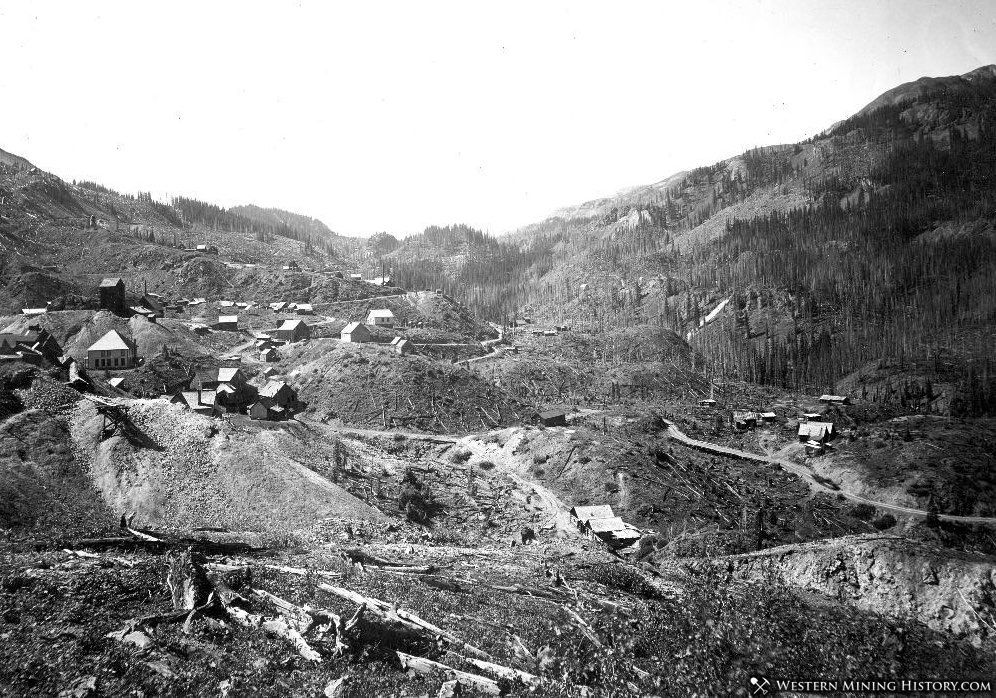
Date Settled: 1883
Status: Ghost Town
Guston was established among the rich mines of the area in 1883. Unlike other mining towns in the area, Guston had no planned layout or official business district. Homes and buildings were simply built near the mines they served, and a scattered and disorganized community grew as a result.
Guston had a post office from 1892 to 1898.
Ironton
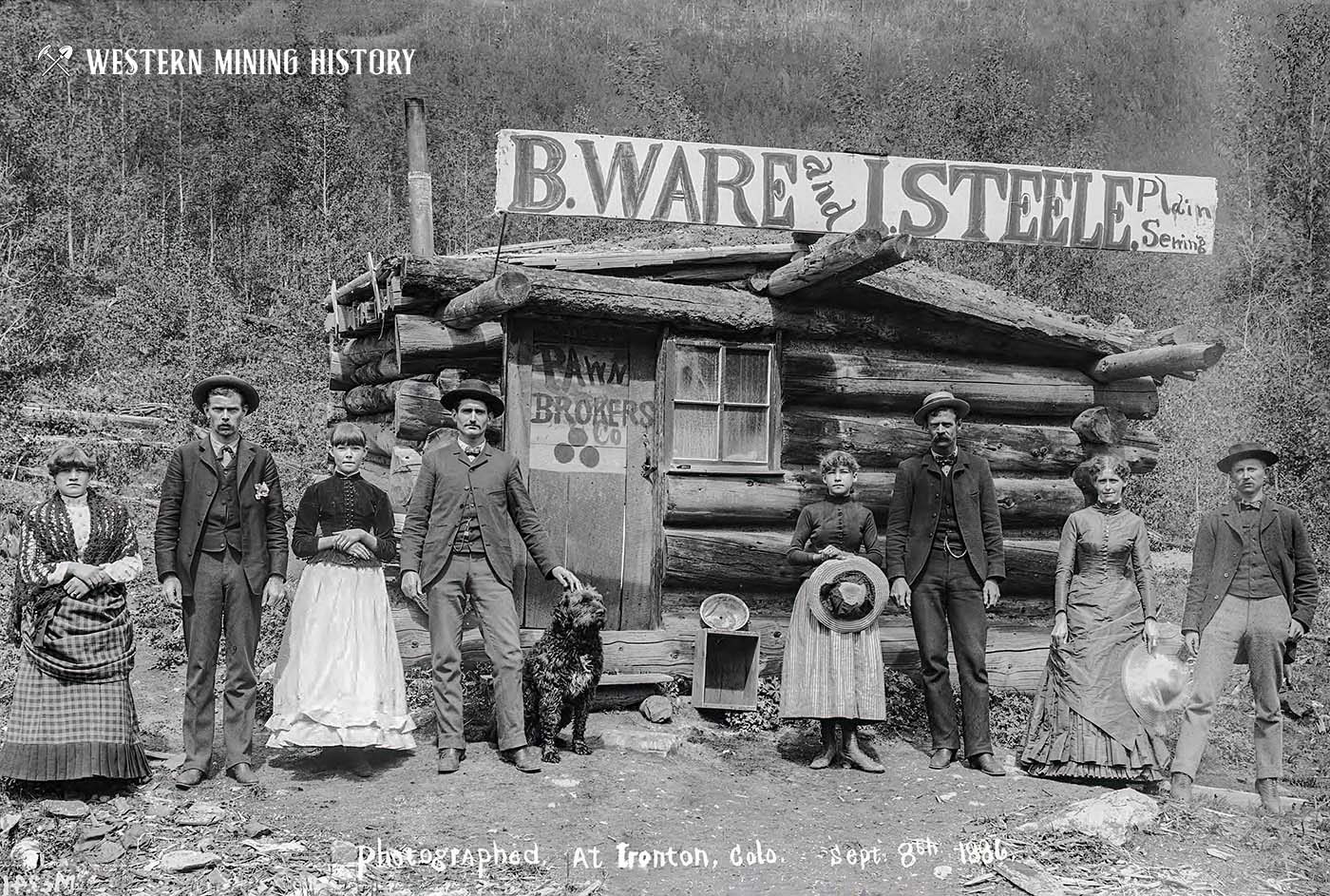
Date Settled: 1883
Status: Ghost Town
Ironton was a major transportation junction and mining camp between Red Mountain Town and Ouray. The town was established in 1883 and grew quickly, with over 100 buildings constructed that first year. Ironton never fully recovered from the silver crash of 1893, although it remained a sleepy town for many years. Today it is a ghost town.
Ouray
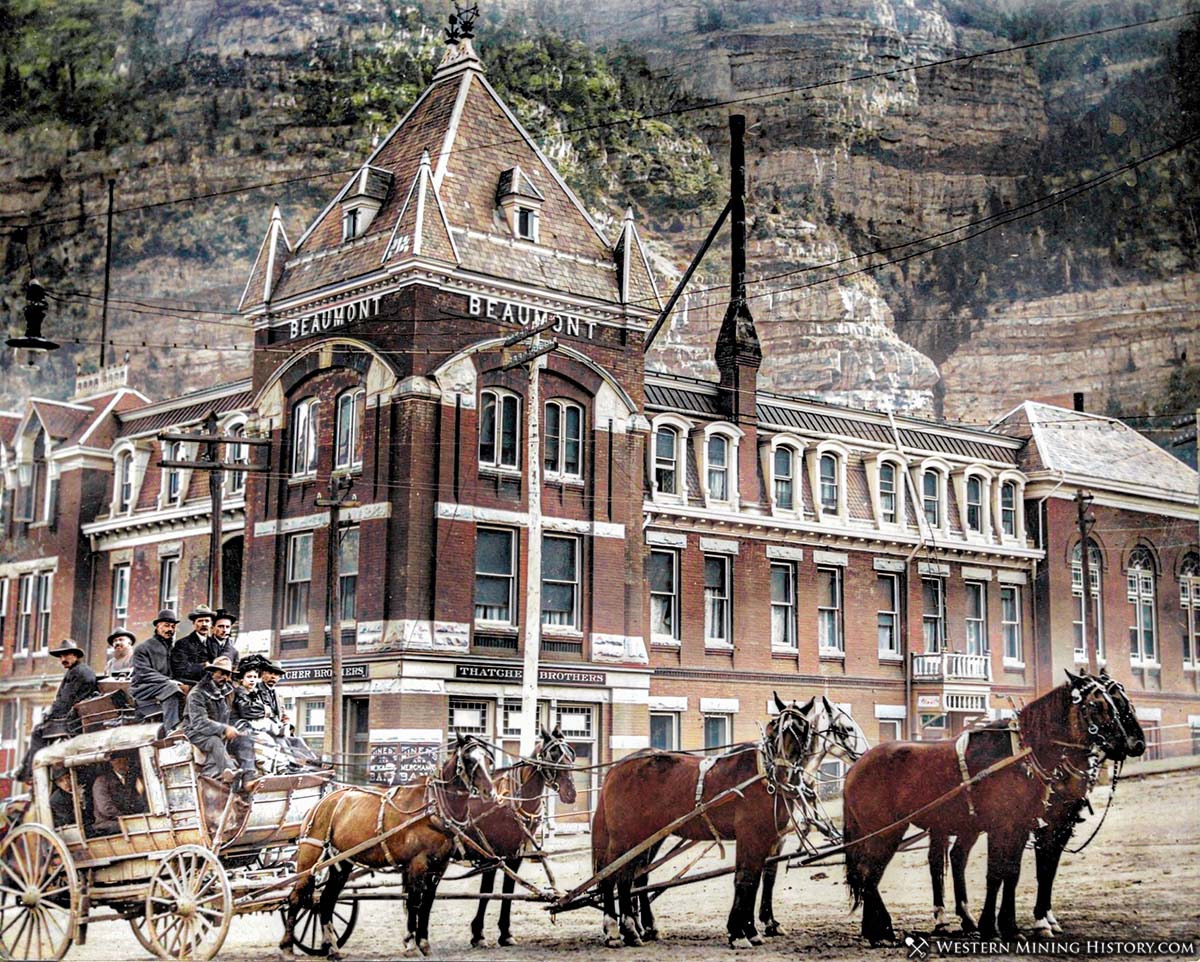
Date Settled: 1876
Status: Active Town
Ouray was established in the late 1870s as a major supply and transportation center for the nearby mines. It is considered to be one of the world’s most beautiful towns and has been a tourist destination since the late 1800s. Today Ouray is a vibrant and spectacular town that is popular with tourists year round.
Red Mountain Town
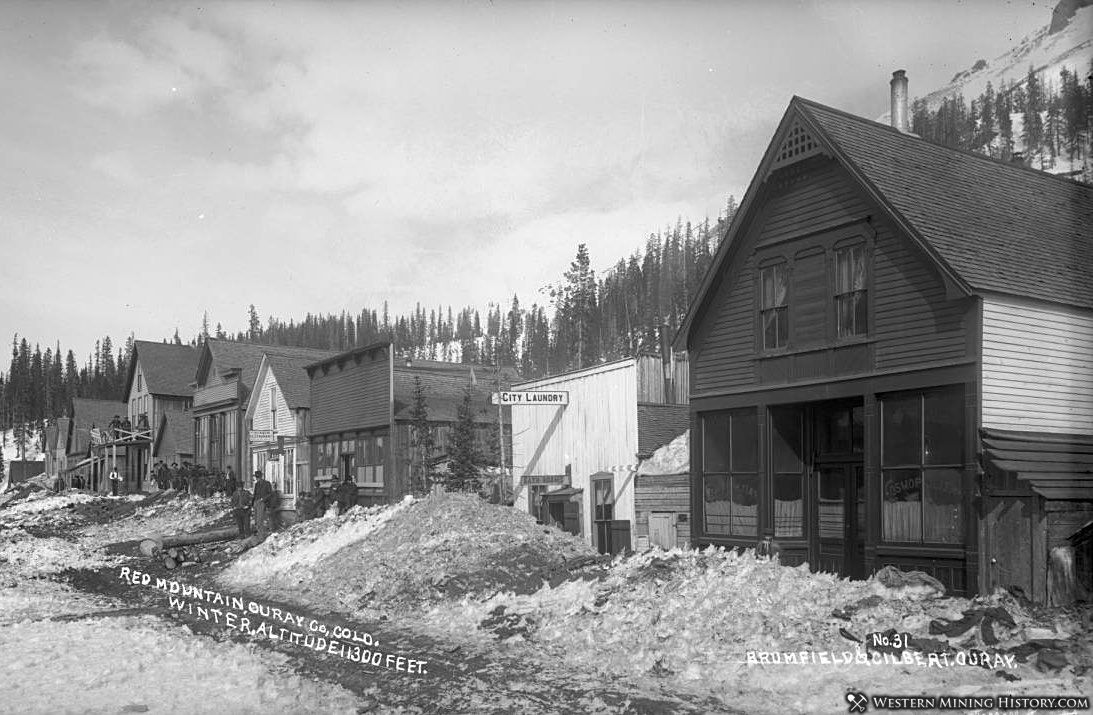
Date Settled: 1870s
Status: Ghost Town
Red Mountain Town was the center of Colorado’s second richest silver district. For a town in such a prominent location among leading mines, it never became a great city like Leadville or Georgetown, likely due to it’s difficult location and extremely high elevation.
The silver crash of 1893 dealt the town a heavy blow, and it never fully recovered. By 1899 only a handful of people remained at Red Mountain Town. Although the mines of the district were ultimately some of the longest lasting in Colorado, they could not keep the district’s namesake settlement from becoming a ghost town.
Sneffels
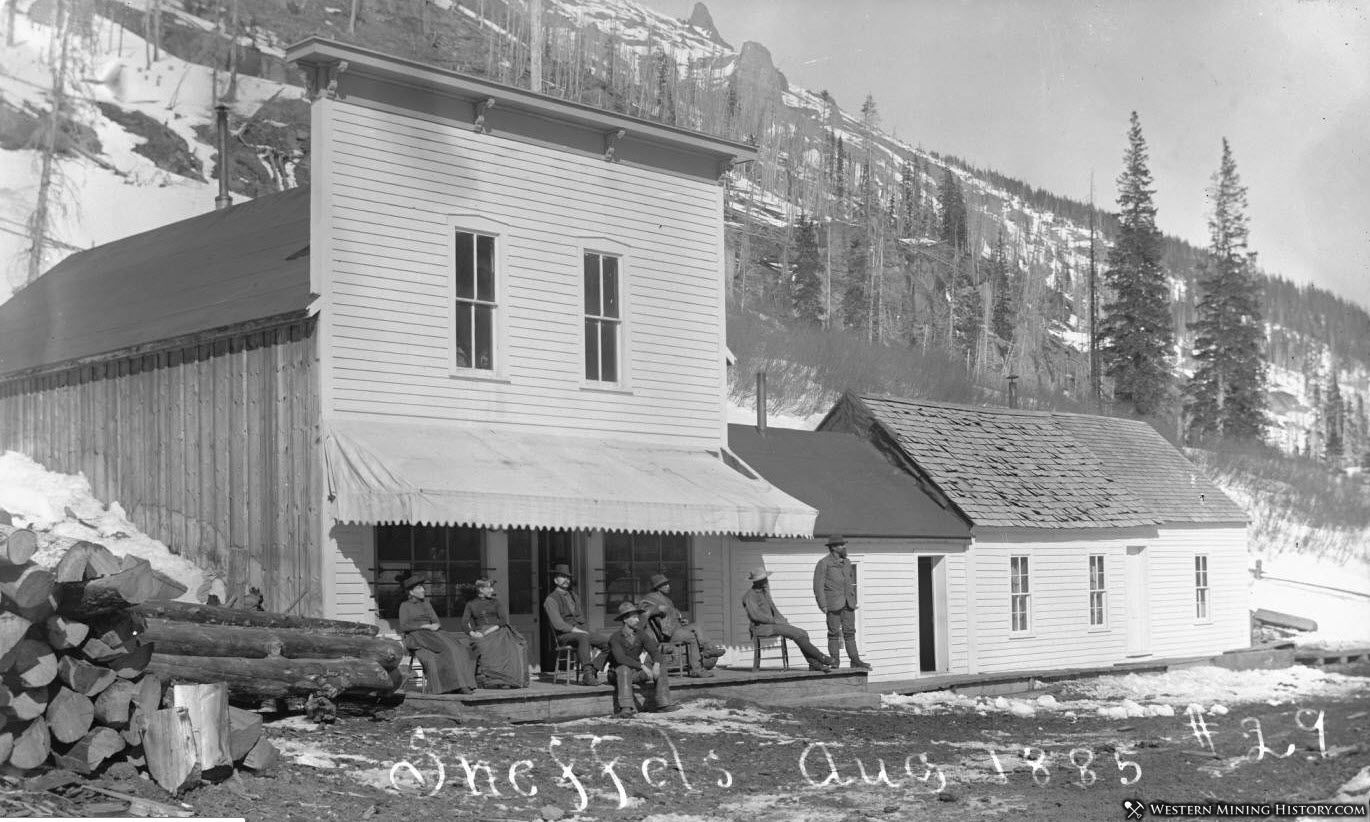
Date Settled: 1875
Status: Ghost Town
Sneffels was an important mining camp situated at above 10,600 feet in Ouray County, Colorado. This was the site of the Virginius mine and Revenue Tunnel, two of Colorado’s most successful mining operations. Sneffel’s fame was somewhat diluted by the enormous success of the nearby Camp Bird mine, but it was nonetheless a prominent mining center for decades.
Park County
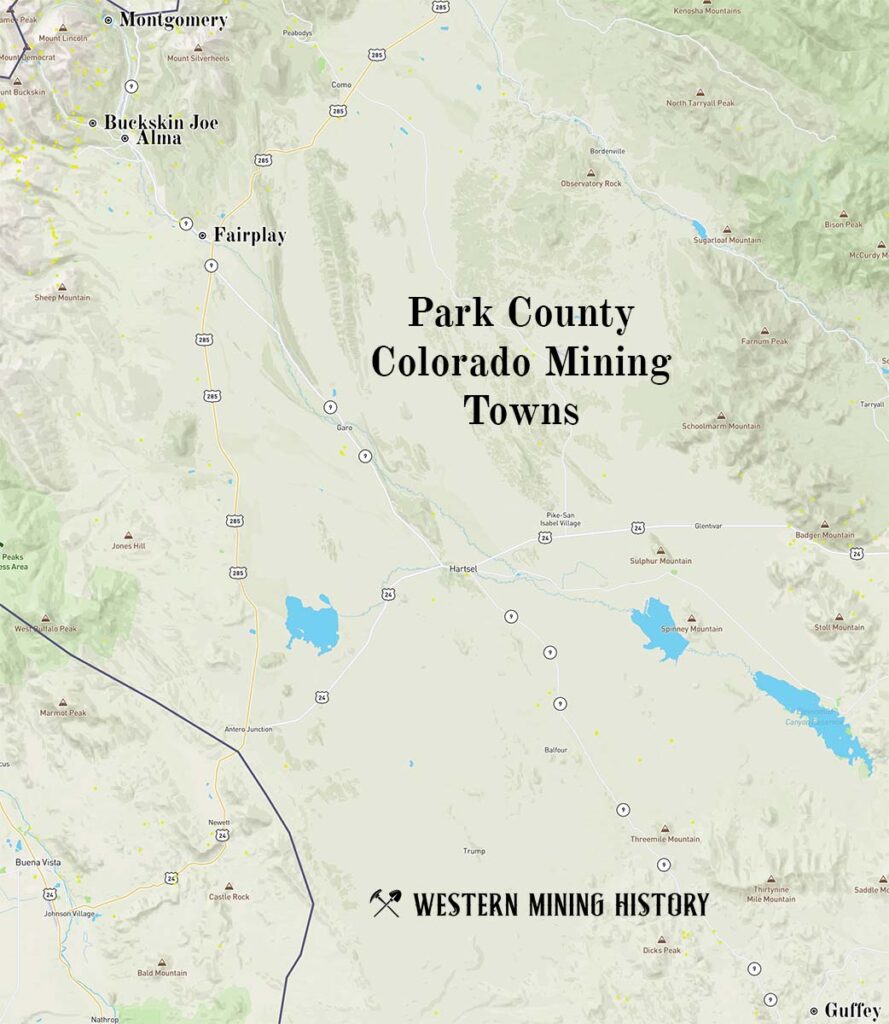
Alma
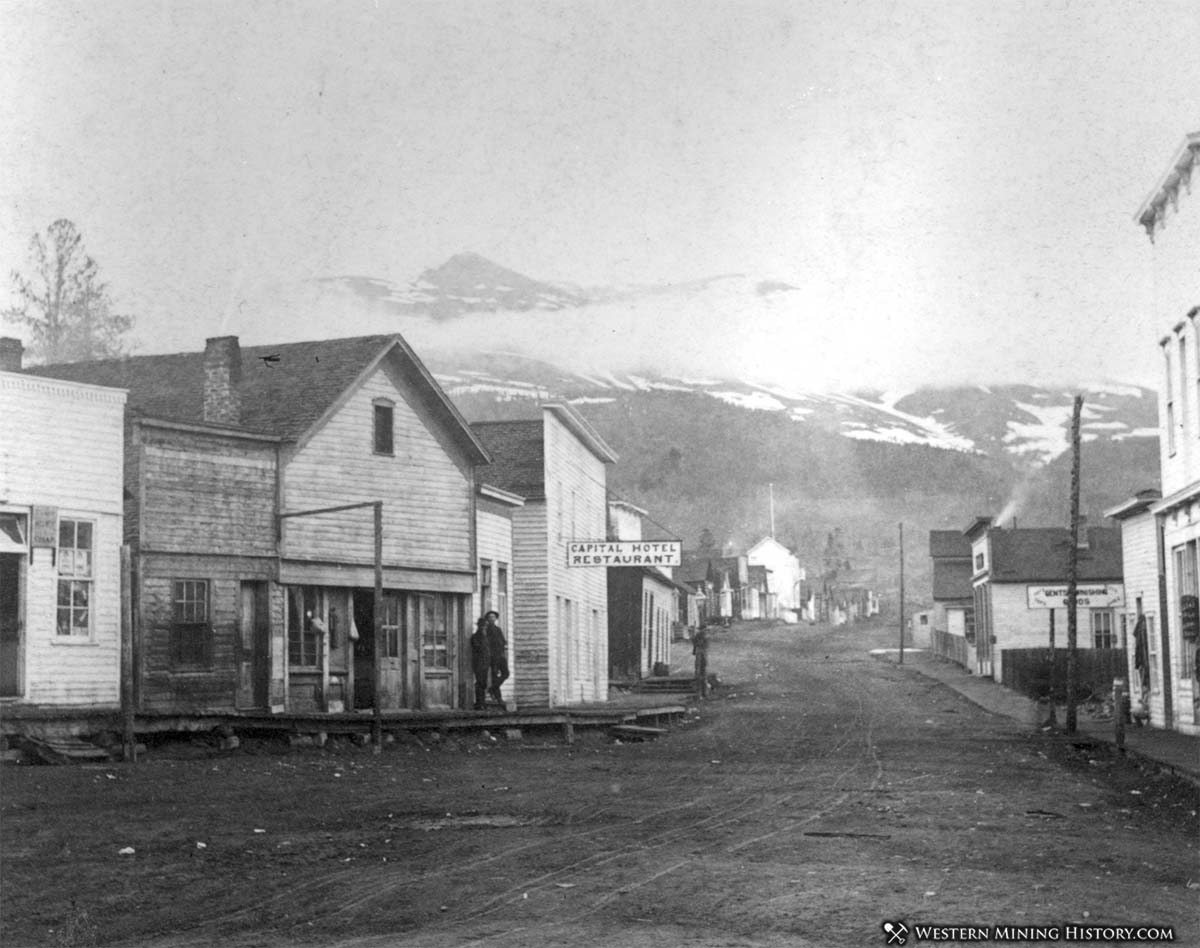
Date Settled: 1872
Status: Active Town
Alma was the smelting center for the Mosquito mining district, one of the most prominent districts in the South Park area of Colorado. At over 10,300 feet, Alma is the location of the highest elevation post office in the United States.
Buckskin Joe
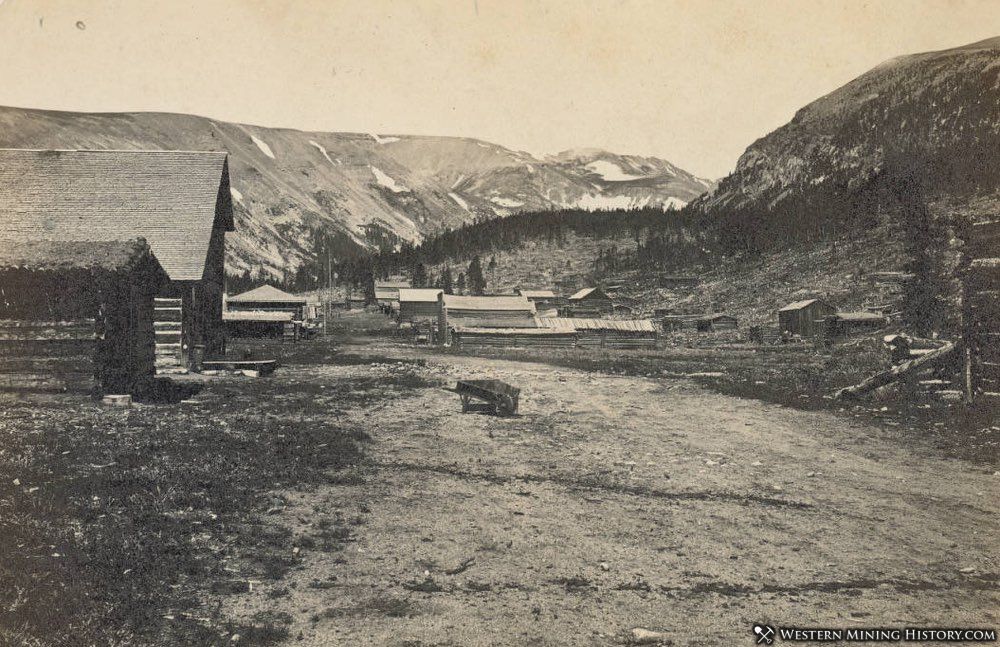
Date Settled: 1860
Status: Ghost Town
Settled in 1860, Buckskin Joe was one of the state’s oldest mining camps. The rich deposits here played out in a few years, and by 1866 the town was abandoned. Buckskin Joe was notable as the location that Horace Tabor operated a store before moving to Leadville, where he would become known as the “Bonanza King”, one of Colorado’s wealthiest mine owners.
Fairplay
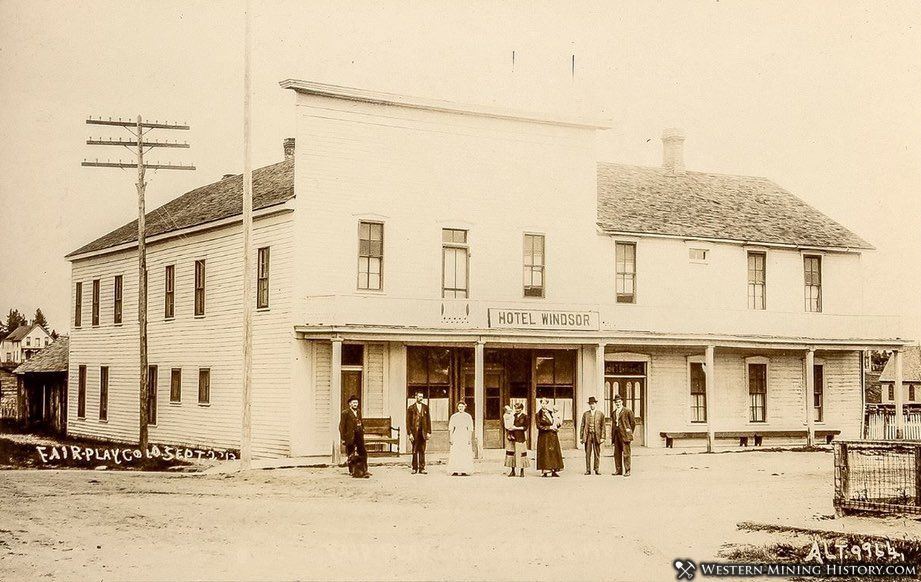
Date Settled: 1859
Status: Active Town
Fairplay never had a big mining excitement like other camps in the area, but it’s position in the center of district allowed it to prosper as a supply and transportation hub. Fairplay is the home of “South Park City”, an authentic Old West museum where numerous historic buildings were moved from various ghost towns and reassembled on museum grounds.
Guffey
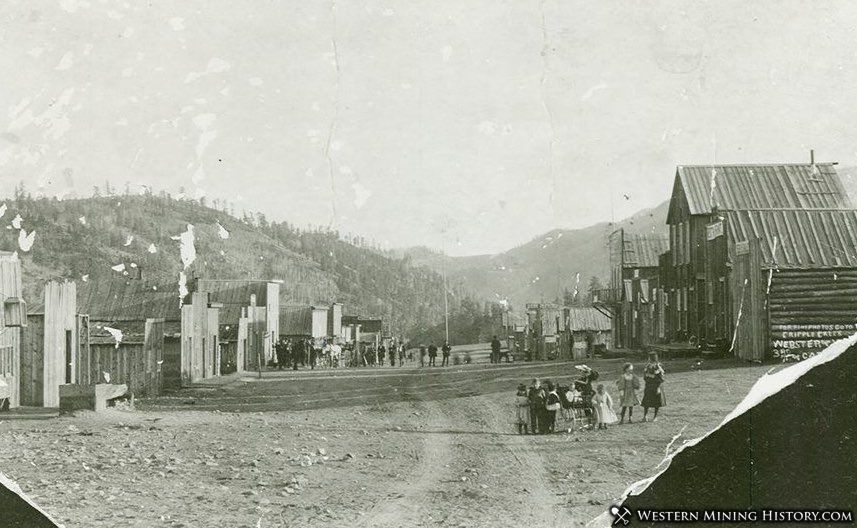
Date Settled: 1895
Status: Near Ghost Town
Guffey was originally known as Freshwater and was incorporated in 1895. Despite early optimism, the mines of the area never became significant producers. Guffey declined after 1900 but was sustained by ranching so it never died out completely. Today it is a minor tourist town still containing historic buildings and artifacts.
Montgomery
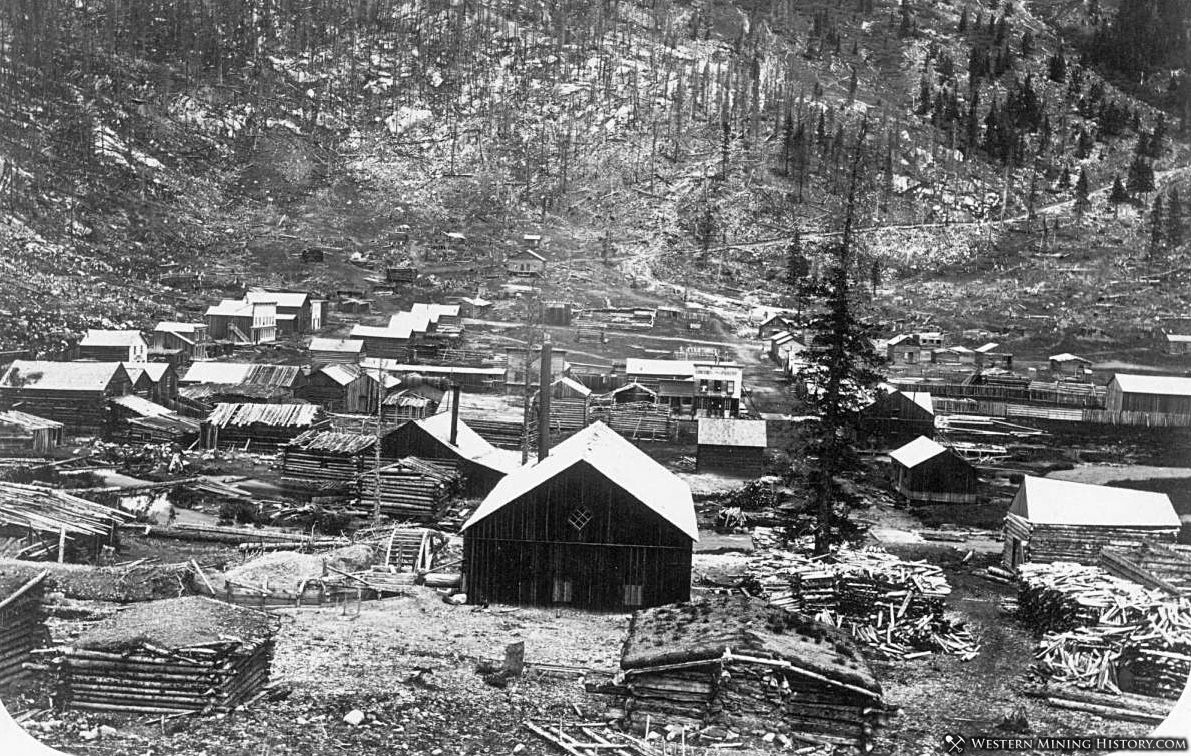
Date Settled: 1861
Status: Ghost Town
The Montgomery district was established in the summer of 1861, and the first log structure in the town of Montgomery was built that fall. By the end of the 1860’s most of the gold was played out, and many citizens of Montgomery moved on to nearby mining camps.
Pitkin County
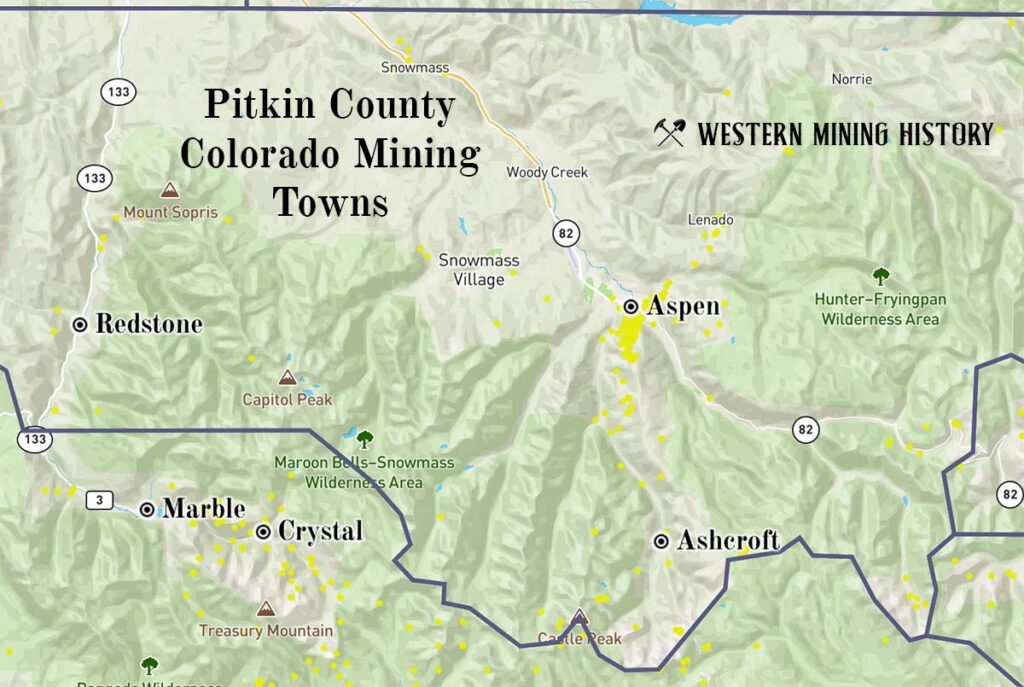
Ashcroft
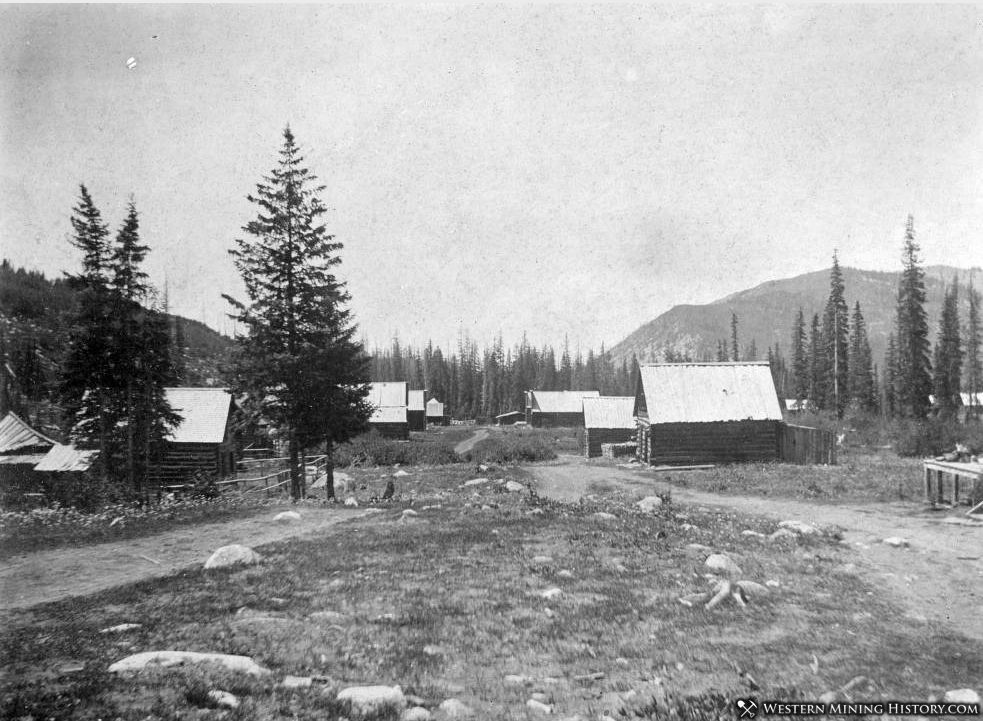
Date Settled: 1880
Status: Ghost Town
Ashcroft, originally known as Castle Forks City and then Chloride until 1882, was a mining town located ten miles south of Aspen. A few buildings remain standing as testament to the town’s past.
Aspen
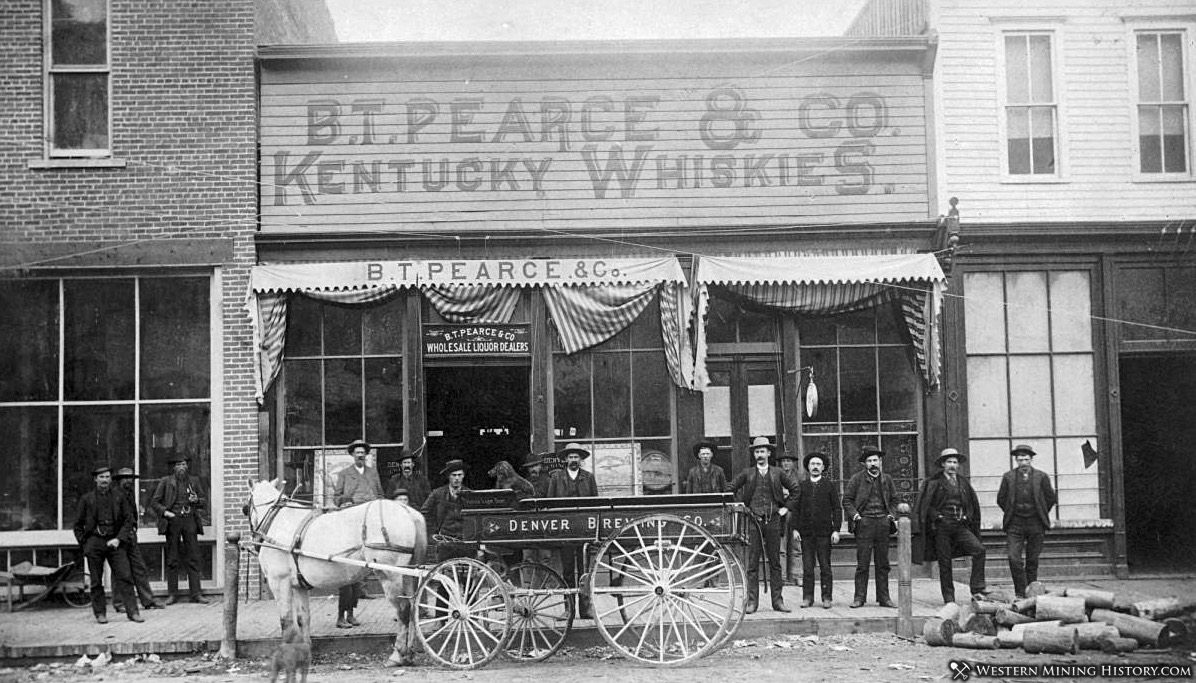
Date Settled: 1879
Status: Active Town
After initial gold and silver discoveries in 1879, Henry B. Gillespie established a mining camp named Ute City along the river. In 1880 the growing town was renamed Aspen. This was the one of the state’s richest silver mining districts, and in the early 1890s, Aspen even surpassed Leadville as the nation’s top silver producer.
In the late 1930s, one of the nation’s first ski resorts was built here. Aspen is now one of the world’s premier resort areas.
Redstone
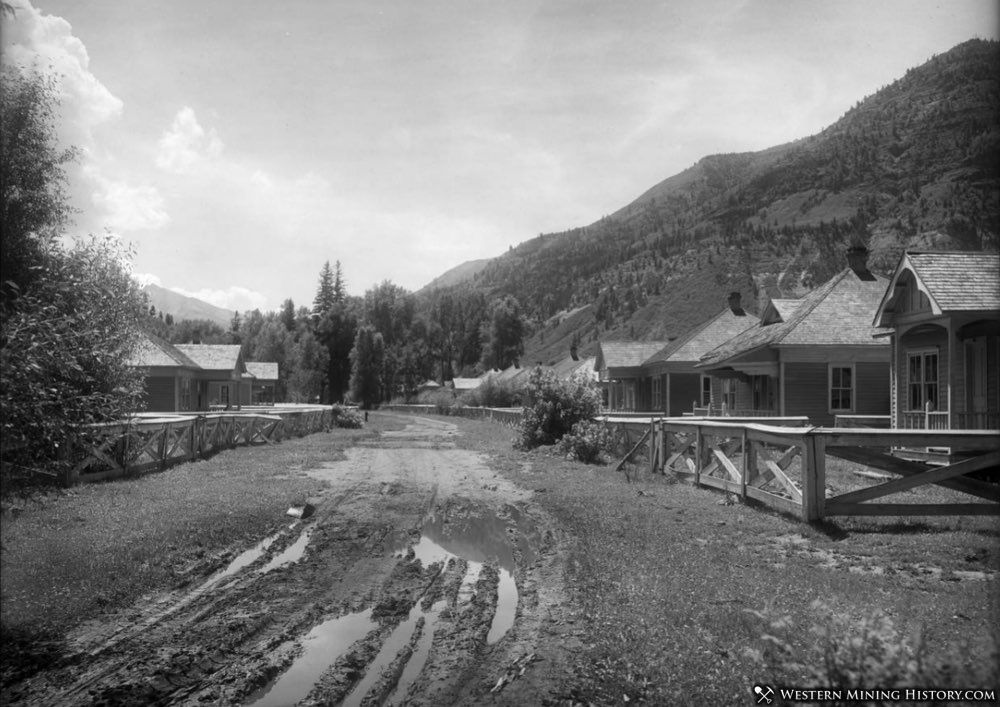
Date Settled: 1890s
Status: Active Town
Redstone may just have been a company town, but what a company town – the “Ruby of the Rockies,” one newspaper called it. Founded by Charles Osgood, Redstone embodied Osgood’s grand vision: a model working-class town, scientifically engineered to promote contentment and well-being among laboring folk and their families.
By 1911 the town lay abandoned. It remained largely empty until the 1980s, when a developer reopened the Redstone Inn as a tourist resort. Today, Redstone is a small but vibrant community on the beautiful Crystal River.
Rio Grande County
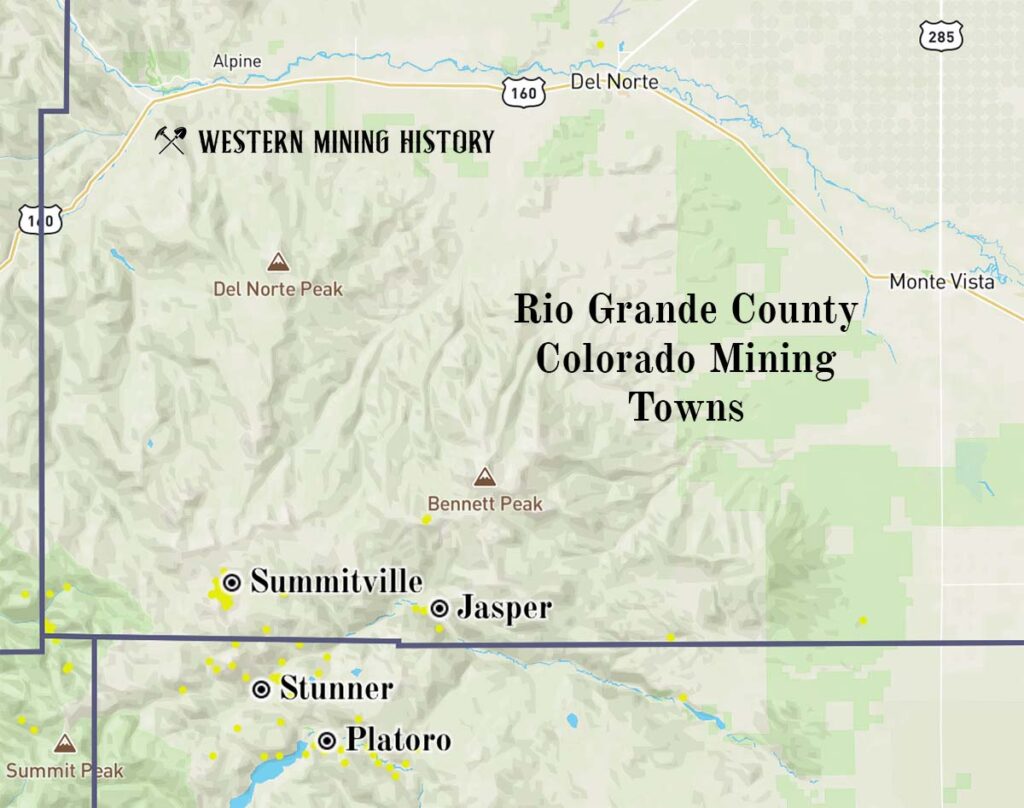
Jasper
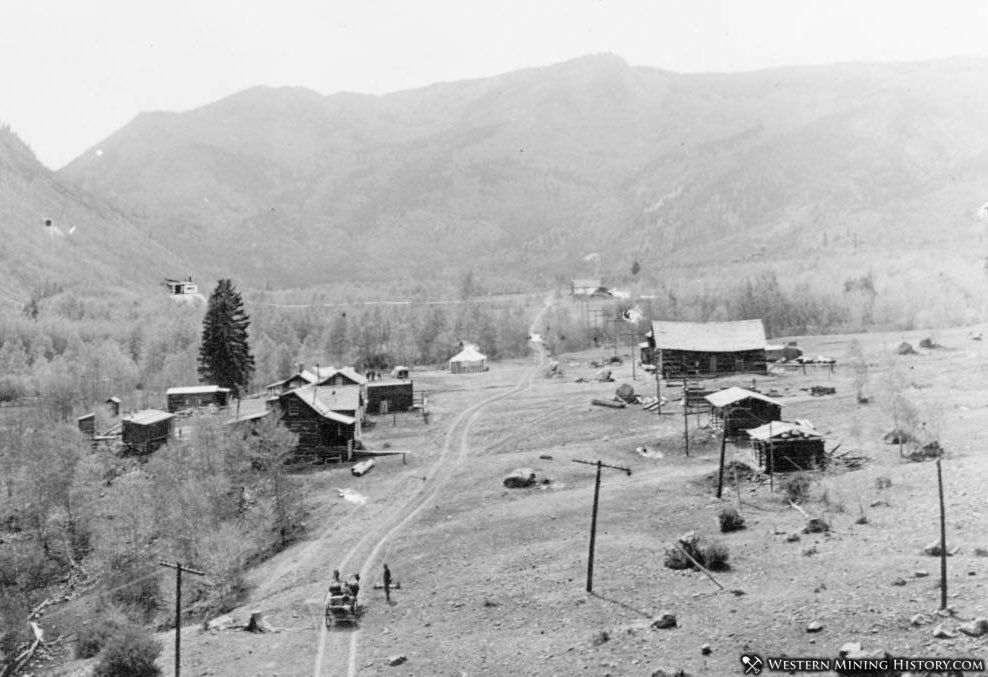
Date Settled: 1875
Status: Near Ghost Town
Jasper is the oldest settlement in the area often described as the Platoro mining district. The area was initially prospected in 1879 or earlier (accounts vary) by miners from Cornwall, England. The two adjacent camps of Cornwall and Jasper were established at the base of Cornwall Mountain. By 1882 the two camps were consolidated as the town of Jasper and the Jasper post office was opened.
Jasper had a few different periods of activity, but the post office closed for a final time in 1927. In the 1980s the land that was the original Jasper town site and surrounding area was purchased by developers. The area now consists over over 200 rural properties that are primarily seasonal mountain cabins.
Summitville
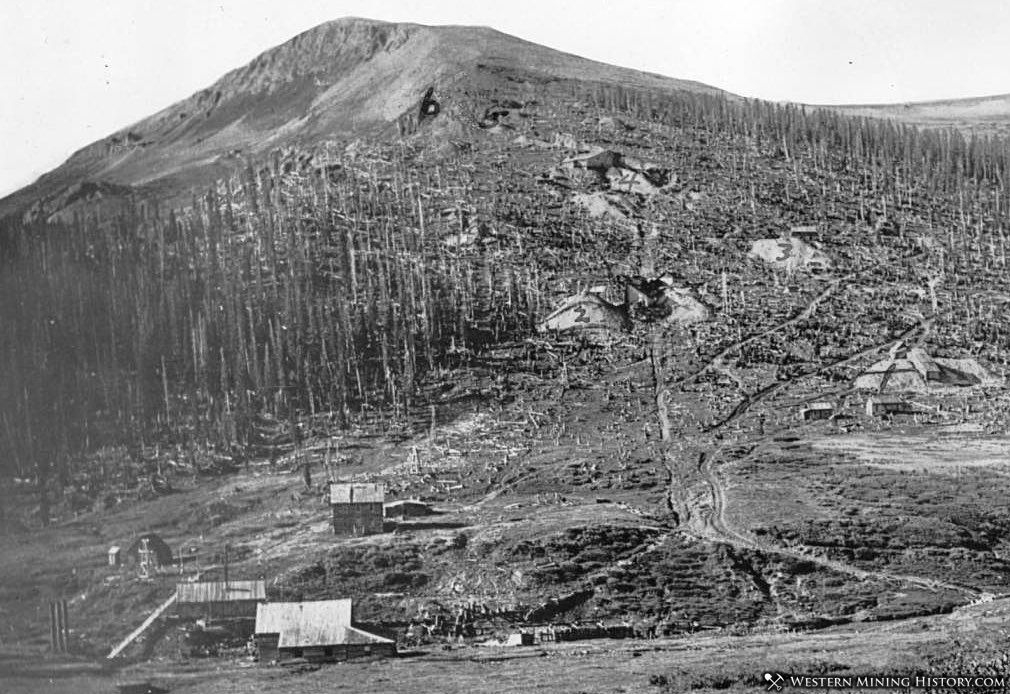
Date Settled: 1870s
Status: Ghost Town
Summitville was the site of one of the first major gold discoveries in the San Juan Mountains. The town sat at over 11,000 feet, and harsh winters combined with varying ore quality made this a difficult location for both mining and settling a town.
Summitville is now the location of an E.P.A. Superfund site, as a result of a poorly managed open-pit mine that operated in the late 1980s.
Saguache County
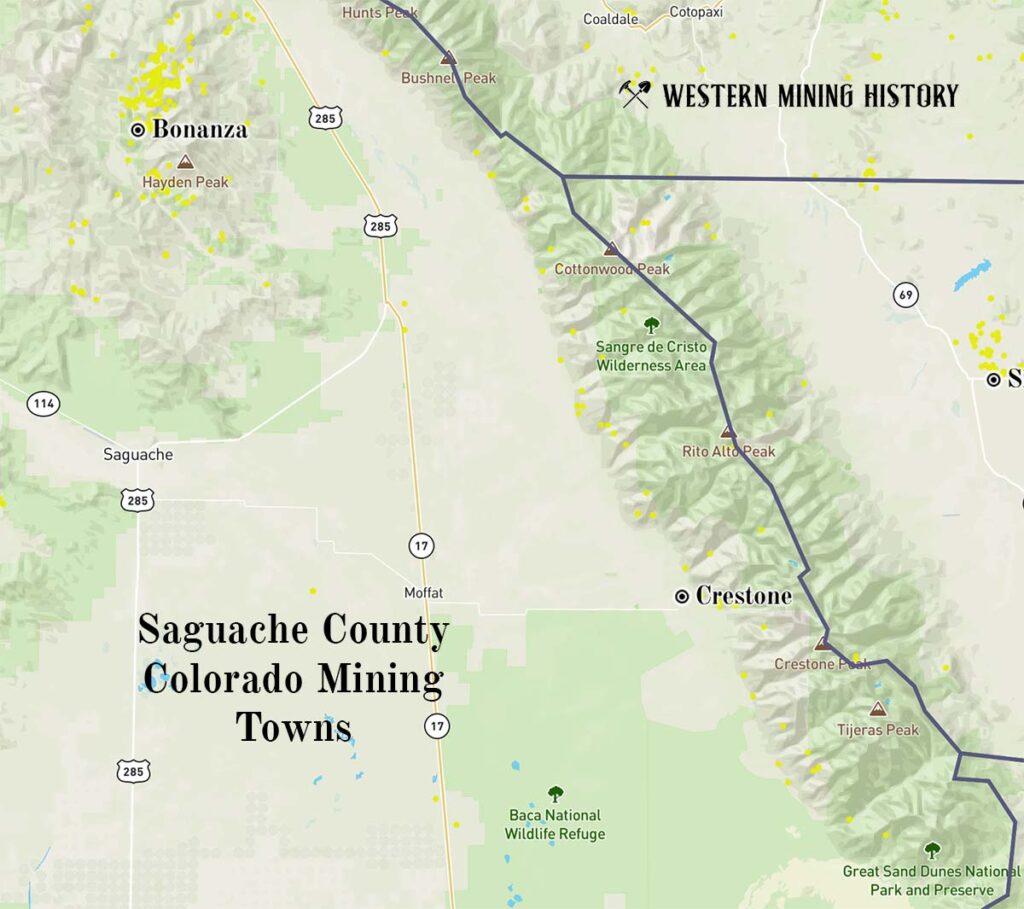
Bonanza
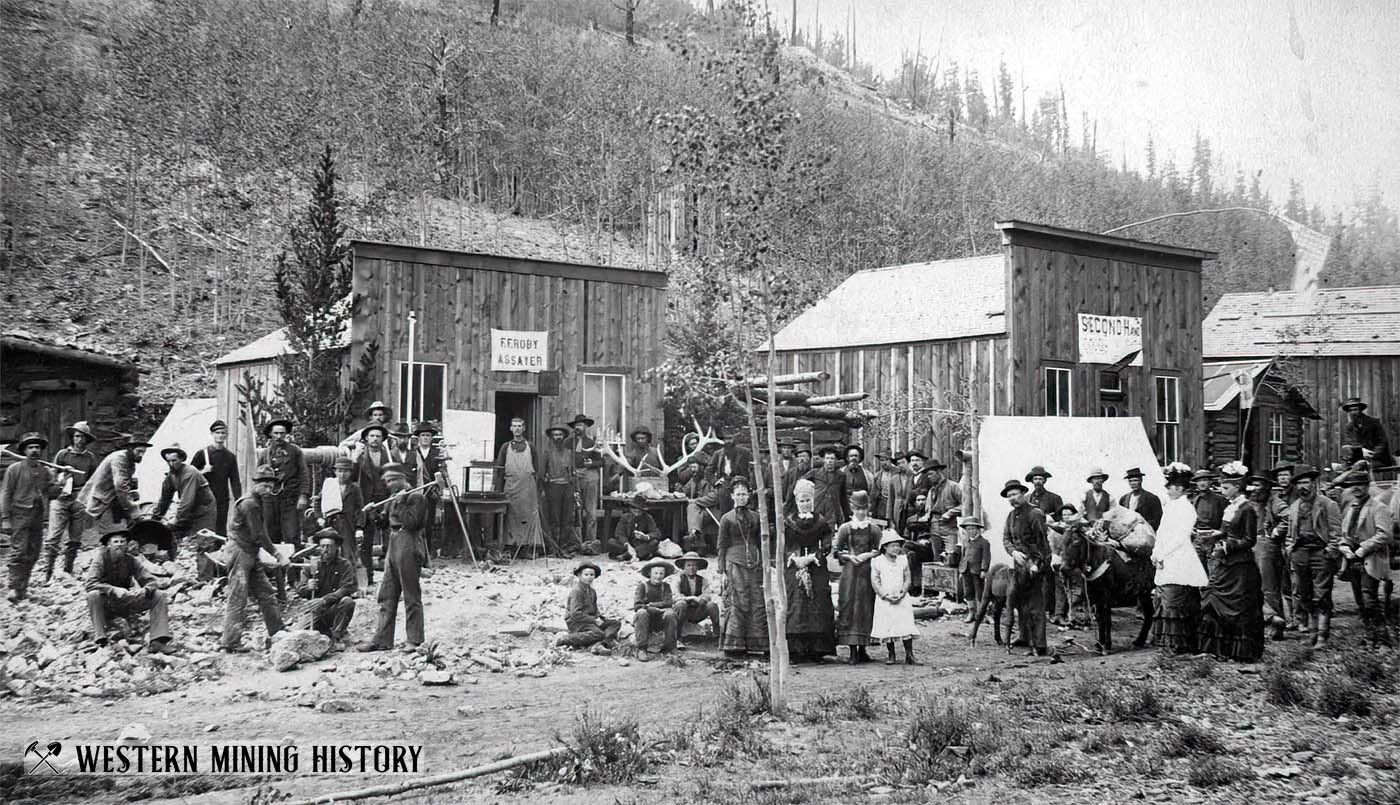
Date Settled: 1880
Status: Ghost Town
After valuable minerals were discovered here in 1880, prospectors swarmed into the area, and the town of Bonanza was founded. Historical accounts of what years Bonanza peaked differ between sources, but most agree that the town had at least 30 saloons during its peak.
Bonanza had a post office from 1880 to 1938. Today it is a ghost town.
Crestone
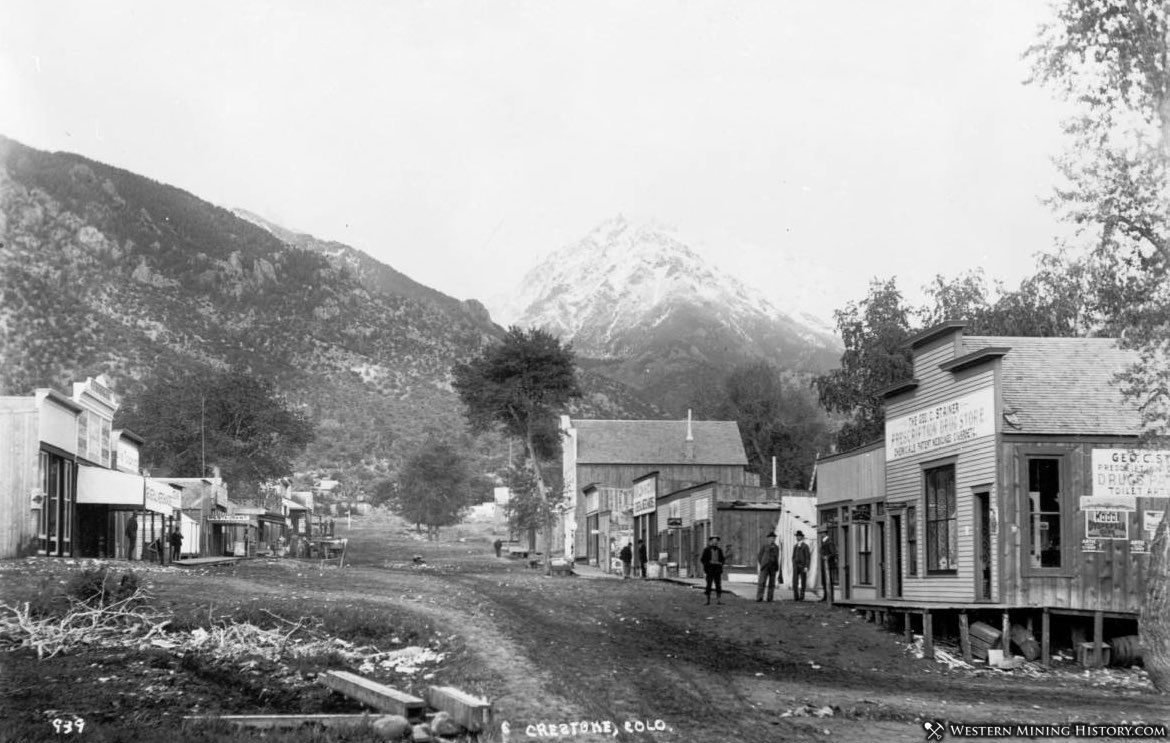
Date Settled: 1880
Status: Active Town
Crestone was founded in 1880 but remained a small mining town of little importance for two decades. New discoveries and investment by Eastern capitalists jump started the sleepy camp, and by 1901 Crestone had over 800 residents and its first hotel.
Today the town of Crestone has around 150 residents, with many more people living in the area south of town that is a housing development and spiritual center.
San Juan County
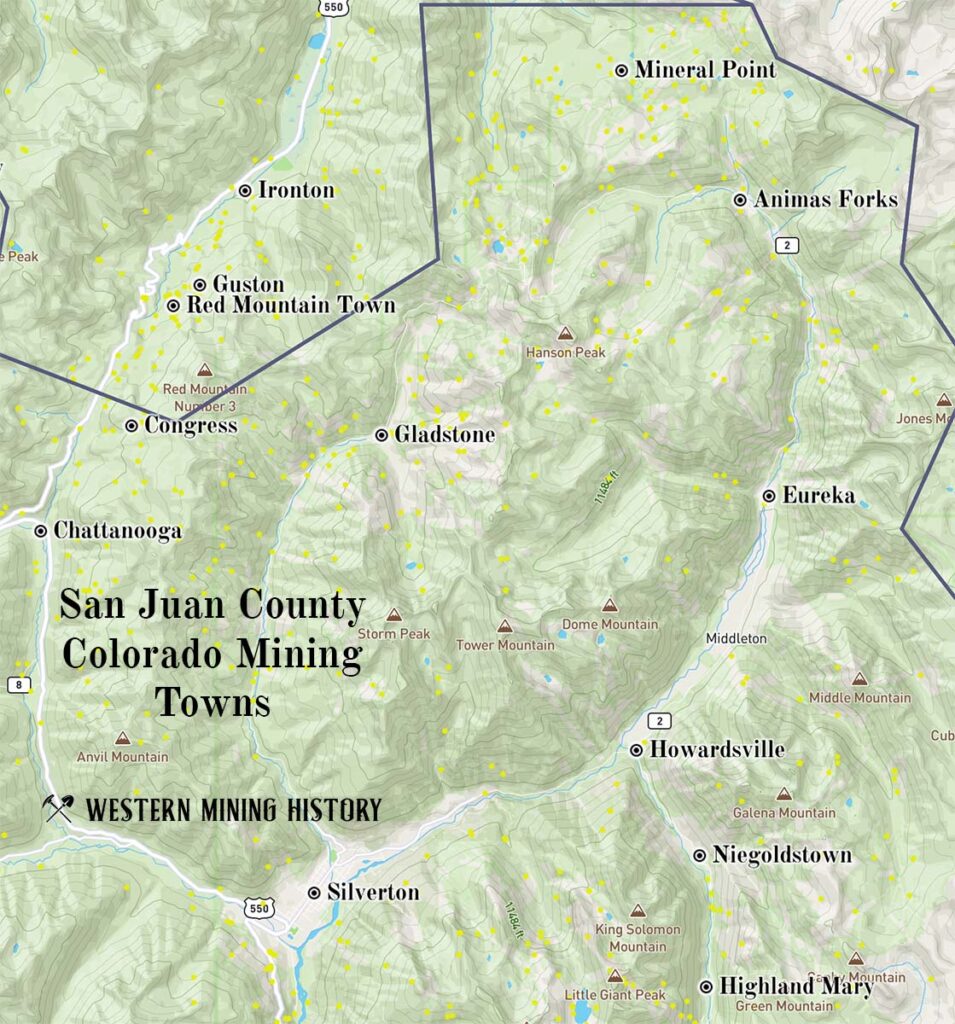
Animas Forks
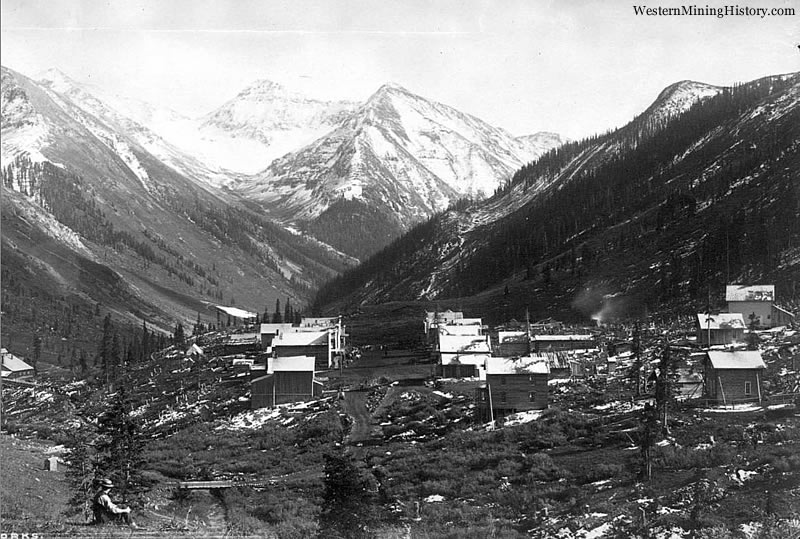
Date Settled: 1873
Status: Ghost Town
At over 11,000 feet, Animas Forks in the San Juan Mountains of southwest Colorado is one of the highest mining camps in the West. In 1884, a 23 day blizzard inundated the town with 25 feet of snow, forcing the residents to dig tunnels to get from building to building.
A handful of buildings are still standing at Animas Forks, and the town is a popular tourist destination that is visited by thousands of people every year.
Chattanooga
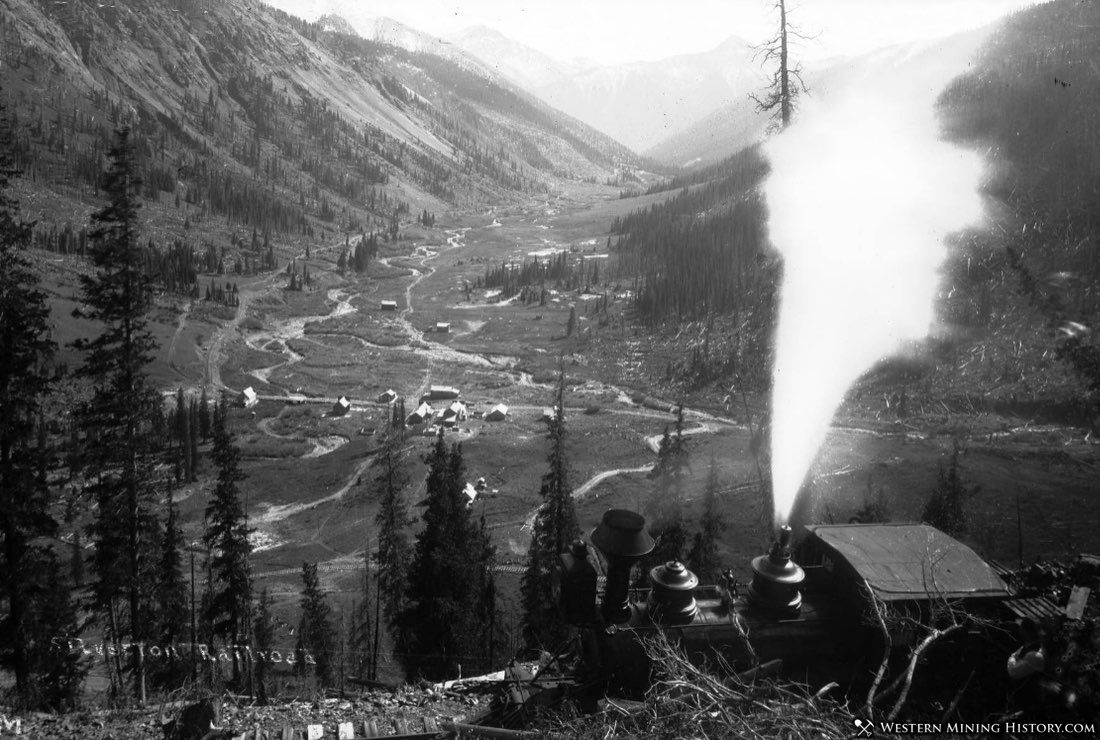
Date Settled: 1882
Status: Ghost Town
Chattanooga was small mining town in the Red Mountain district of the San Juan Mountains. Chattanooga also became an important transportation hub for the mines and other towns of the district.
A newspaper article from 1904 described the town: “This little hamlet is beautifully situated about seven miles from Silverton, up Mineral Creek. It is the center of an active mining district, and has for its chief industry the Silver Ledge mill. It has a store, saloon, post office and a well conducted school presided over by Miss Alice Deutsch. Chattanooga is destined to advance as its surrounding mining territory is developed.”
Congress
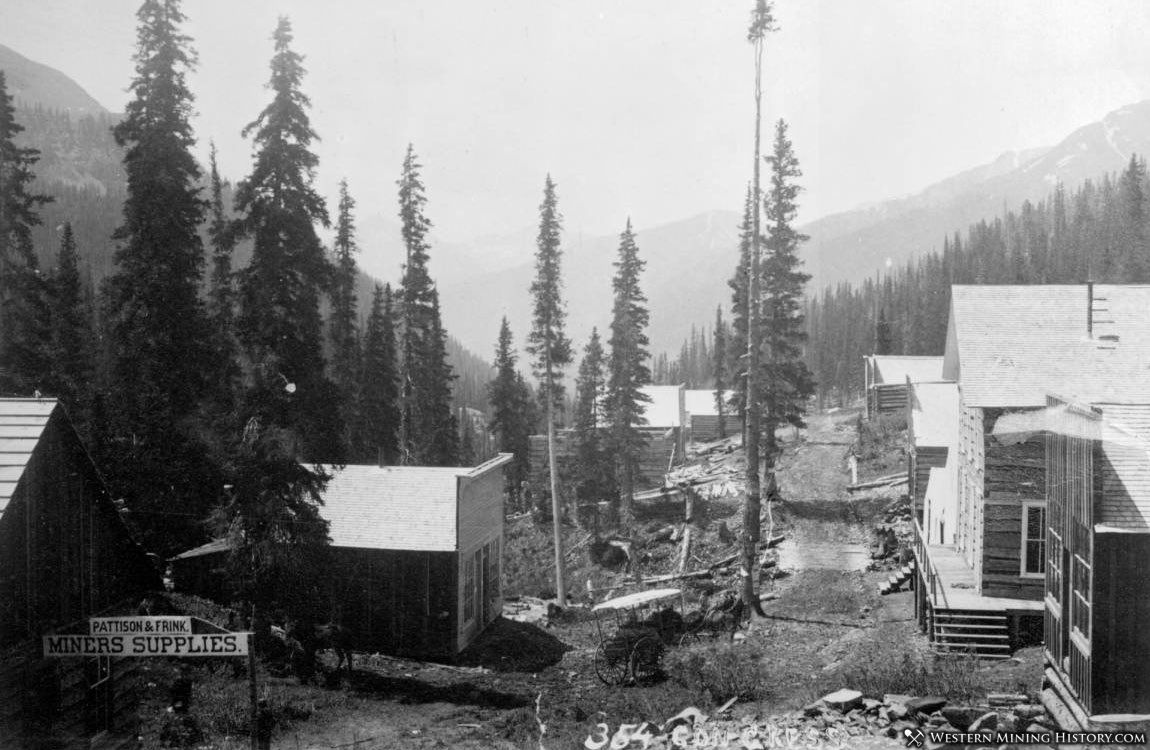
Date Settled: Around 1880
Status: Ghost Town
Not much is known about the town of Congress in the Red Mountain District. It was one of the many towns that were established during the Red Mountain mining boom but faded as other towns rose to prominence. Congress had a post office 1883-1884.
Eureka
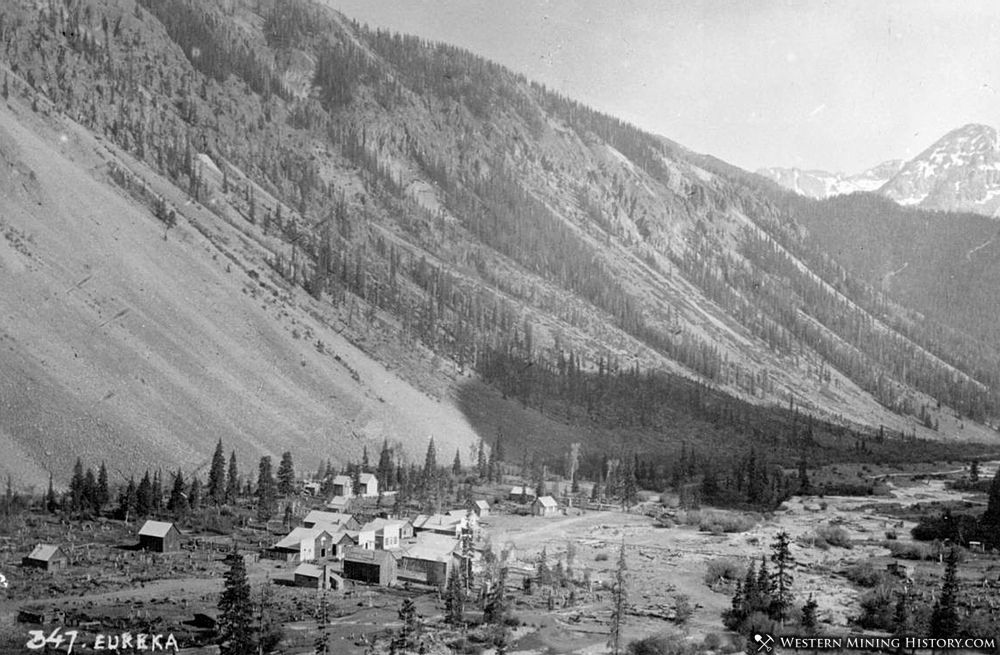
Date Settled: Around 1880
Status: Ghost Town
A community formed at Eureka in the early 1870s, primarily as a result of the discovery and development of the Sunnyside mine. A post office was established in 1875. The Sunnyside was one of Colorado’s richest mines, and it was in production for nearly five decades, which brought stability to the town of Eureka much longer than some of the nearby mining camps.
Today Eureka is ghost town, but it is a popular RV camping area and staging site for ATV enthusiasts. The massive foundation of the Sunnyside Mill can still be seen above the town.
Gladstone
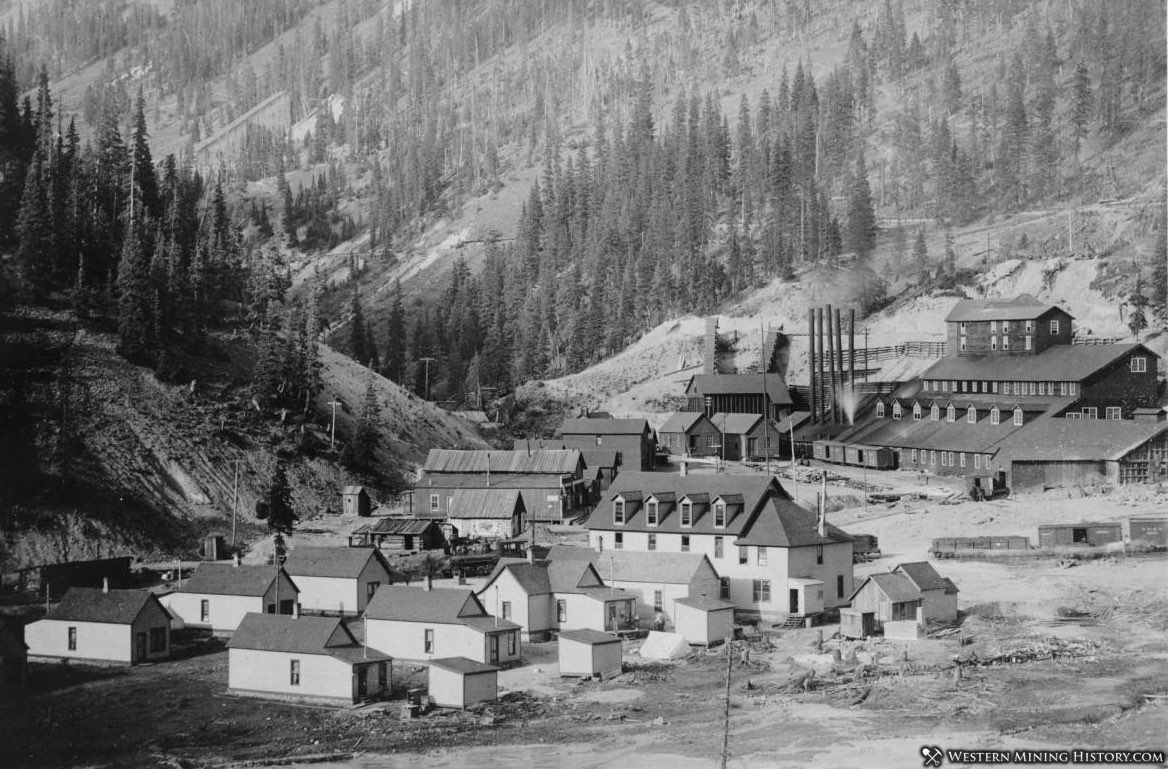
Date Settled: 1878
Status: Ghost Town
Gladstone was the location of the Gold King mine, one of the region’s top producers. Gladstone peaked during the first decade of the 1900s but the closure of the Gold King in 1910 resulted in the town being largely abandoned just a few years later.
Highland Mary
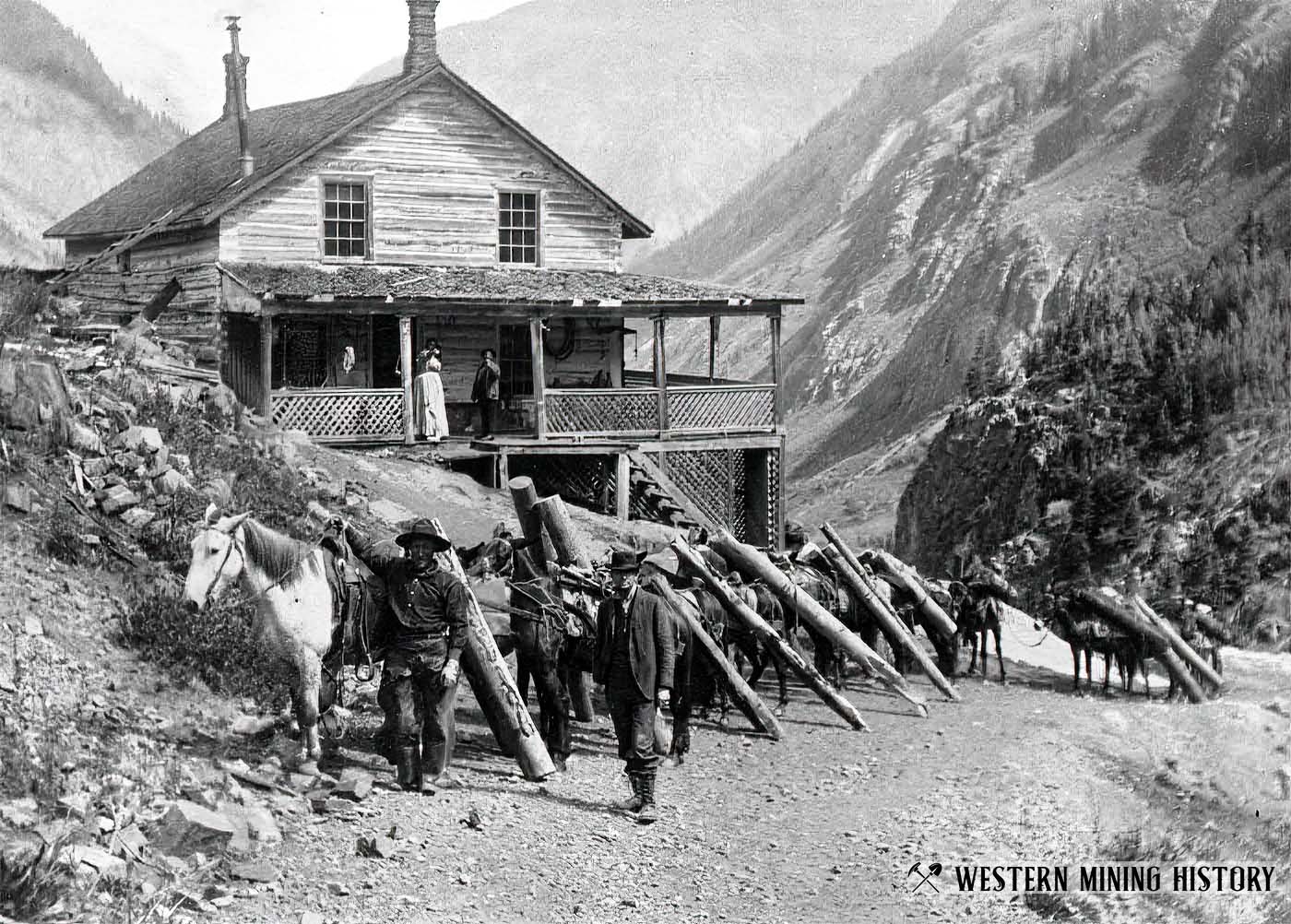
Date Settled: 1870s
Status: Ghost Town
Highland Mary was a thriving mining camp that had a post office for five years starting in 1878. The post office closed and many of the miners at the camp moved on to new excitements, but Highland Mary remained an active camp for many decades.
Howardsville
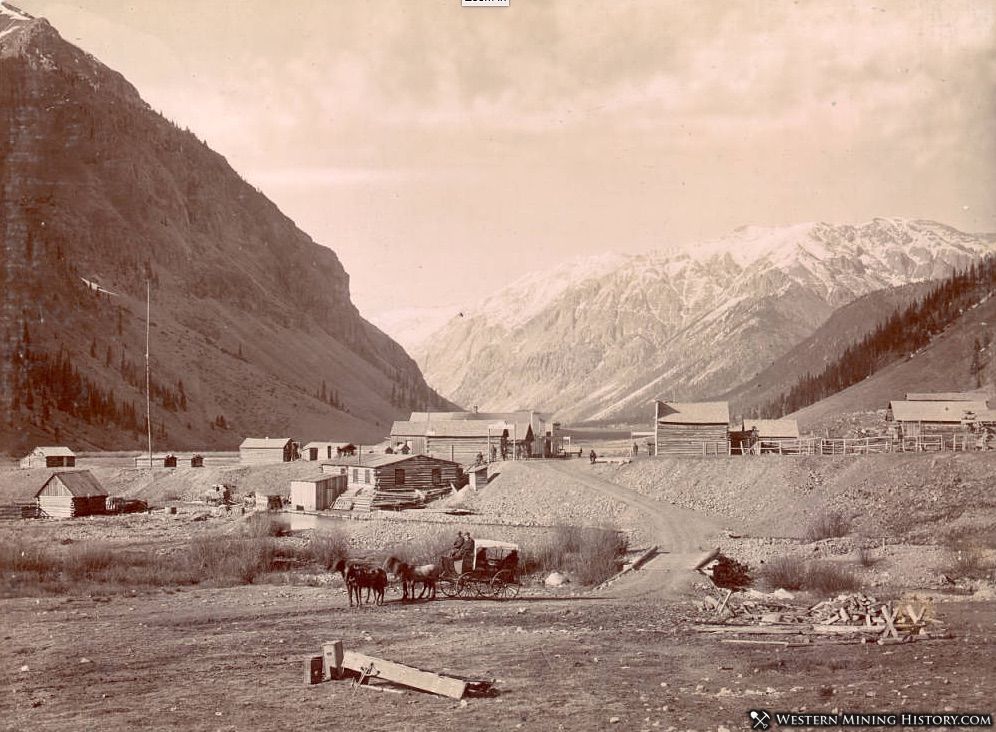
Date Settled: 1874
Status: Ghost Town
Established in 1874, the town Howardsville was an important early mining camp and the first county seat of La Plata county. However, it wasn’t long before La Plata county was carved up into smaller counties, and Silverton took over the county seat for the newly established San Juan County.
The arrival of the railroad at Silverton in 1882 diminished the importance of Howardsville in the area, and the town began to decline.
Mineral Point
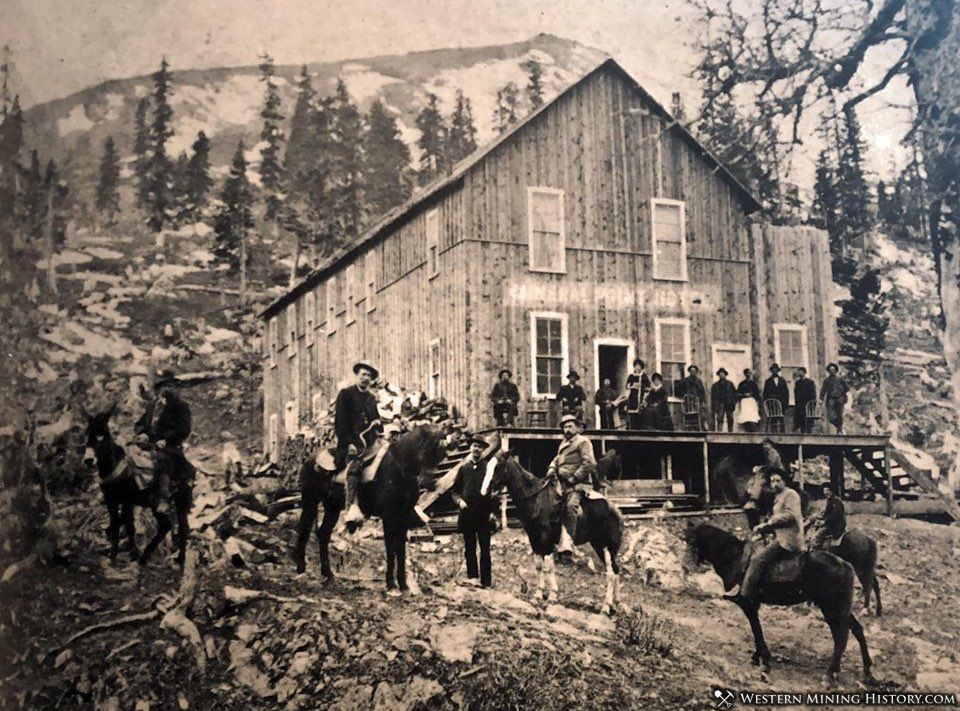
Date Settled: 1875
Status: Ghost Town
Mineral Point was located in the heart of the San Juan Mountains at over 11,700 feet. The town was described as both the region’s remotest camp and one of its best producers.
Niegoldstown
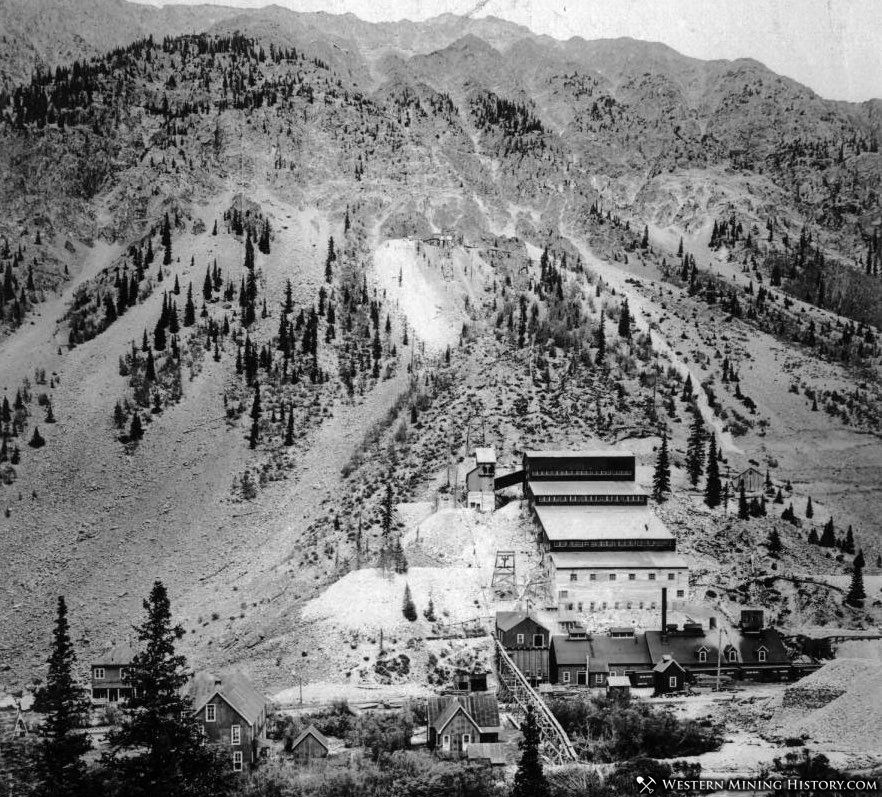
Date Settled: 1870s
Status: Ghost Town
Niegoldstown, located at the base of Stony Pass, became a popular base of operations for miners and prospectors and a stopover on the busy trail during the early boom years of the San Juan mountains. A post office was established in 1878.
The post office closed in 1881, indicating that Niegoldstown’s peak activity only lasted a few years. The location remained the site of active mining and the home of miners for decades however as mines like the Old Hundred built boarding houses for its miners.
Silverton
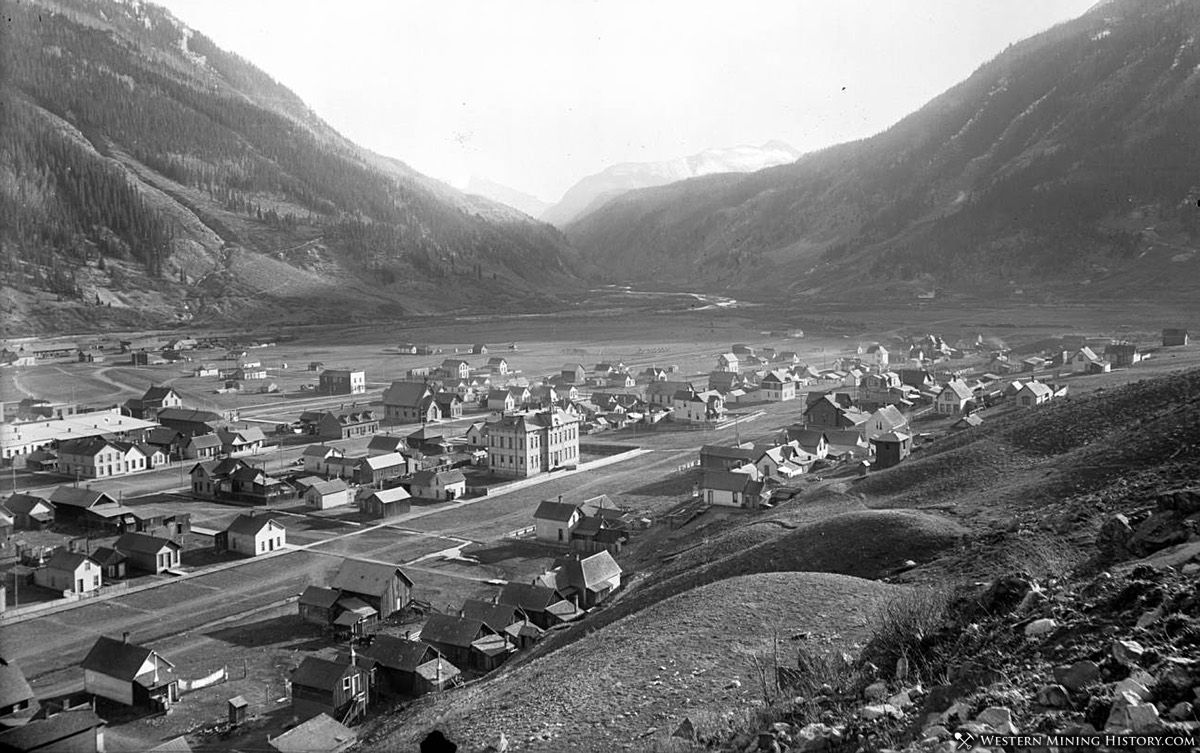
Date Settled: 1874
Status: Active Town
Silverton is the center of San Juan County’s rich mining districts. Located in one of the West’s most rugged and isolated locations, the town grew to be one of Colorado’s premier mining centers. Today Silverton remains as one of the most historic and authentic mining towns in the United States.
San Miguel County
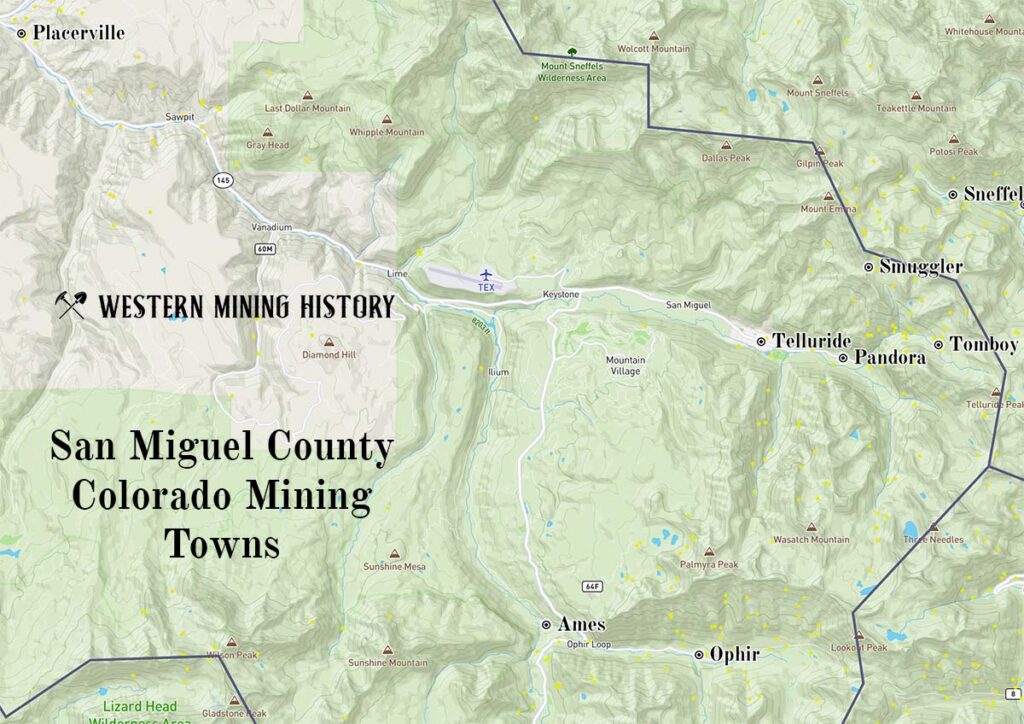
Ames
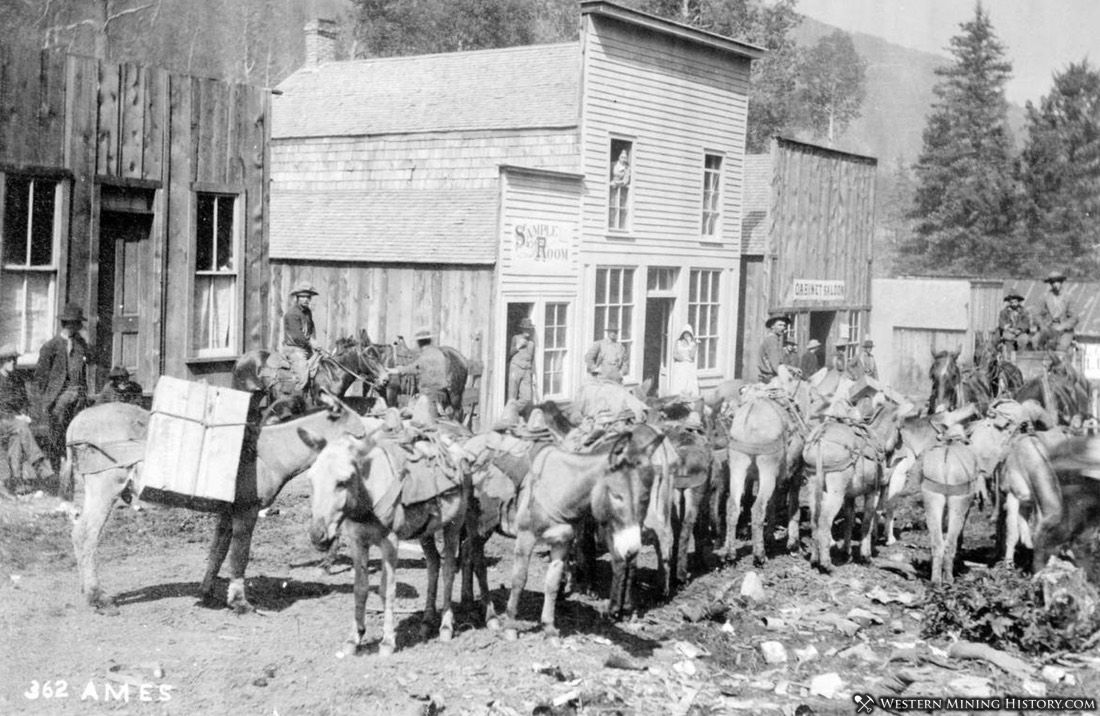
Date Settled: 1880
Status: Ghost Town
Ames was the site of the world’s first industrial alternating current power plant. Interestingly, despite the town’s famous power plant, very little is known about Ame’s early history. Although almost none of the original town remains, the power plant is intact and still in operation.
Ophir
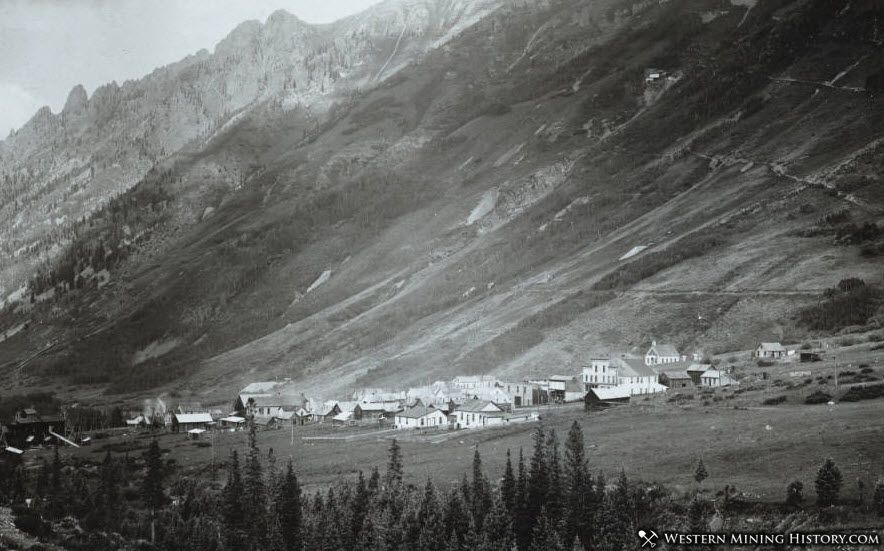
Date Settled: 1875
Status: Near Ghost Town
Ophir was established after gold discoveries in 1875. The town never grew to the size of some of its famous neighboring communities, but mining sustained a population in the hundreds for several decades. The mines were closing by 1910 and people started moving away. By the 1950’s just a few people still called Ophir home and by 1970 there was just a single remaining resident.
Ophir found a new lease on life with the opening of the nearby Telluride ski resort in 1972. Today the town has over 100 residents.
Pandora
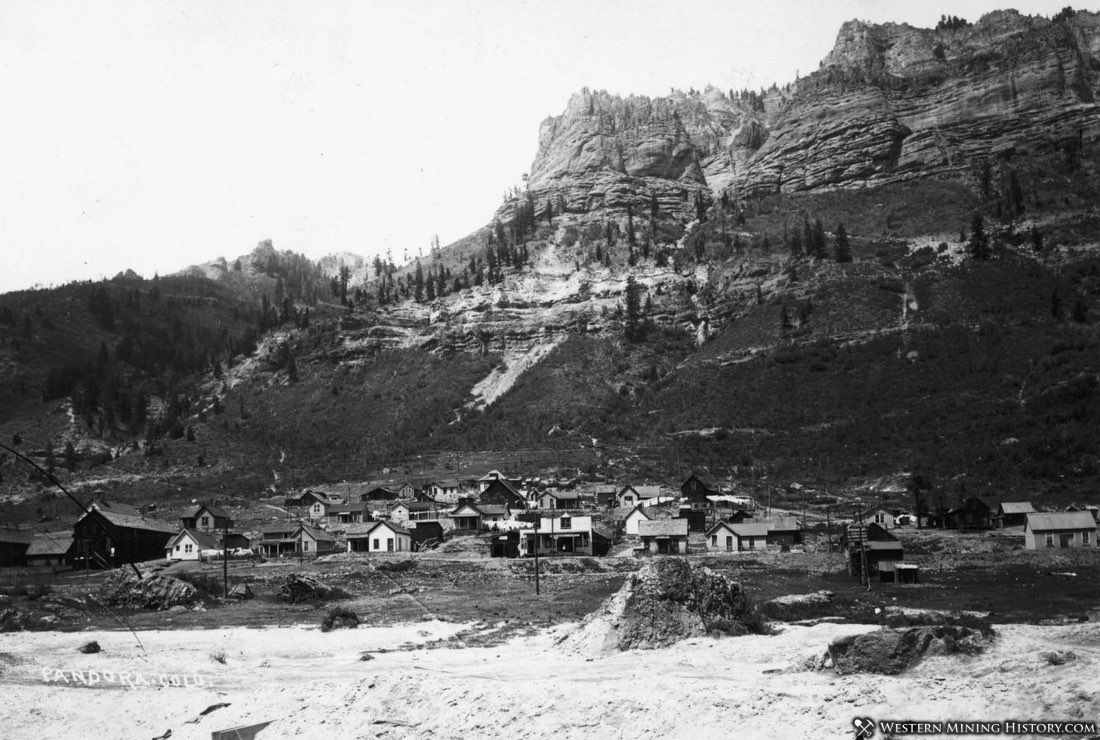
Date Settled: Around 1880
Status: Ghost Town
Pandora started as a small mining settlement near Telluride. By the late 1890s it had evolved into the district’s most important milling center. The last of the great mills closed in the late 1970s, and today Pandora is a ghost town with little left but the shuttered mill.
Placerville
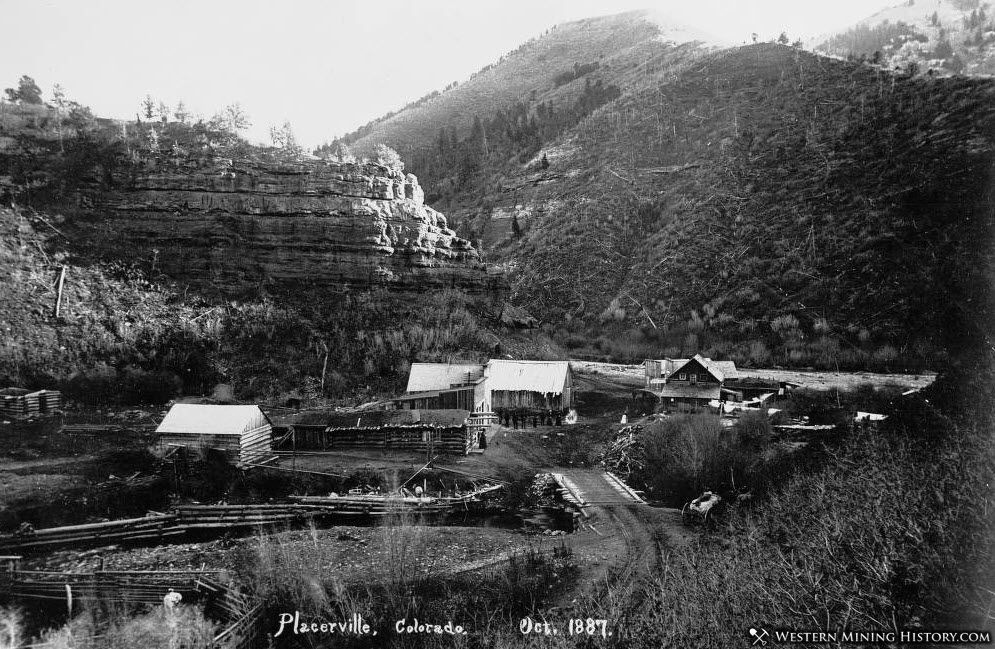
Date Settled: 1878
Status: Active Town
Placerville was a sleepy gold placer mining village until vanadium deposits were developed just after 1900. The town would go on to be one of the world’s top suppliers of vanadium. Today Placerville has a few historic buildings and is a popular housing area for nearby Telluride.
Smuggler
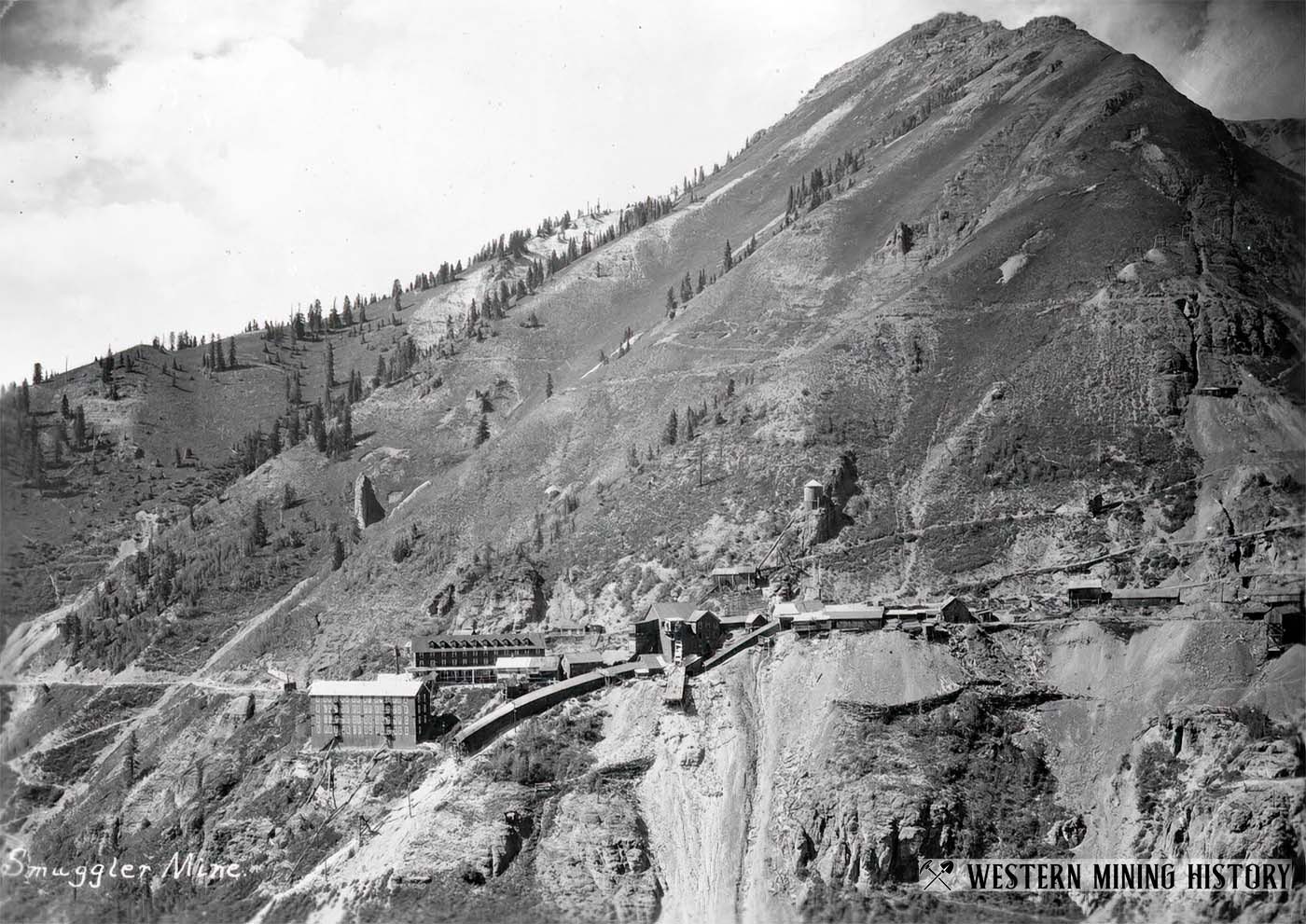
Date Settled: 1895
Status: Ghost Town
Smuggler was the company town built at the Smuggler-Union mine, one of the chief producers of the Telluride district. Smuggler was hit with more fatal accidents and strike-related violence than any other mine in this part of the state.
Telluride
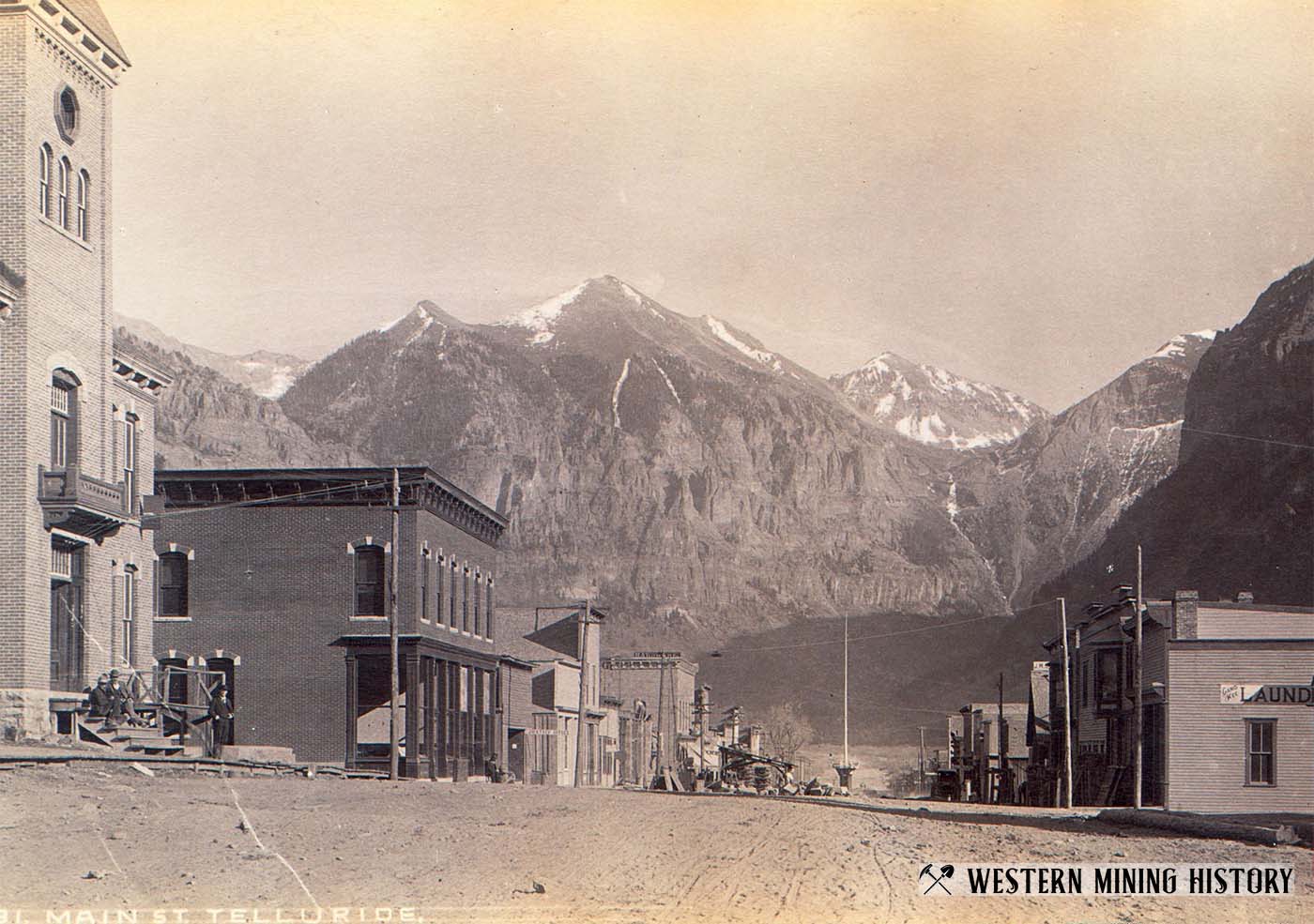
Date Settled: 1878
Status: Active Town
Telluride was the hub of one of Colorado’s premier mining regions. Mining continued here for a century but by the late 1970s most mines had shut down. As mining waned, Telluride redefined itself as a ski town.
Despite the cycles of boom and bust, the town retains its original Victorian charm. Its status as a national historic district since 1961 has helped protect around 300 buildings remaining from the original boom times.
Tomboy
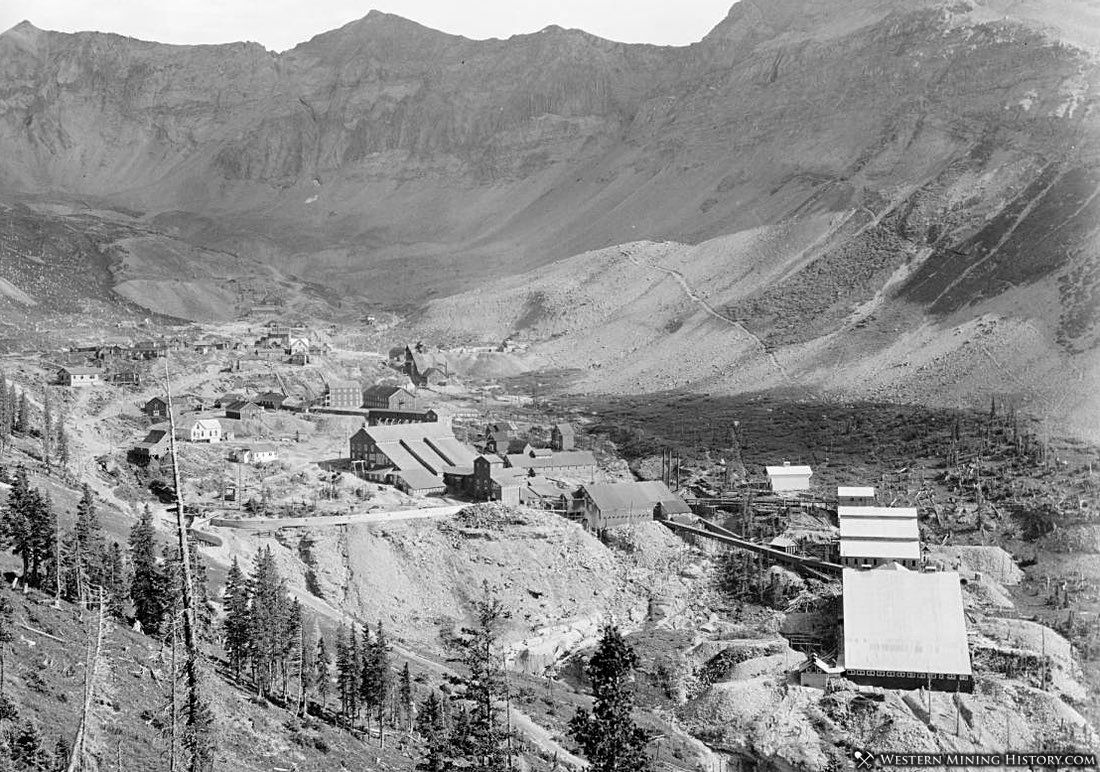
Date Settled: 1894
Status: Ghost Town
The Tomboy mine and camp was situated at over 11,500 feet in the aptly named “Savage Basin”. Hundreds of miners lived at the camp which was the social center of the district’s high elevation mines.
Tomboy had many amenities for its hundreds of employees including a YMCA with a bowling alley and tennis courts, and a club that held dances attended by Tomboy residents as well as residents from Telluride and surrounding mines.
Only the foundations of mine buildings remain today.
Summit County
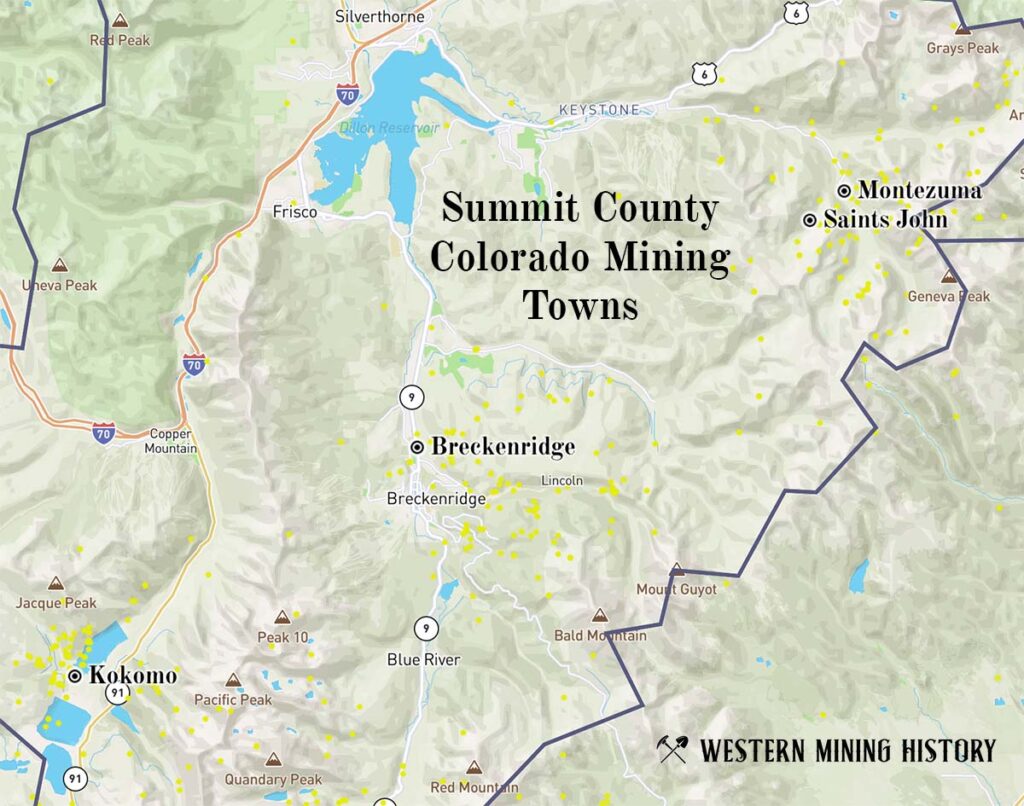
Breckenridge
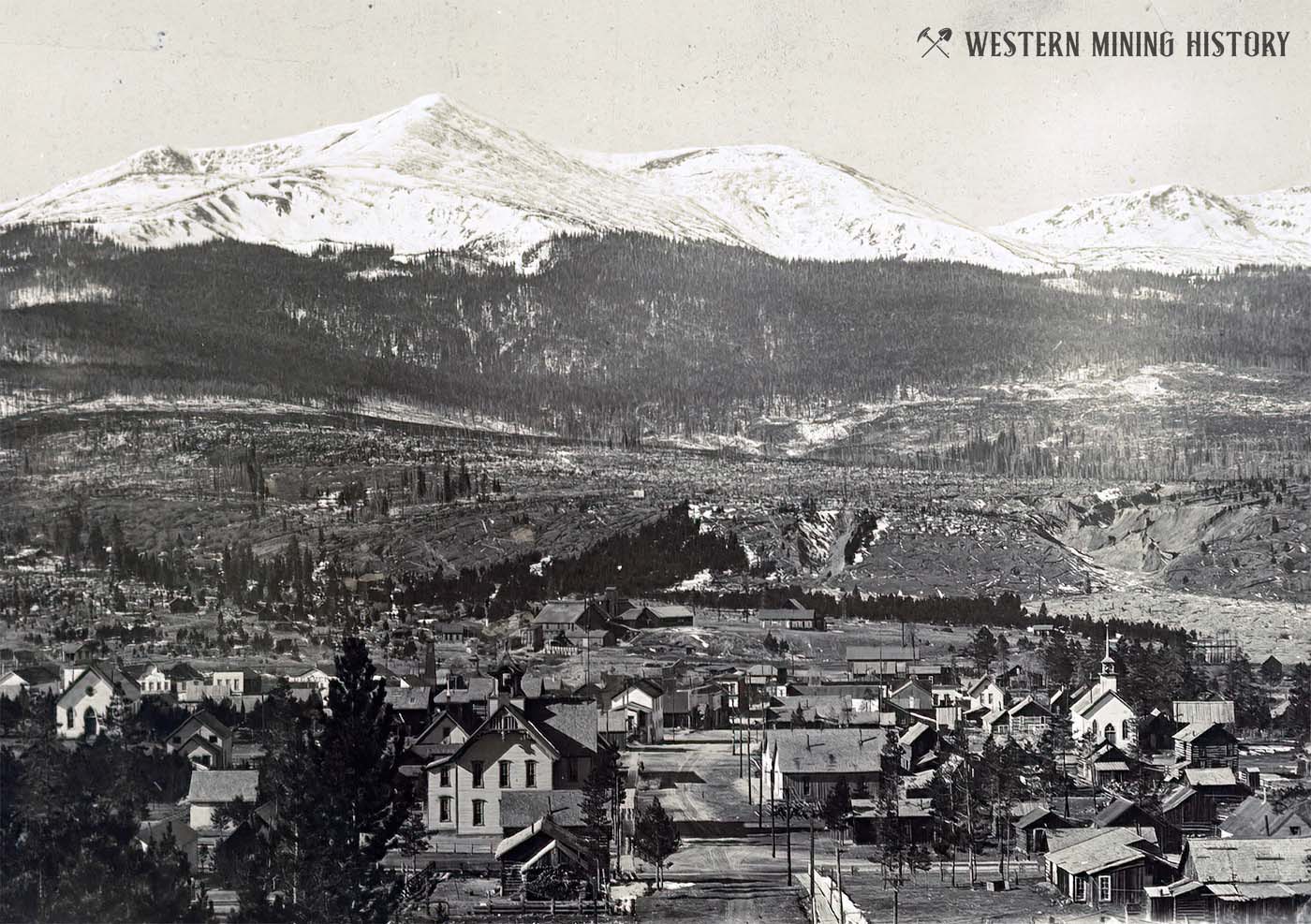
Date Settled: 1859
Status: Active Town
Breckenridge differs from the state’s other high-altitude mining towns of significance in that it was primarily a gold placer district rather than a lode mining district. It is also unique in it’s age – this was the first major settlement established across the continental divide during the Colorado Gold Rush.
Breckenridge has been an active town for more than 160 years, and is now a major resort and tourist area.
Kokomo
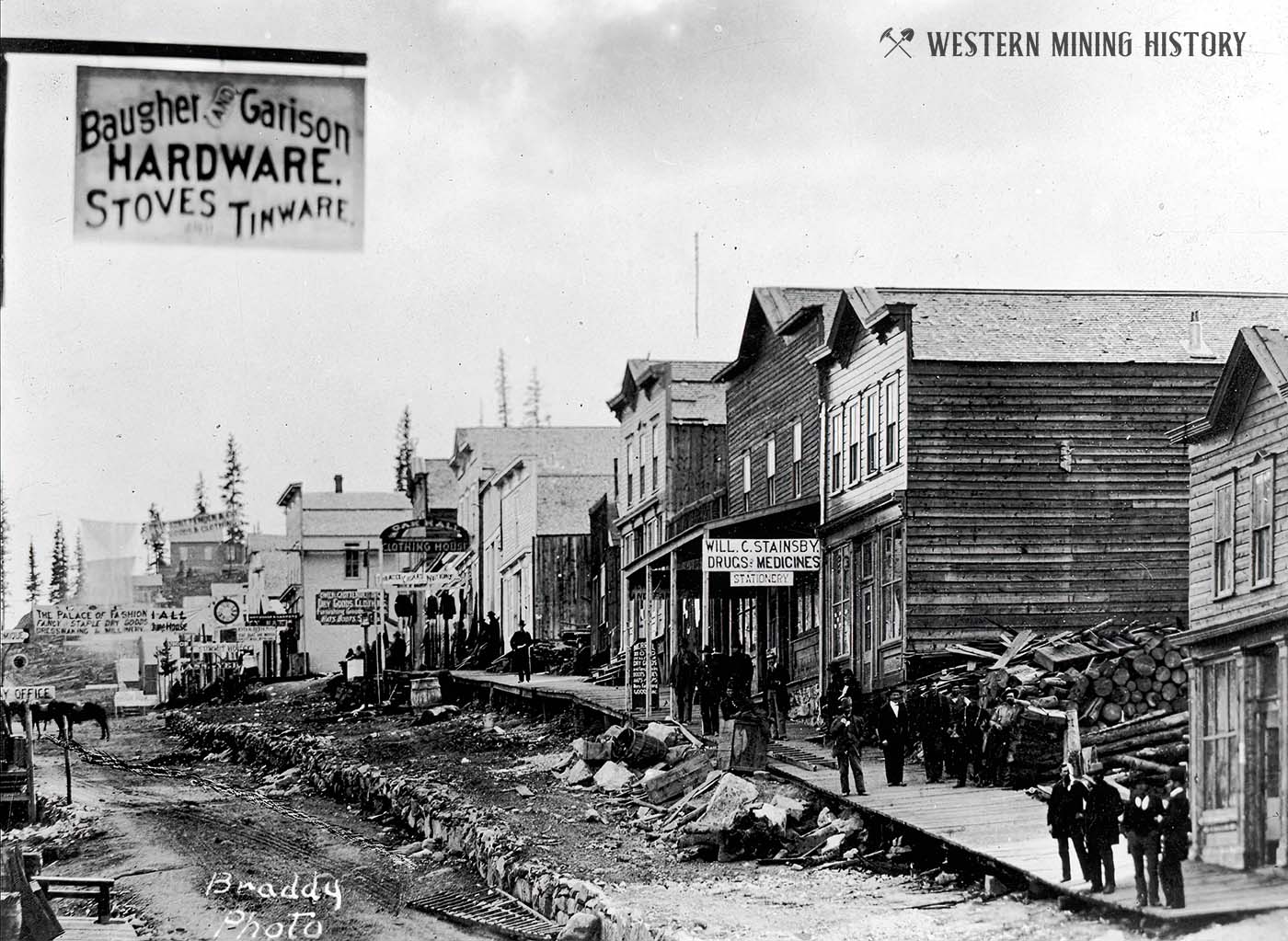
Date Settled: 1879
Status: Ghost Town
At an elevation of 10,700 feet, Kokomo was one of Colorado’s highest camps. Kokomo was a major boom town, with around 10,000 residents in 1881. Ultimately the town was abandoned and covered by the tailings of the nearby Climax mine.
Montezuma
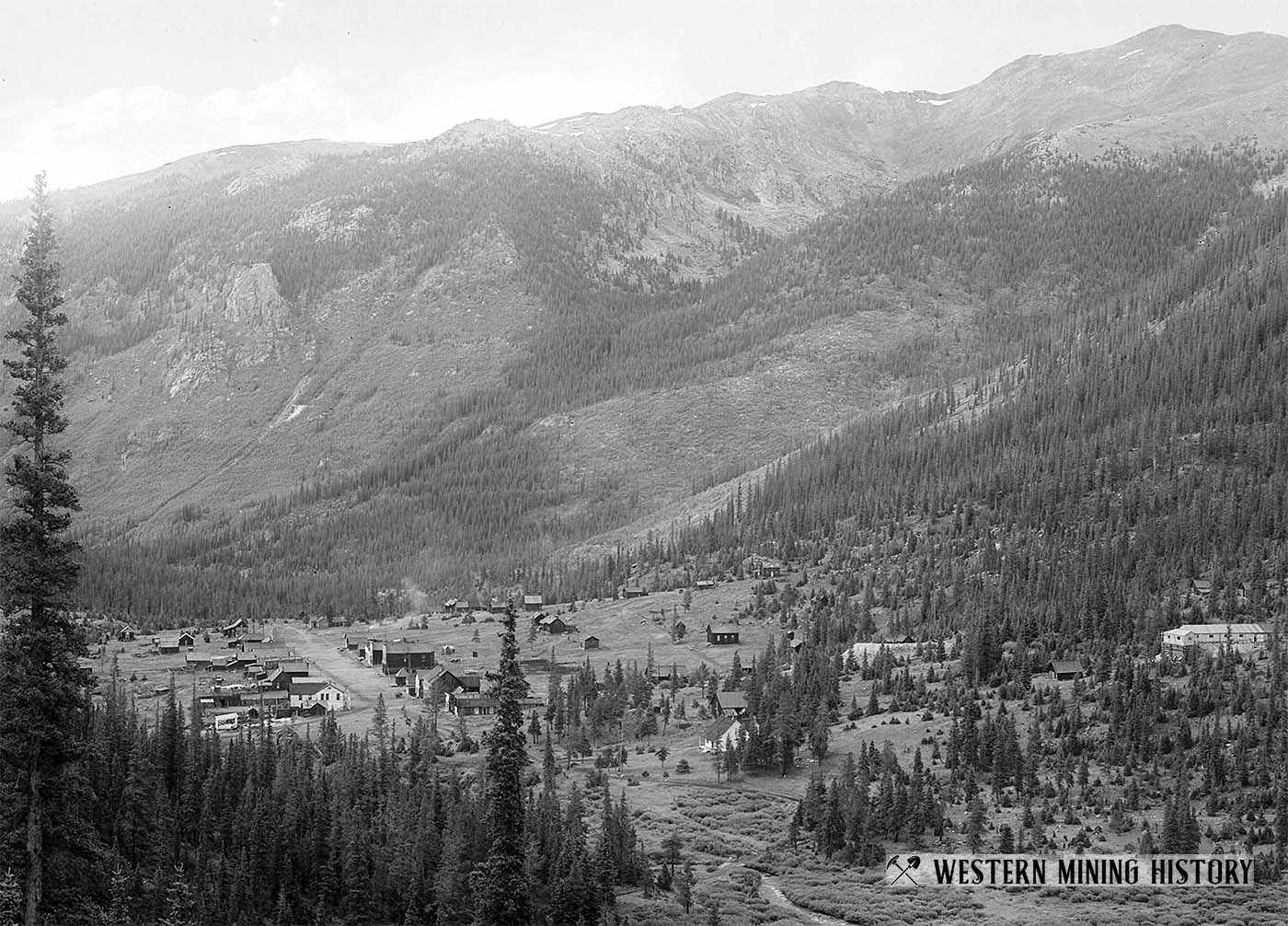
Date Settled: 1865
Status: Near Ghost Town
Montezuma was settled following nearby silver discoveries in 1865. It wasn’t until 1868, after the first road over Loveland Pass was completed that Montezuma started to grow. By 1869, Montezuma was the center of one of Colorado’s top mining districts.
The town of Montezuma was incorporated in 1881, and the first local newspaper was published in 1882. By the peak of the Colorado Silver Boom, the town reportedly had a population of around 10,000 people. The silver bust of 1893 brought an end to the boom at Montezuma.
Saints John
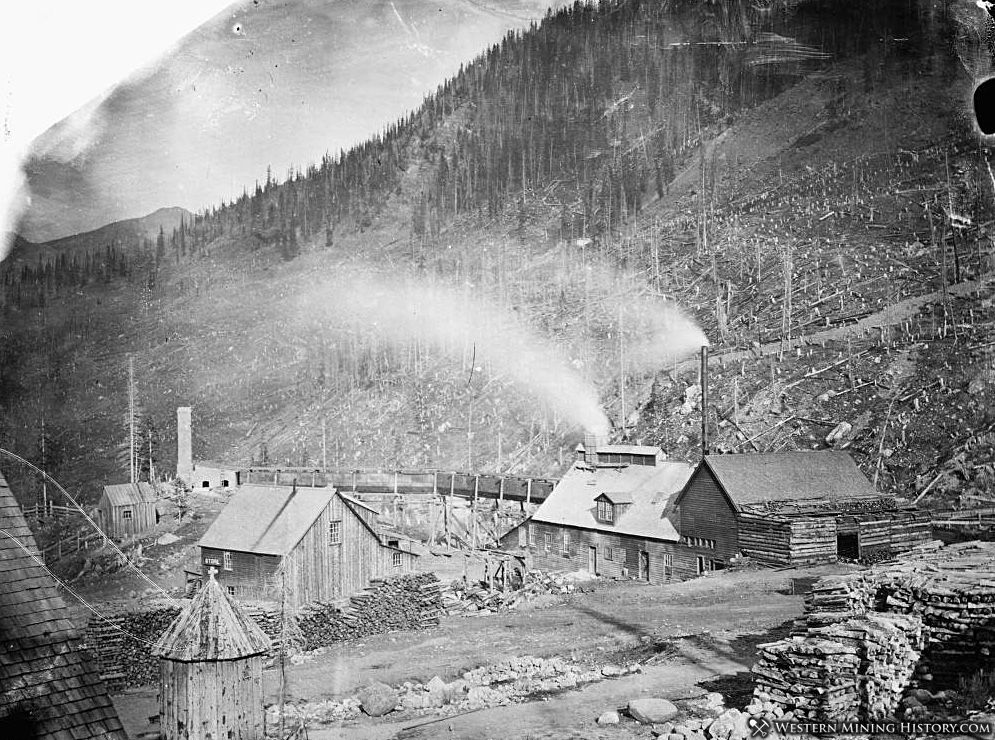
Date Settled: 1864
Status: Ghost Town
Saints John was mostly a company town built around the Saints John mine by Boston capitalists. Initially settled in the late 1860s, the town peaked between 1876 and 1881. By the turn of the century it was a ghost town other than a small crew that continued to work the mine intermittently until 1928.
Teller County
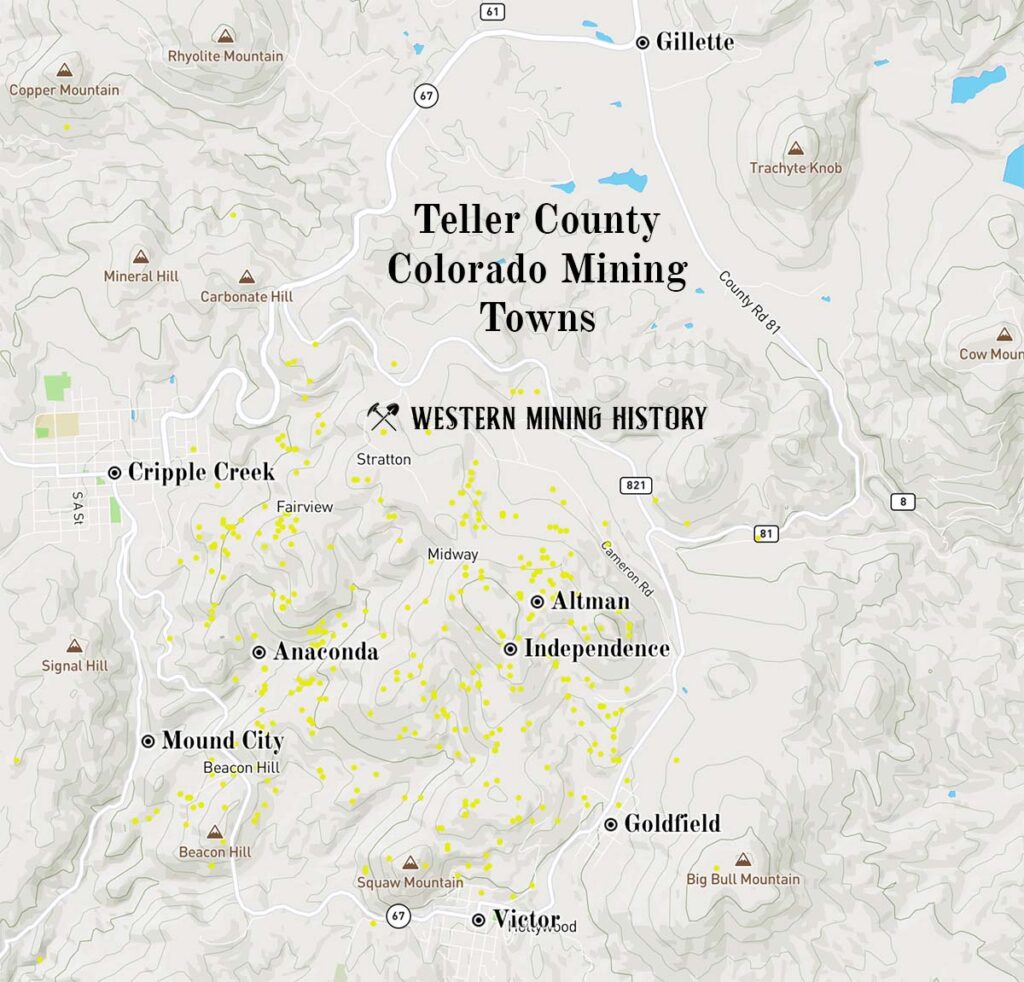
Altman
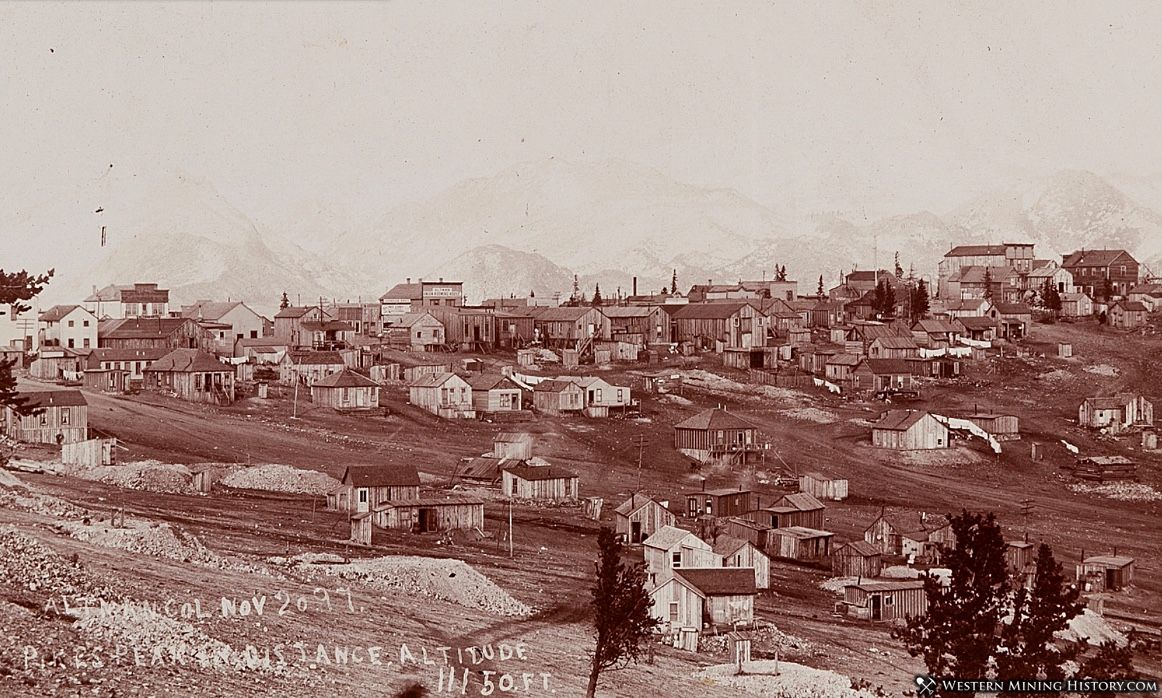
Date Settled: 1893
Status: Ghost Town
Altman was one of many towns that formed around the rich mines of the Cripple Creek District. The town was situated at the highest point in the district and covered most of the hill. The town site has been consumed by modern open-pit mining.
Anaconda
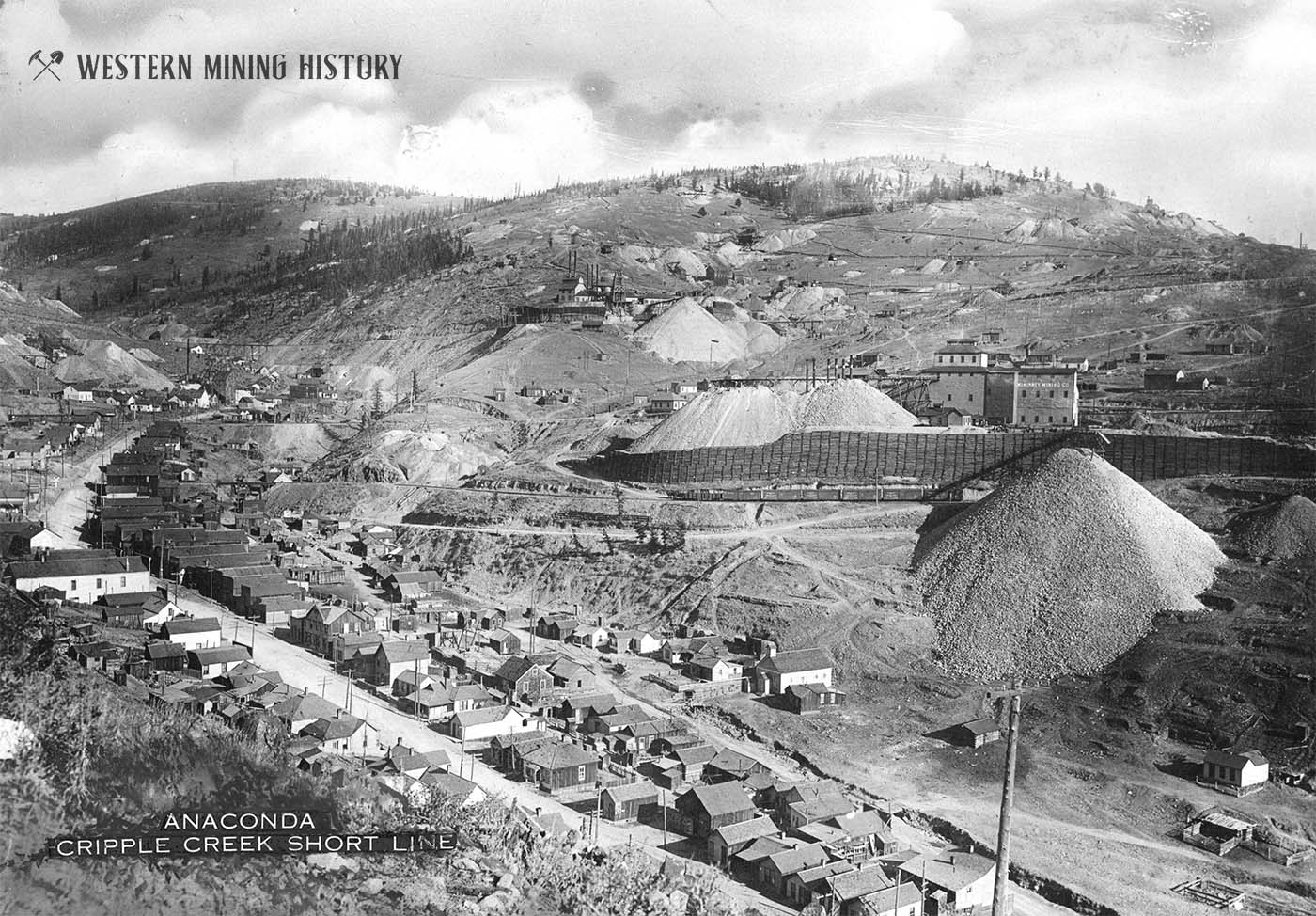
Date Settled: 1892
Status: Ghost Town
Anaconda built around some of the richest mines of the Cripple Creek District, including the Anaconda, Mary McKinney and Blue Bell mines. The town stretched over half a mile in Squaw Gulch. Most of this town site has been buried by tailings from a modern open-pit mine.
Cripple Creek
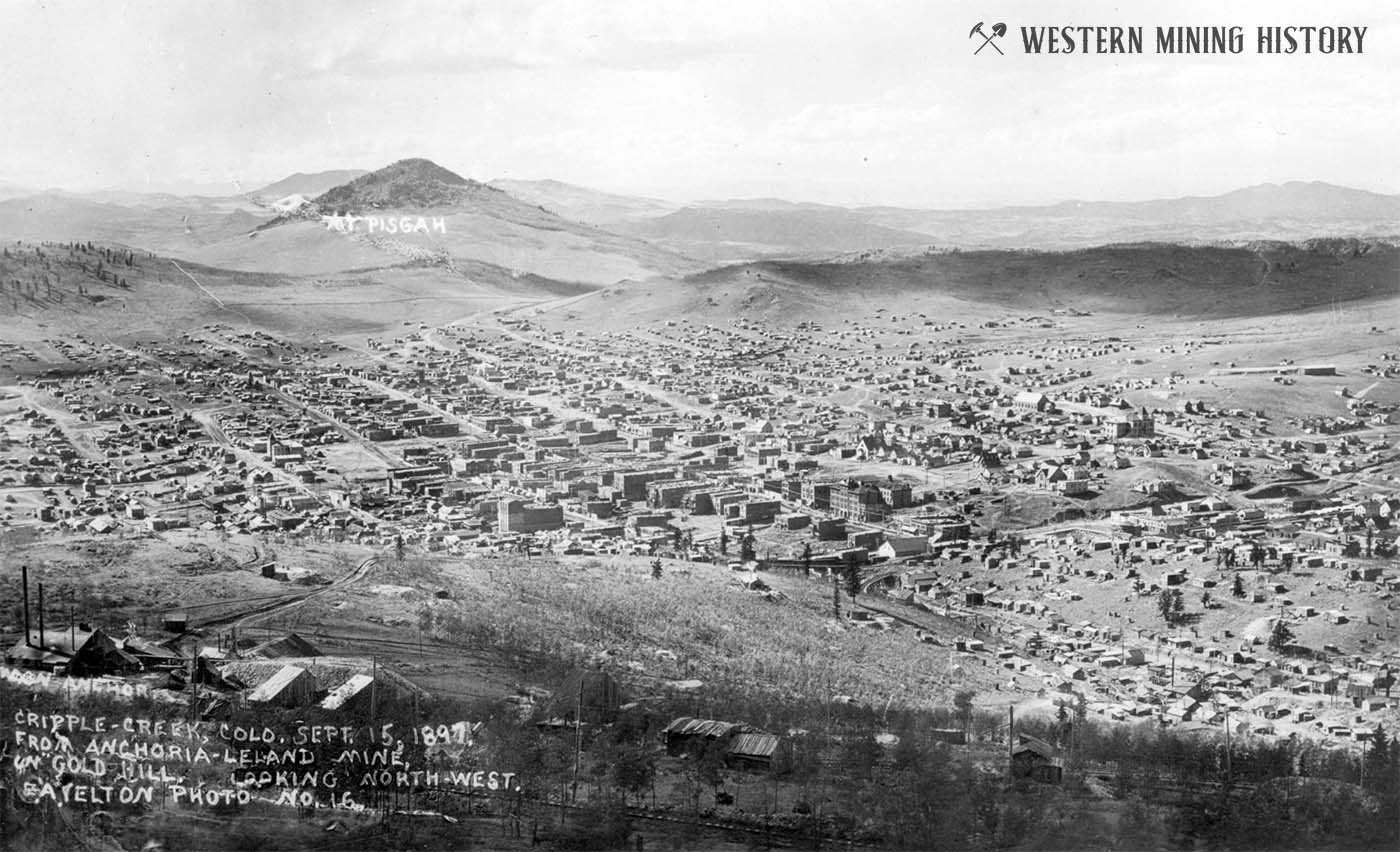
Date Settled: 1891
Status: Active Town
Cripple Creek was settled after gold discoveries in 1890. It would soon be one of the West’s greatest mining cities, and the Cripple Creek district would produce enough gold to become the second most valuable gold district in the U.S.
Cripple Creek’s economy was revitalized with the legalization of gambling in 1990. Today it is a popular tourist destination with many historic buildings.
Gillette
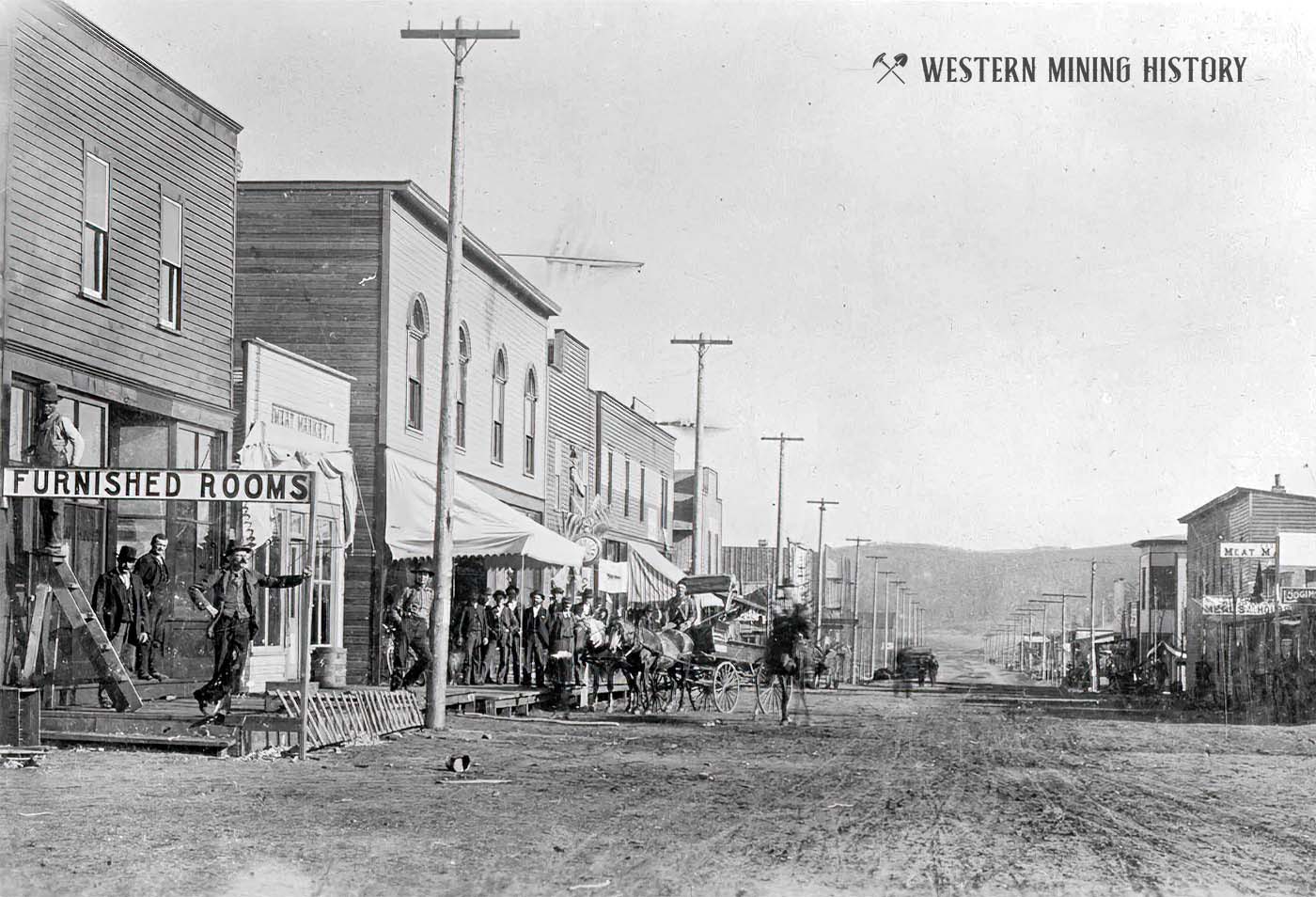
Date Settled: 1890s
Status: Ghost Town
Gillette was a supply and transportation center for the Cripple Creek District. It was known as a family-friendly town, in contrast to the wild and sometimes lawless mining camps.
Goldfield
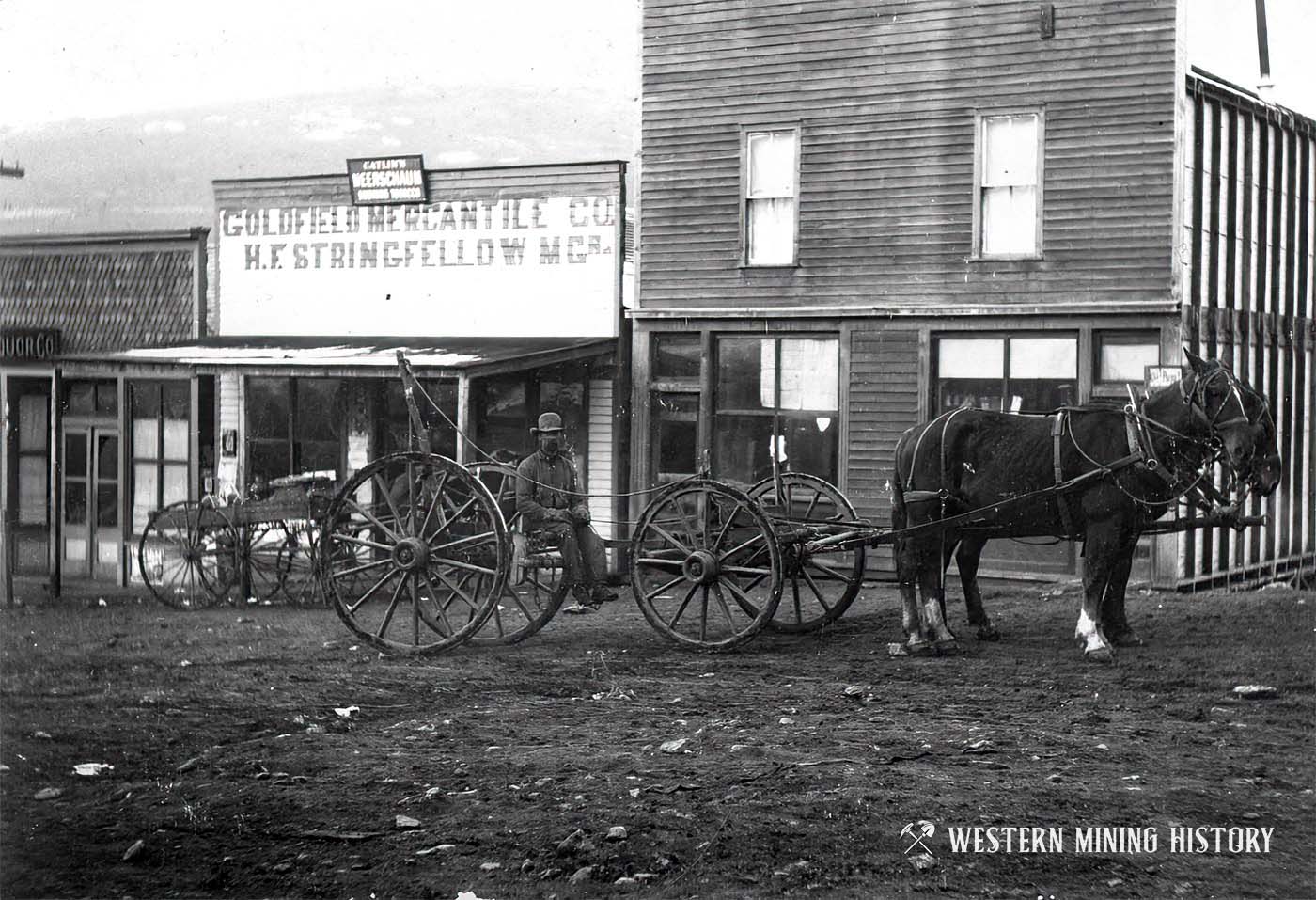
Date Settled: 1895
Status: Near Ghost Town
Goldfield was the third largest town in the Cripple Creek District with around 3,500 citizens at its peak in 1900. The town was originally built around the Portland mine which was one of the best producing mines in the entire district. Today the town still has around 40 residents and a small number of intact historic buildings.
Independence
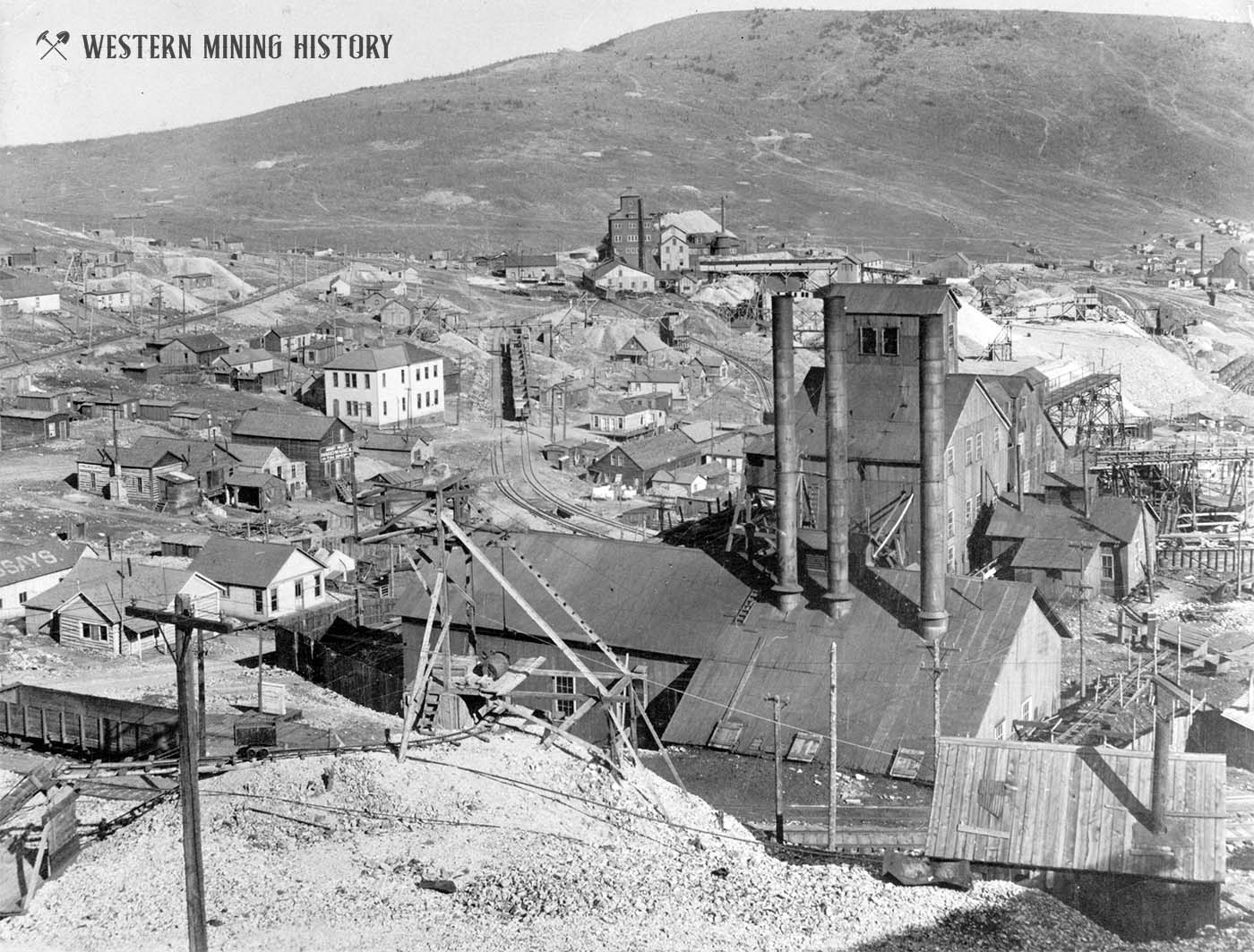
Date Settled: 1890s
Status: Ghost Town
Independence was one of numerous towns that formed around the rich mines of the Cripple Creek District. Like other nearby towns, the town site has been consumed by an open-pit mine.
Mound City
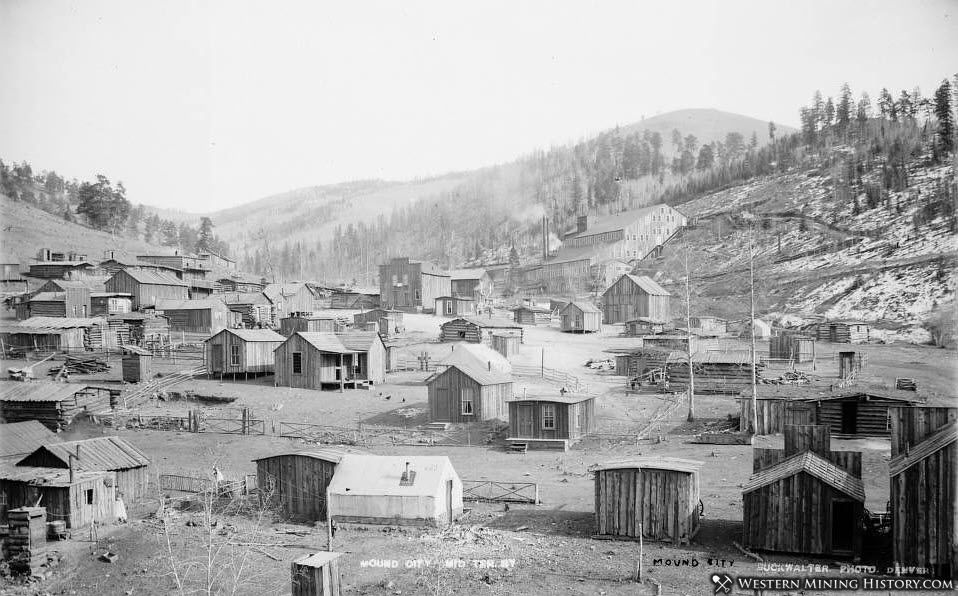
Date Settled: 1891
Status: Ghost Town
Mound City was one of four towns that popped up in Squaw Gulch following the Cripple Creek gold boom that started in 1890. The town was built around two large ore mills that serviced the mines of the Cripple Creek District. In 1900 Mound City had around 1,000 residents. Today it is a ghost town.
Victor
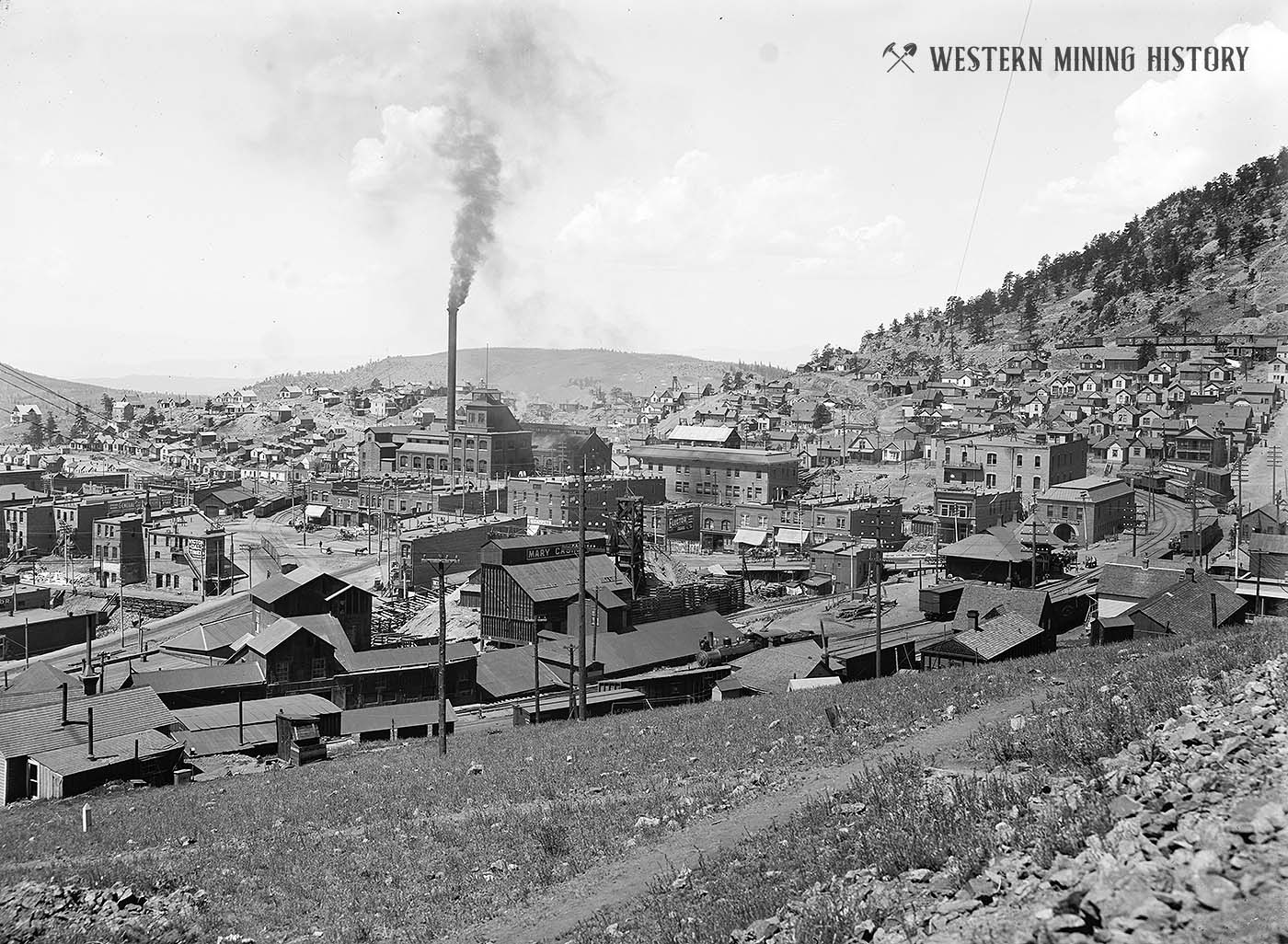
Date Settled: 1891
Status: Active Town
Victor was known as the Cripple Creek district’s “City of Mines”. One third of all the gold in the district came from the mines here. In contrast to Cripple Creek, which was the social and financial center of the district, Victor was the working class city where many of the miners lived.
Gambling was not legalized in Victor, and the town has maintained much of it’s historic character. Numerous substantial historic buildings make the town one of the West’s best destinations to experience mining history.
Related: Colorado Mining Towns Index
Related: Best Historical Photos: Incredible Colorado Mining Scenes